[ad_1]
Zinedine Zidane le dijo una vez a Vogue mientras modelaba: «No es que esté haciendo otra cosa, es una secuela». Y tenía razón: el elegante creador de juegos no se vería fuera de lugar en la pasarela Tricolor Camiseta de Francia en la que ganó la Copa del Mundo, o la clásica camiseta blanca del Real Madrid que usó al levantar la Copa de la Liga de Campeones.
Los diseñadores y modelos en las pasarelas del mundo de alta costura puede volverse loco por la cultura del fútbol, pero todos los fanáticos del deporte conocen la emoción de ver una nueva camiseta increíble.
Con la ayuda de los autores y editores de fútbol de ESPN de todo el mundo, hemos evaluado los 101 mejores kits de todos los tiempos a lo largo de los años. Tomamos en cuenta tanto el club como el equipo nacional y observamos sus uniformes de local, visitante y tercer cambio de acuerdo con sus preferencias individuales.
Cuando se trata de algo tan popular como las camisetas de fútbol, todos tendrán su opinión, y este ranking no es diferente. Pero como celebración de la forma de arte, todos podemos disfrutar de esperar para volver a los estadios.
– ESPN +: transmite ESPN FC TV y 30 por 30: Soccer Stories diariamente
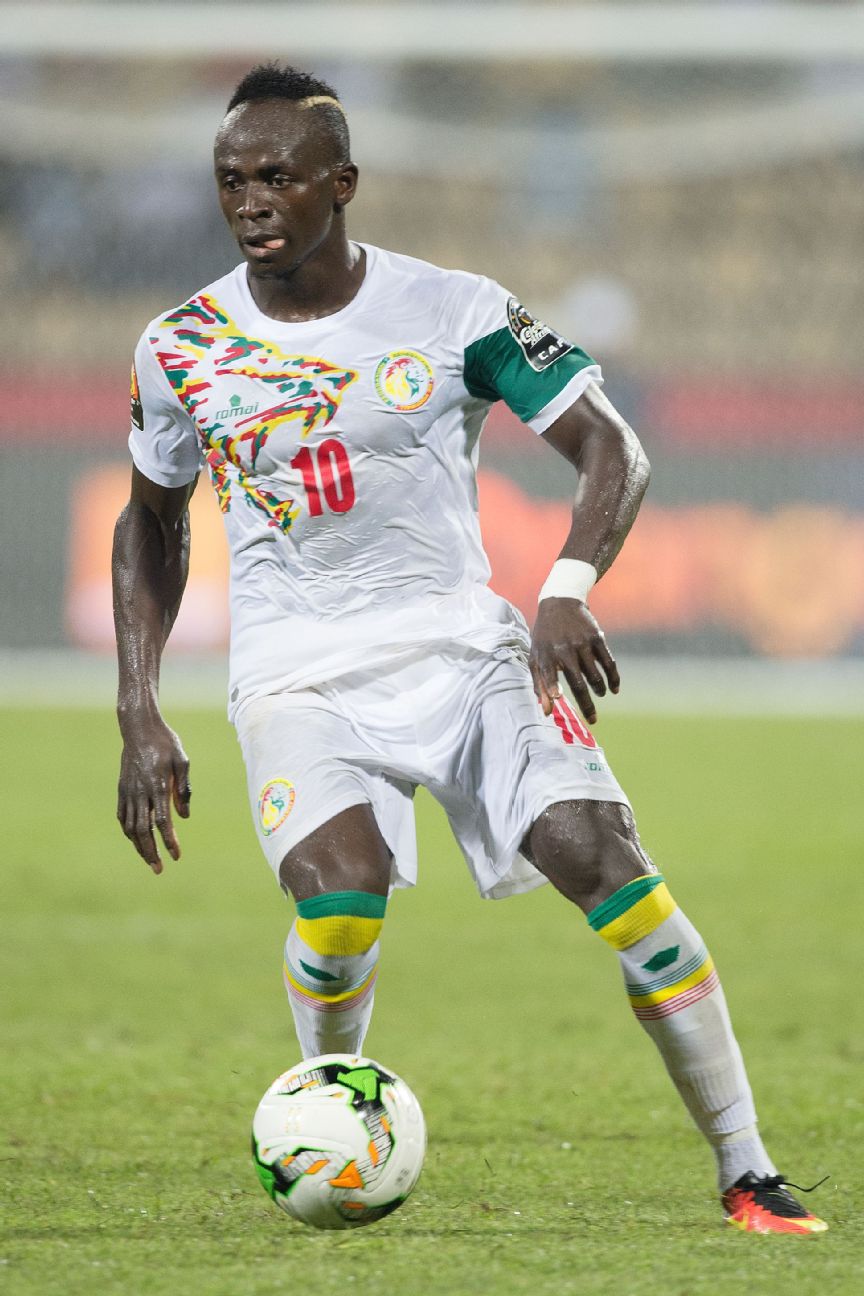
101. SENEGAL (en casa)
Estaciones gastadas: Copa Africana de Naciones 2017
Jugadores notables en este kit: Sadio Mane (foto), Kalidou Koulibaly, Keita Balde
El fabricante de kits con sede en los Emiratos Árabes Unidos, Romai, solo ha fabricado un conjunto de kits para Senegal en su oferta de corta duración, pero esta camiseta de 2017 con su león rugiente en el hombro es una belleza. El león es un guiño al apodo del equipo «Les Lions de la Teranga» Teranga Una palabra usada en Senegal que significa hospitalidad, calidez y desinterés. Mane & Co. fue a Camerún en cuartos de final.
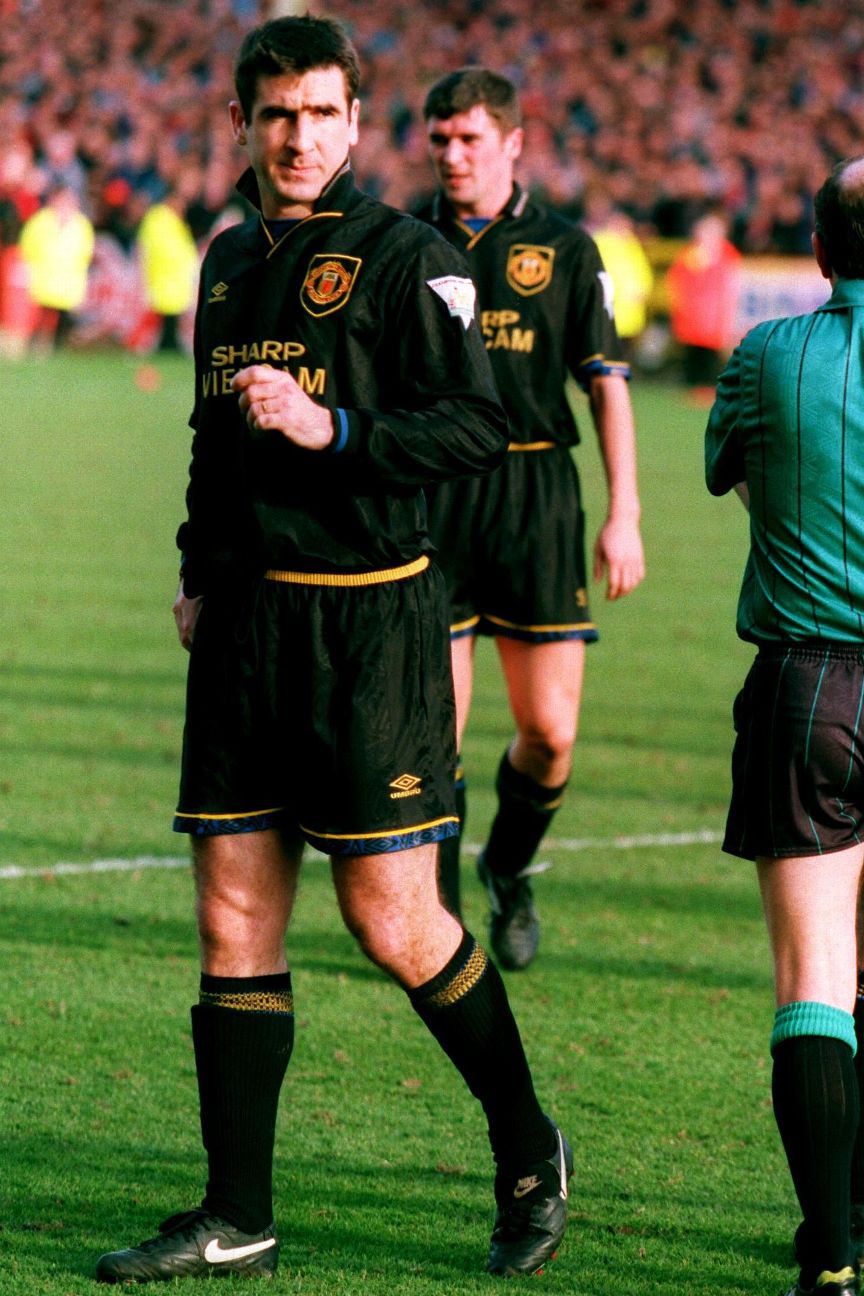
100º MANCHESTER UNITED (desaparecido)
Estaciones gastadas: 1993-95
Jugadores notables en este kit: Eric Cantona (en la foto), Ryan Giggs, Roy Keane y Paul Scholes
El Manchester United señaló su estatus como el equipo más formidable de la Premier League al usar esta camiseta negra de visitante con un borde amarillo. El uniforme sin duda afectó a Cantona: las tres tarjetas rojas de la Premier League para el United llegaron mientras las usaba, más conocido cuando fue noqueado en el Crystal Palace en 1995 y pateó un remolque. recibió una prohibición de ocho meses. Se le muestra aquí después de recibir una tarjeta roja en Swindon y pavonearse hacia el vestuario en su estilo característico con el cuello levantado.
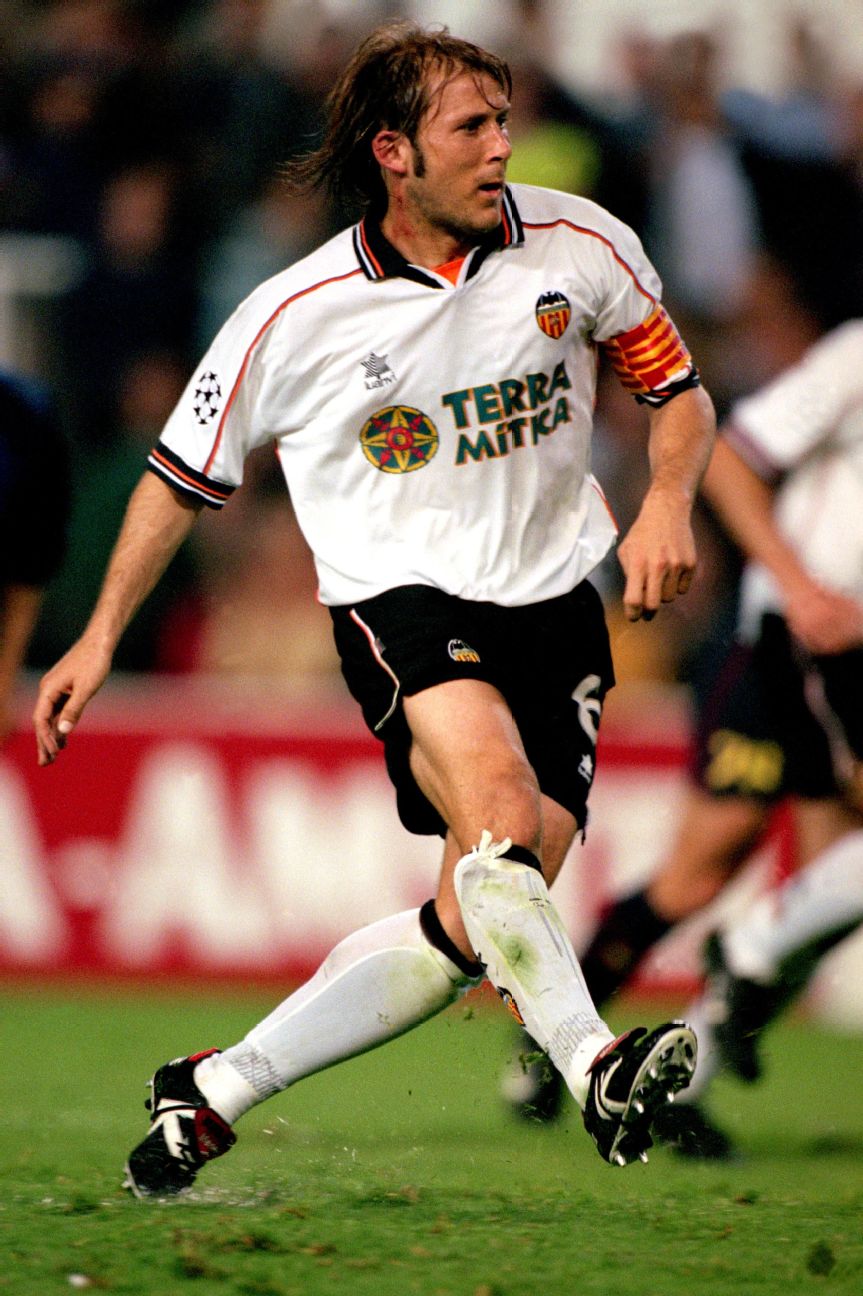
99. VALENCIA (en casa)
Estaciones gastadas: 1999-2000
Jugadores notables en este kit: Gaizka Mendieta (en la foto), Claudio López, Miguel Ángel Angulo
Mendieta encabezó el centro del campo de Valencia con esta camiseta blanca con adornos naranjas y negros, patrocinada por un parque temático que acababa de abrir en la región. Mendieta ahora trae el mismo estilo a la pista de baile que un DJ de club.
98º REAL MADRID (desaparecido)
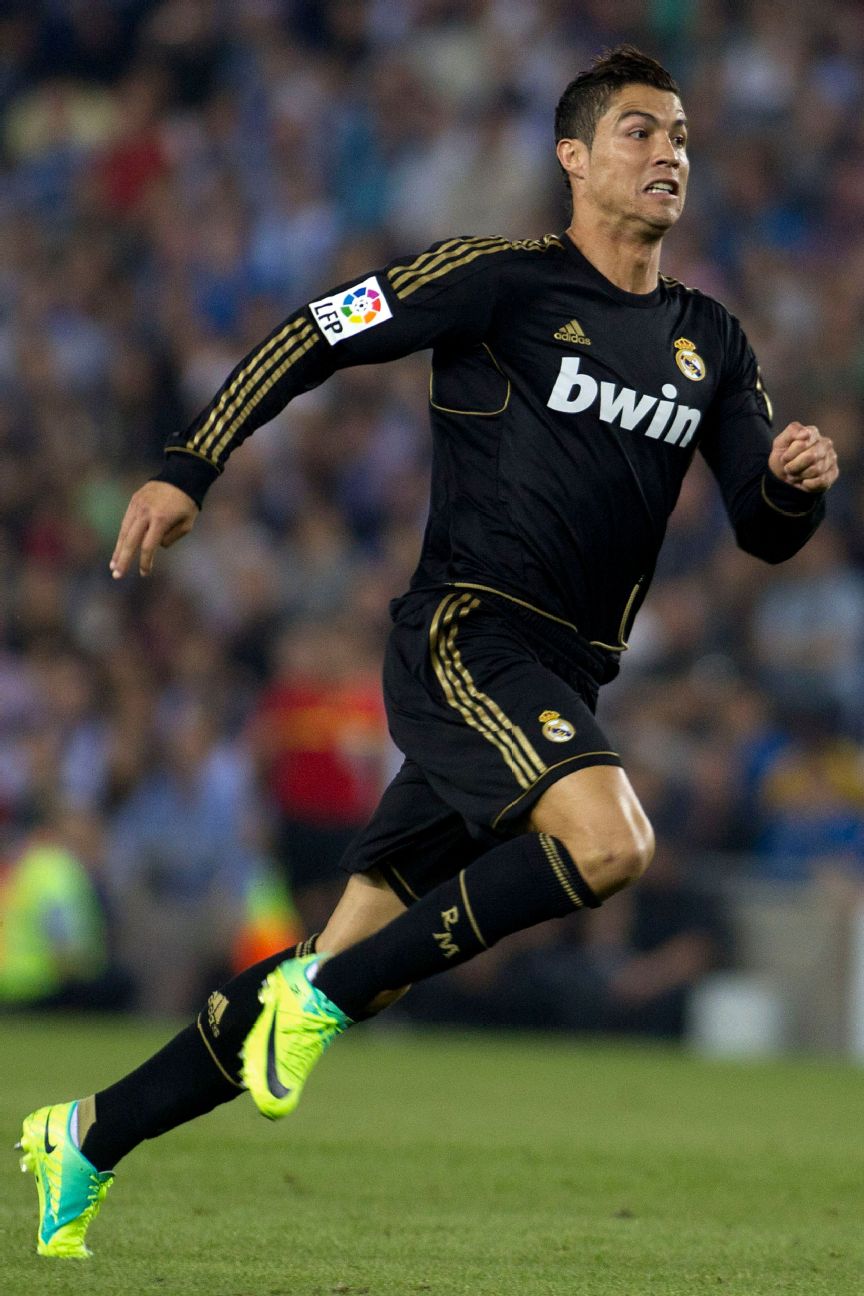
Estaciones gastadas: 2011-12
Jugadores notables en este kit: Cristiano Ronaldo (foto), Sergio Ramos, Karim Benzema, Mesut Ozil
Cualquier kit con oro llamará nuestra atención. Real siempre parece producir buenos kits de distancia, pero este delgado esfuerzo negro con estas icónicas tres rayas Adidas en dorado es uno de los mejores. El monograma del club en los calcetines también es un buen toque.
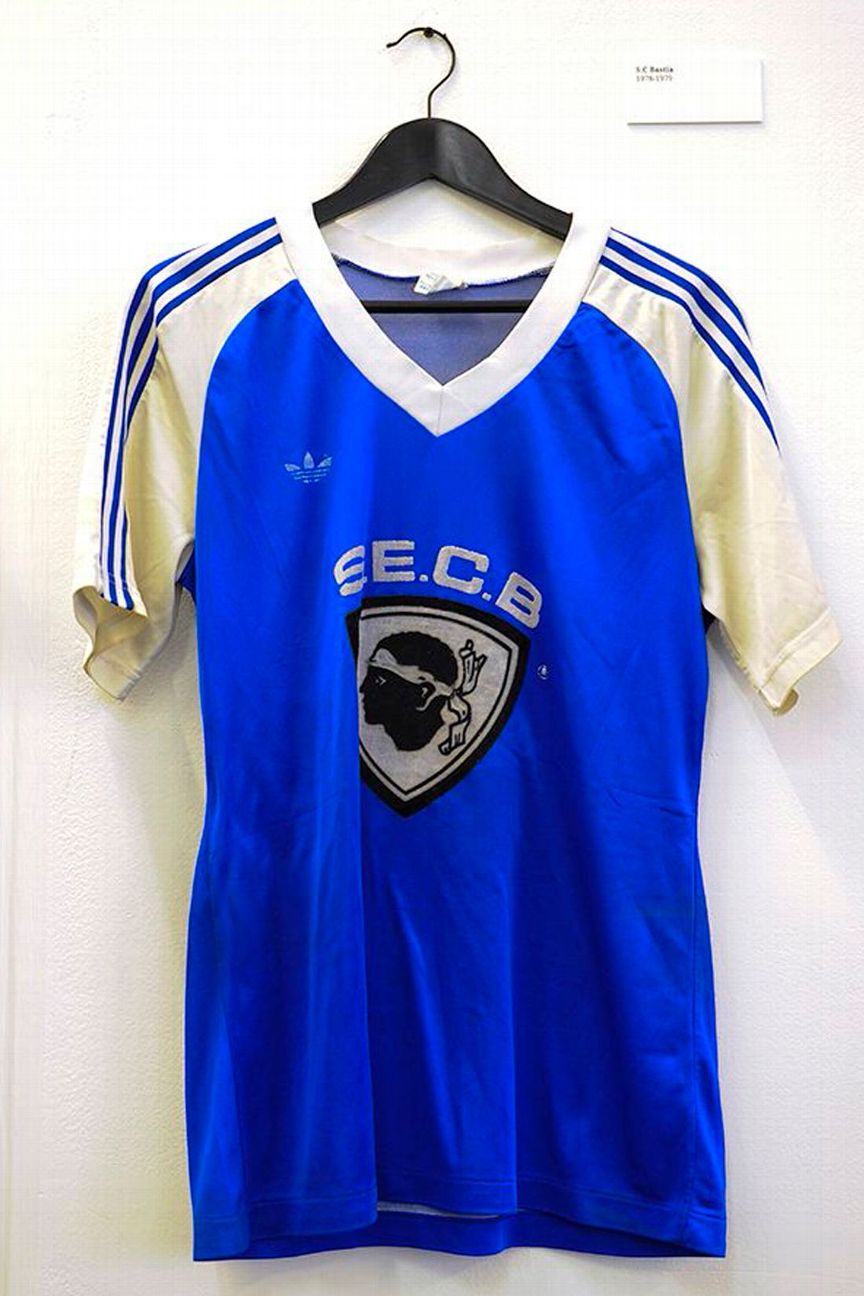
97. BASTIA (en casa)
Estaciones gastadas: 1977-78
Jugadores notables en este kit: Johnny Rep
Después de que la ex estrella de Ajax y Valencia firmara un golpe de transferencia que contrató al extremo holandés Johnny Rep, que era tan talentoso como su nombre, ayudó al club corso Bastia a hacer una aparición sorprendente en la final de la Copa de la UEFA de 1978 Perdieron ante el PSV Eindhoven, pero su escudo de armas ahora ha sido reconocido en toda Europa por estar orgulloso de llevarlo sobre el pecho de los jugadores.
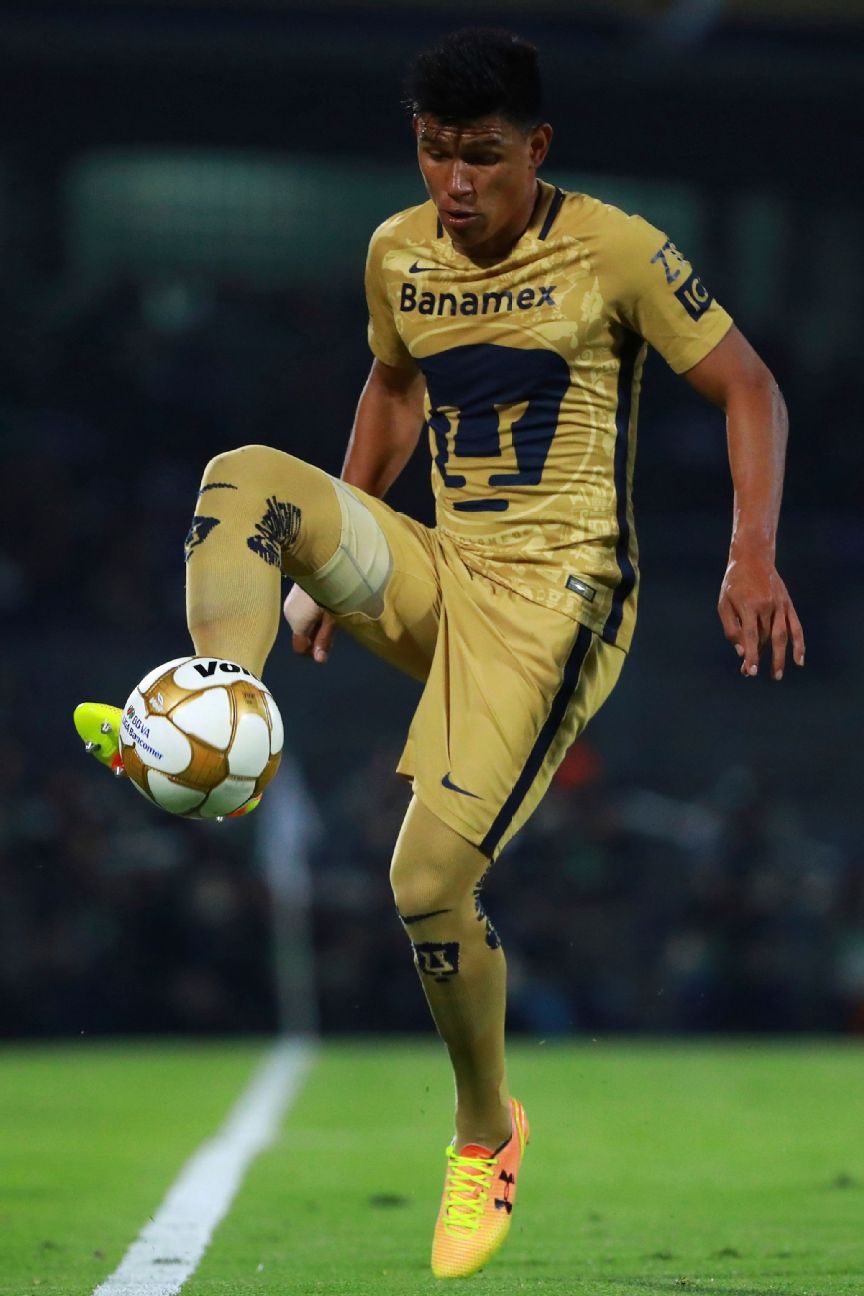
96. PUMAS UNAM (en casa)
Estaciones gastadas: 2016-17
Jugadores notables en este kit: Jesús Gallardo (en la foto), Nicolas Castillo
No es una temporada inolvidable (sexta en Apertura, 17 en Clausura), pero el kit de casa de Pumas, inspirado en el mural en la biblioteca de la Universidad Nacional Autónoma de México, donde se fundó el equipo en la década de 1950, hace que este kit sea rico. de patrimonio.
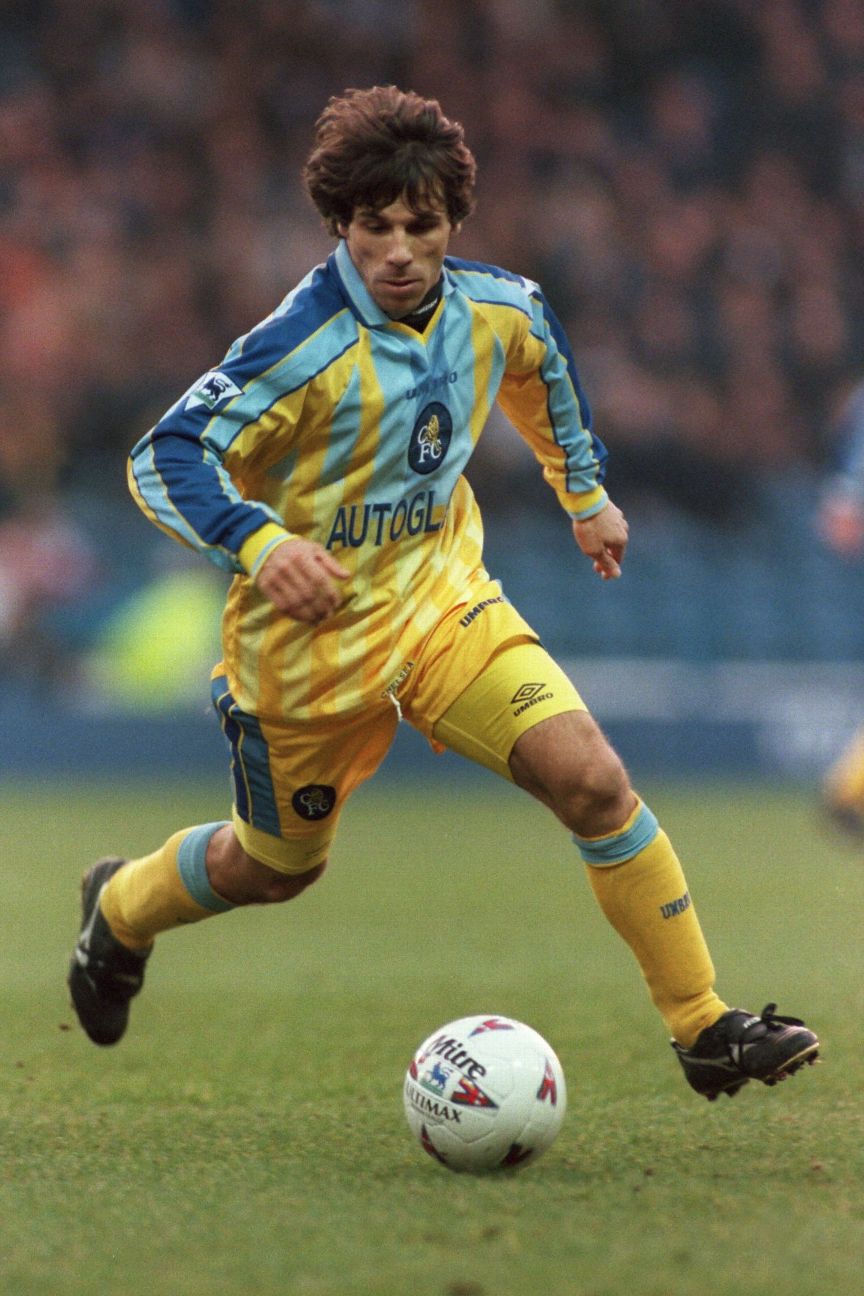
95. CHELSEA (lejos)
Estaciones gastadas: 1997-98
Jugadores notables en este kit: Gianfranco Zola (foto), Ruud Gullit, Gianluca Vialli
Este kit realmente no debería funcionar debido a sus elementos que chocan y su diseño llamativo, pero de alguna manera funciona. Al igual que el equipo de Chelsea en ese momento, fue un poco desordenado (el manager de jugadores Gullit fue despedido a mitad de la temporada), pero también fue un éxito (ganaron la Copa de la Liga y la Copa de los Ganadores de la Copa). Es Chelsea.

94. WOLVERHAMPTON WANDERERS (en casa)
Estaciones gastadas: 1977-79
Jugadores notables en este kit: George Berry (en la foto), John Richards
Ningún club ofrece kits de oro como Wolves, especialmente los jerseys de mediados a fines de la década de 1970, con el gran collar negro y tres lobos en el centro del cofre. Ganaron la Copa de la Liga en 1974 en una versión de la misma, pero Umbro puso logotipos negros en las mangas para que realmente se destaque.
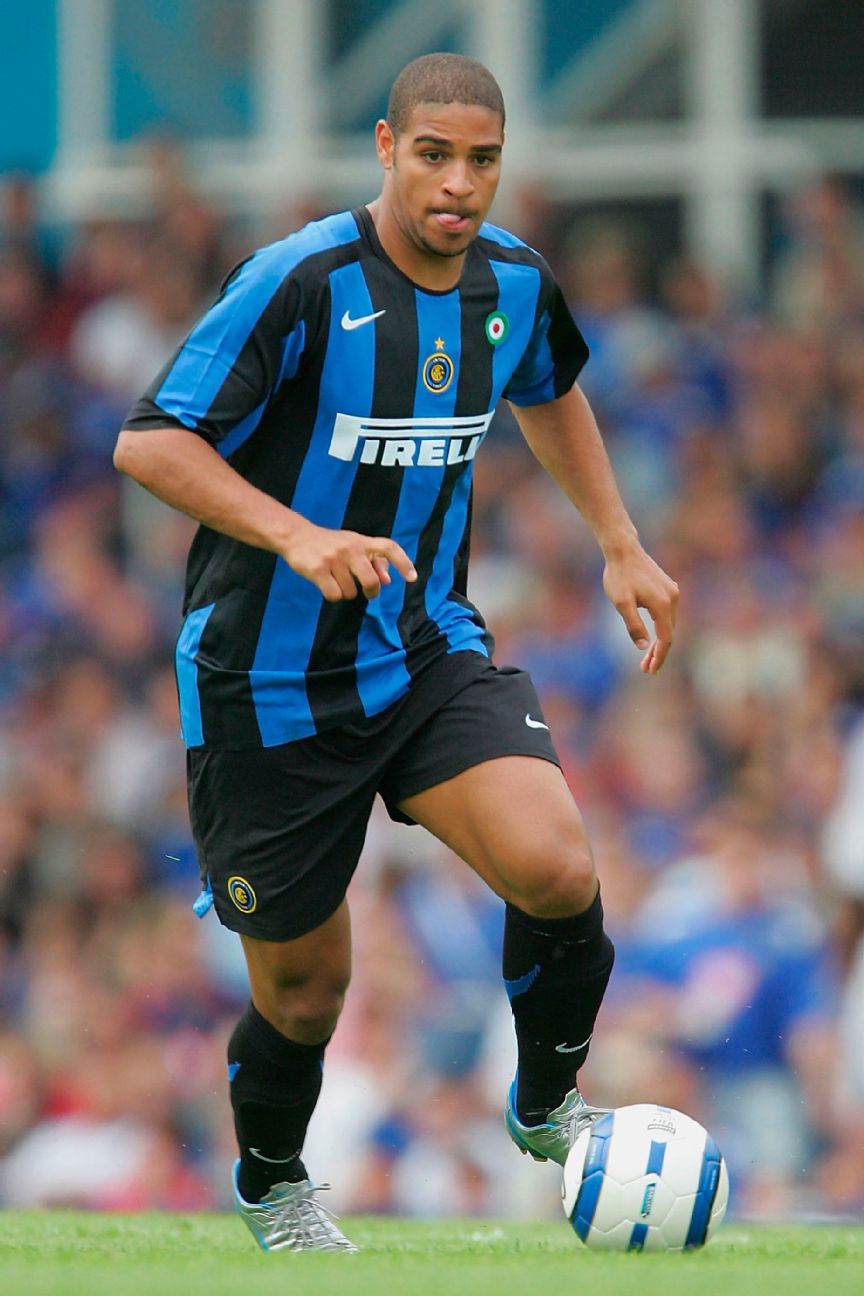
93. INTER MILAN (en casa)
Estaciones gastadas: 2005-06
Jugadores notables en este kit: Adriano (en la foto), Javier Zanetti, Luis Figo
Puedes elegir casi cualquier ícono Inter Nerazzurri Racha local, pero fue tan bueno que ganaron los agudos nacionales de la Serie A, Coppa Italia y Supercoppa Italiana.
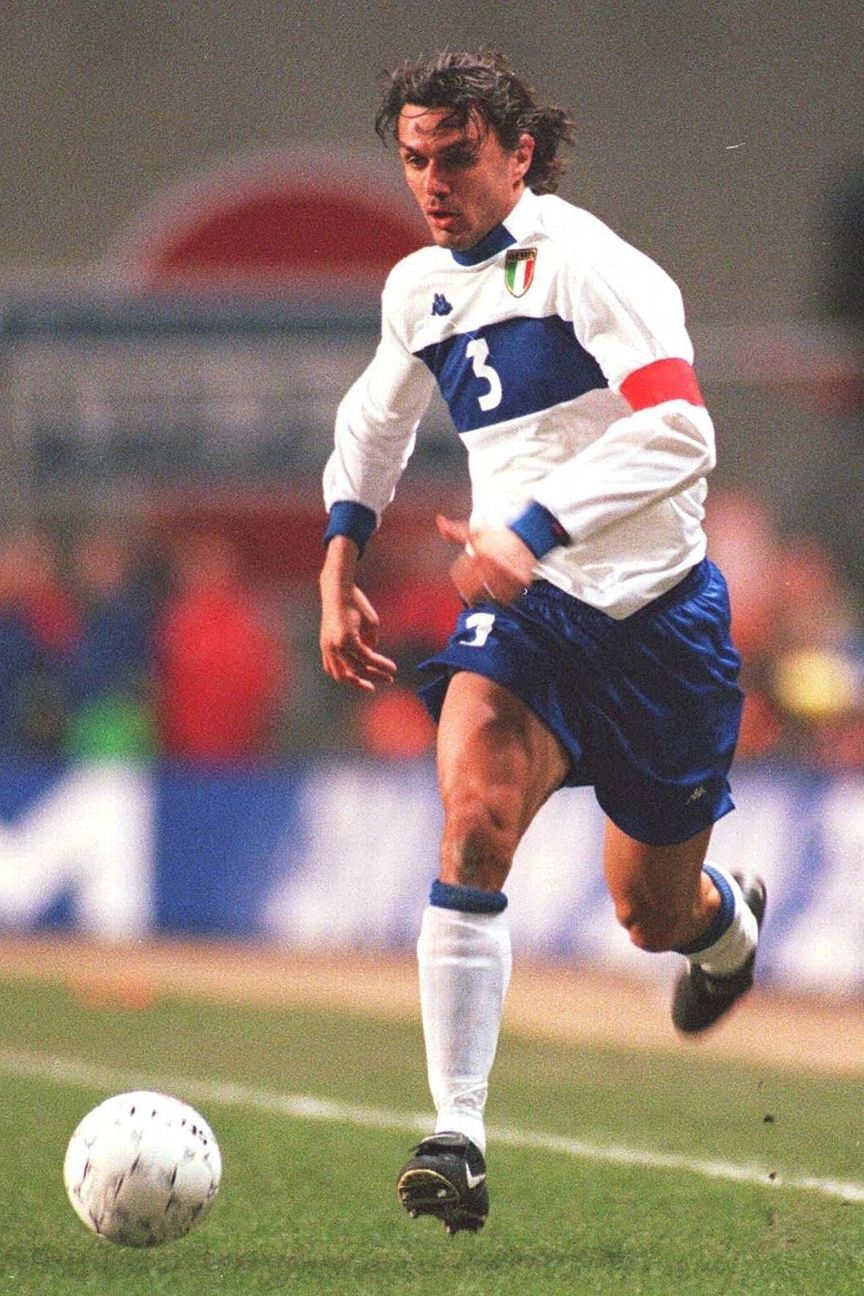
92. ITALIA (lejos)
Estaciones gastadas: 1999
Jugadores notables en este kit: Paolo Maldini (foto), Alessandro Del Piero, Enrico Chiesa
Al igual que Maldini, los primeros kits italianos de Kappa fueron sobresalientes en su simplicidad y al mismo tiempo asombrosamente hermosos. La franja azul en el cofre blanco fue un guiño a su pasado, siendo el blanco el primer color que el equipo usó en 1910.
91. BÉLGICA (lejos)
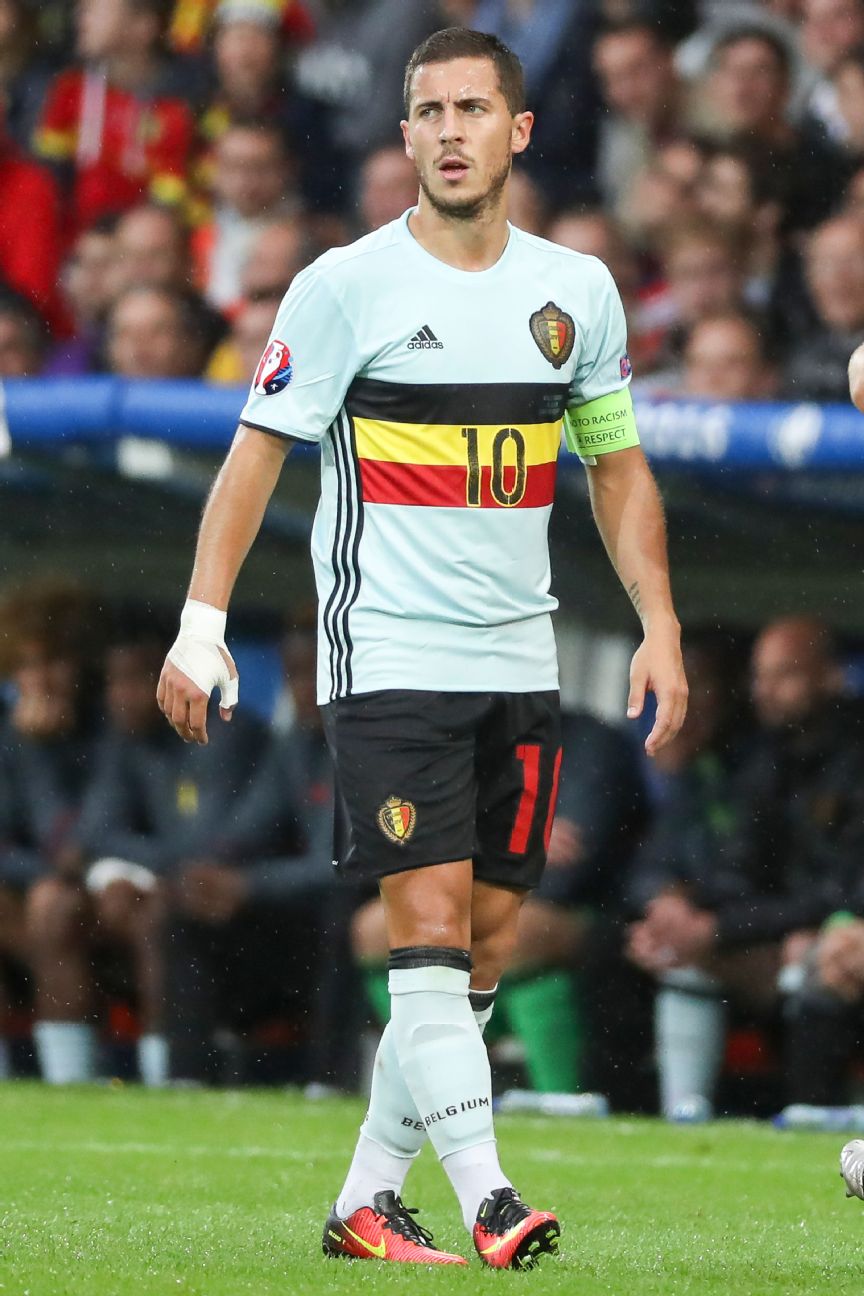
Estaciones gastadas: Euro 2016
Jugadores notables en este kit: Eden Hazard (foto), Kevin De Bruyne, Romelu Lukaku
A los fanáticos y neutrales les encantó esta camiseta antes del torneo en Francia, pero a su manager Marc Wilmots no le gustó demasiado. Comparó el diseño con el de una camiseta de ciclismo. El Tour de Francia de su equipo terminó en cuartos de final con una derrota ante Gales. Por una razón que nadie puede explicar, los números en los cortos fueron absolutamente masivos.
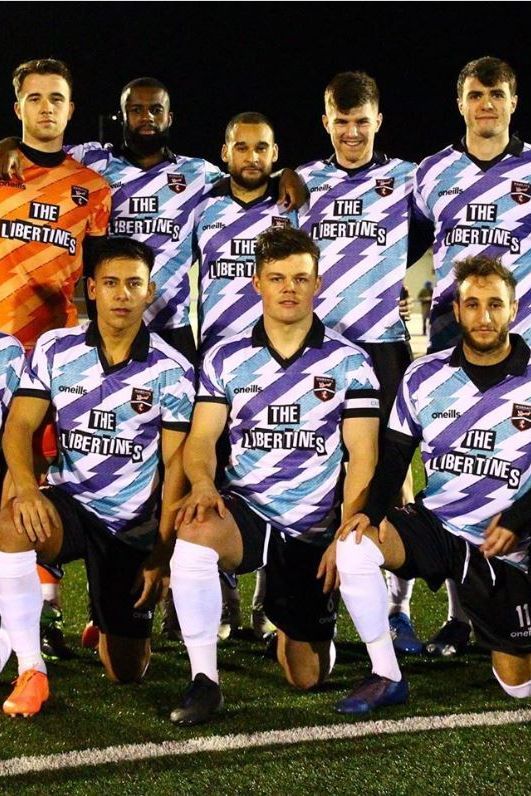
90 MARGATE (tercero)
Estaciones gastadas: 2019-20
Jugadores notables en este kit: Nadie de quien hayas oído hablar
Este kit fue diseñado por el artista pop con sede en Kent Luke McLean y tiene mucho que ofrecer. Los nombres de los seguidores están impresos en letras minúsculas en las rayas diagonales distorsionadas en púrpura y turquesa, y sí, el jersey está realmente patrocinado por la banda de rock The Libertines. Es hora de que los héroes lo usen.
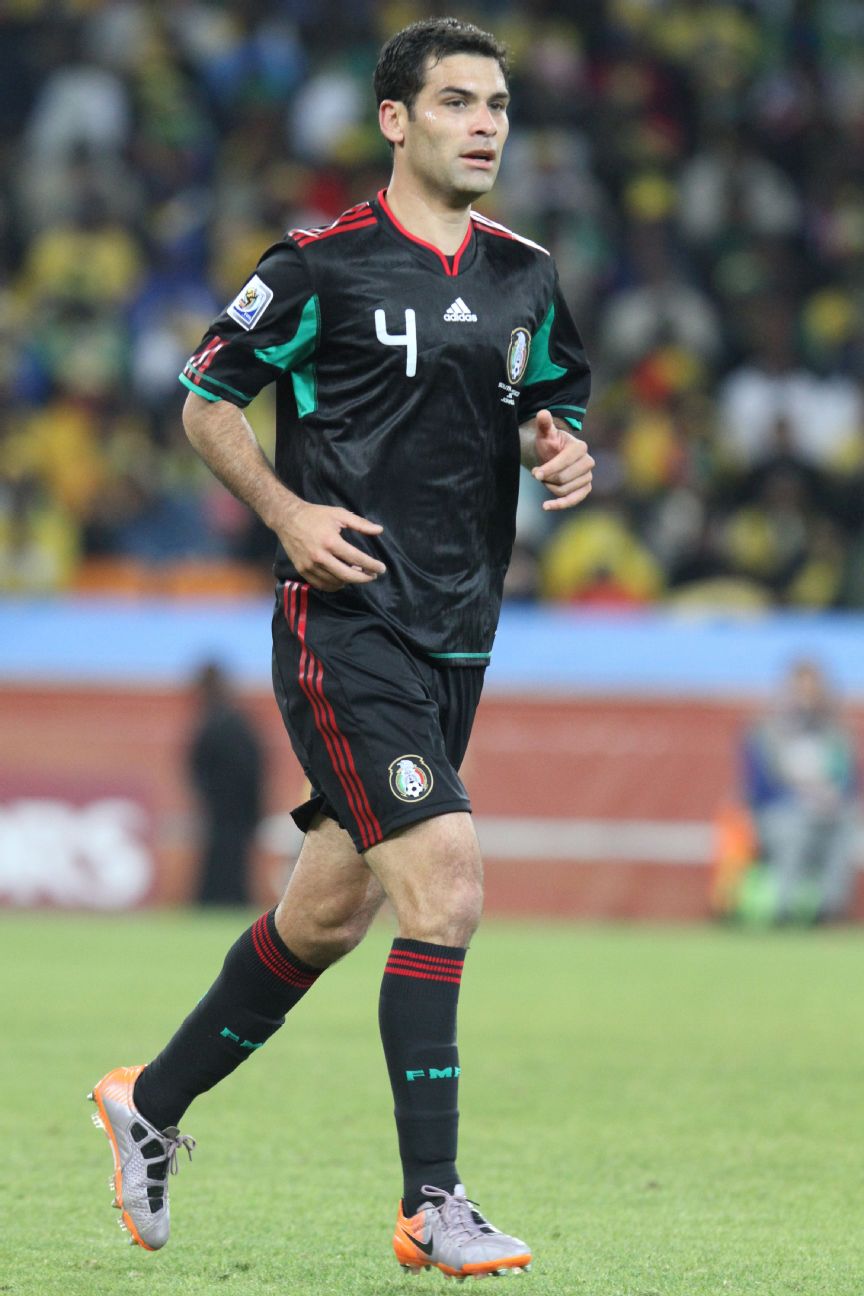
89. MÉXICO (lejos)
Estaciones gastadas: Copa Mundial 2010
Jugadores notables en este kit: Rafael Márquez (foto), Giovani dos Santos, Carlos Vela
Era la primera vez en su historia que México llevaba un kit de visitante que no era blanco ni burdeos. Sin embargo, según el diseñador Brad Day, esta no fue la cuarta mejor camiseta de Adidas este año, justo detrás de Alemania, España y Argentina.
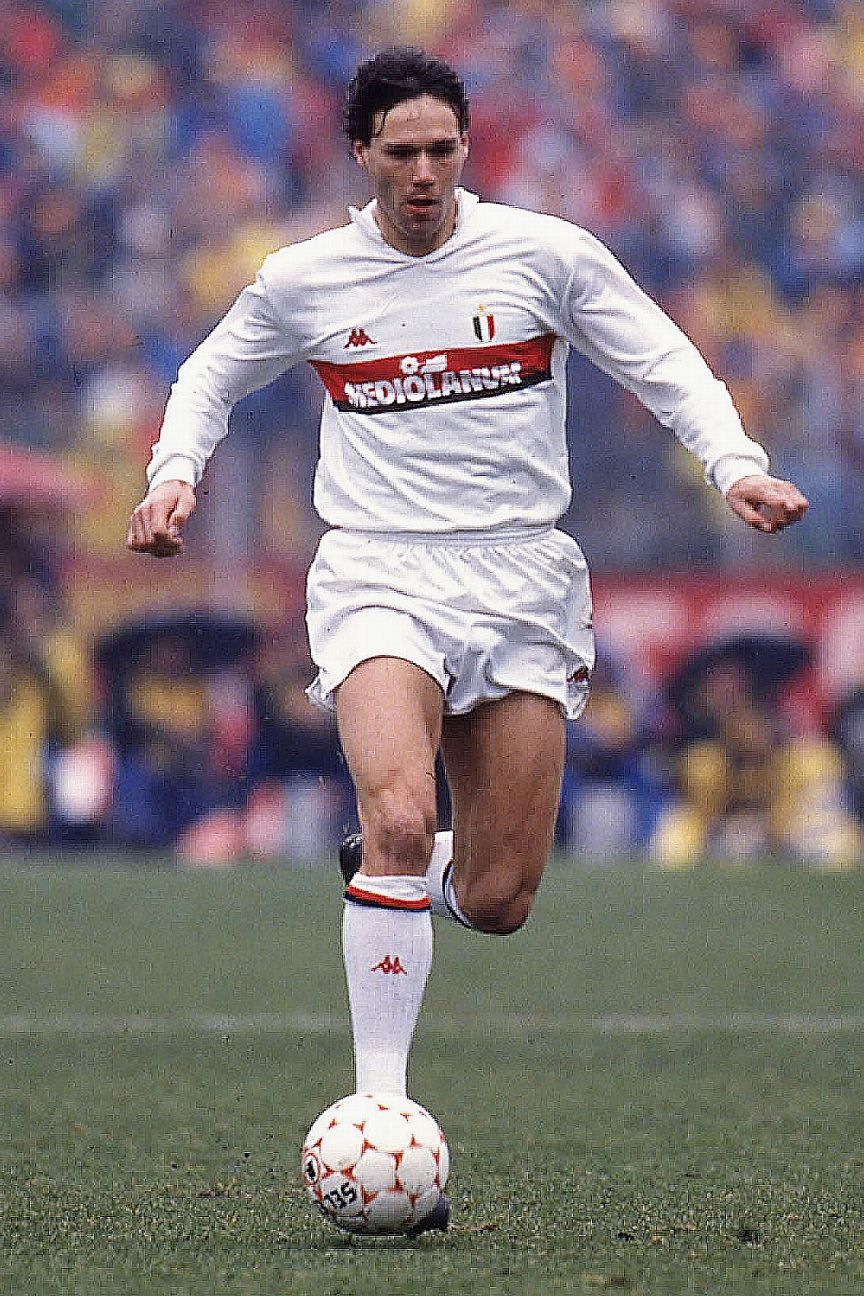
88a AC MILAN (desaparecido)
Estaciones gastadas: 1988-90
Jugadores notables en este kit: Marco van Basten (foto), Ruud Gullit, Frank Rijkaard
Cualquier camiseta de Milán de cuando la Serie A de Italia era la envidia del mundo sería una entrada digna, pero esta camiseta de visitante es reconocida por su simplicidad y su discreto texto y logotipos de patrocinio. Milán mantuvo la Copa de Europa y jugó el mejor fútbol del mundo con algunos de los mejores jugadores jamás vistos.
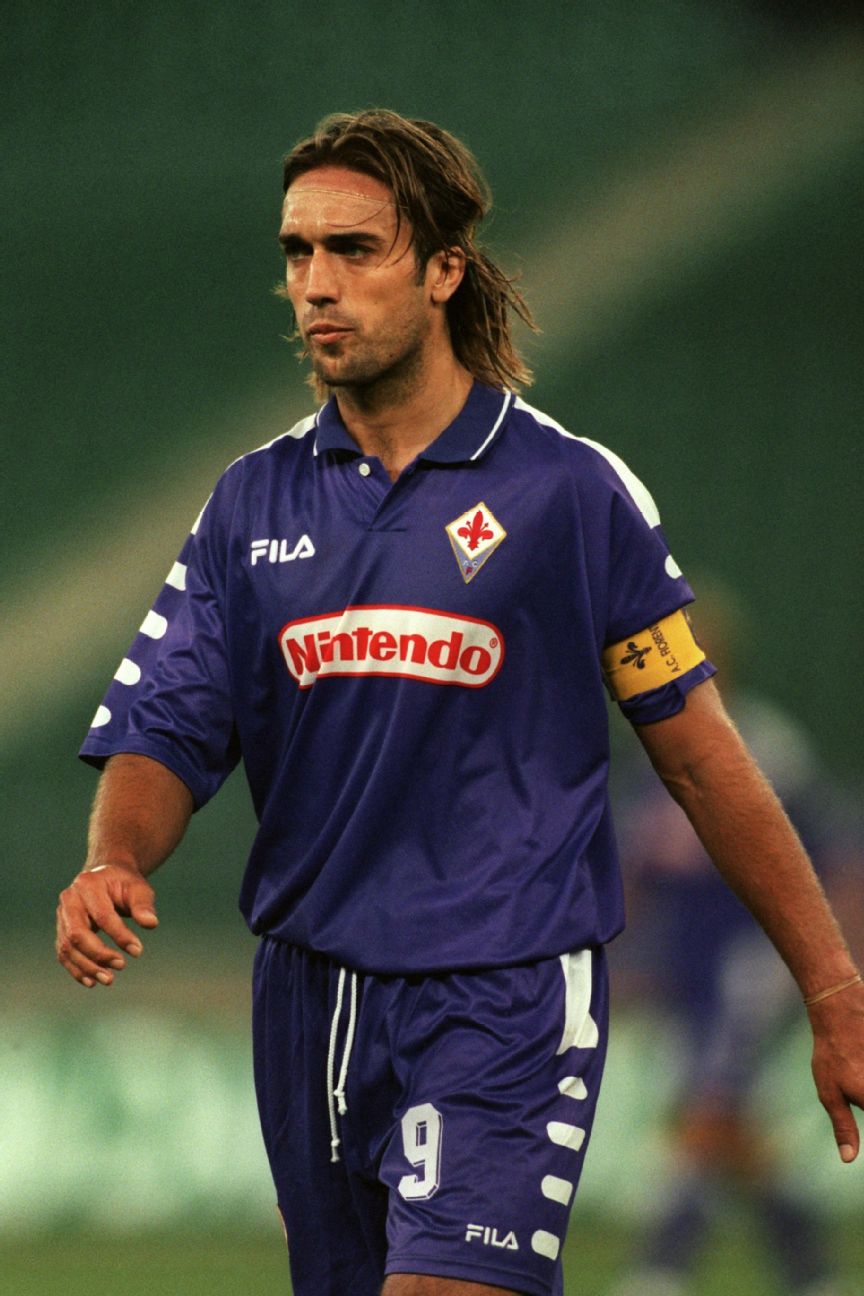
87. FIORENTINA (en casa)
Estaciones gastadas: 1998-99
Jugadores notables en este kit: Gabriel Batistuta (foto), Rui Costa, Eduardo
Este kit de finales de los 90 fue patrocinado por Nintendo y los bloques blancos en los hombros y los costados tienen más que un toque de estética de consola de juegos. Se necesita mucha confianza para usar morado, y La viola siempre ha podido hacerlo.
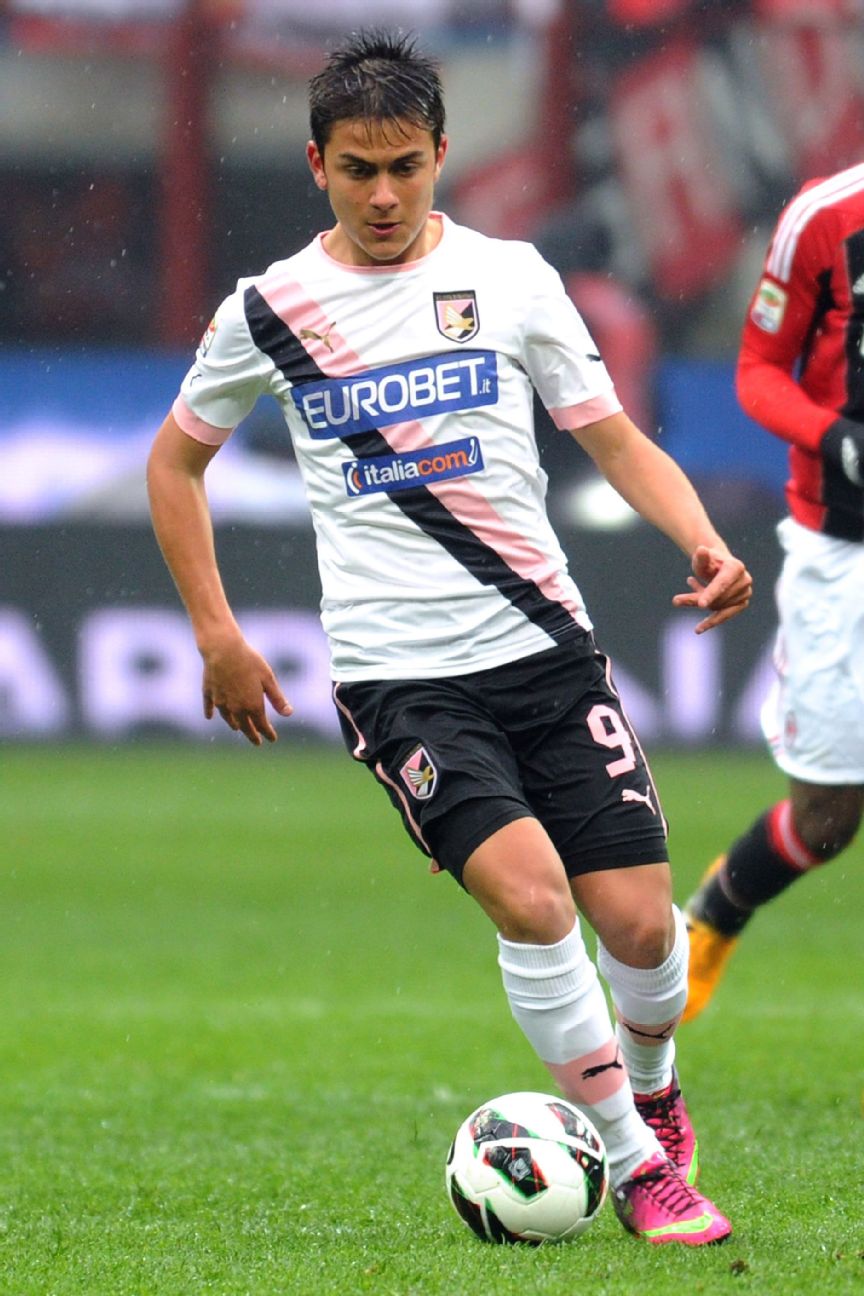
86º PALERMO (tercero)
Estaciones gastadas: 2012-13
Jugadores notables en este kit: Paulo Dybala (foto), Josip Ilicic, Abel Hernández
No te puedes equivocar con una faja. El sitio web oficial de Palermo afirmó que este kit tenía un aspecto «orientado al futuro», aunque su futuro inmediato era cualquier cosa menos clásico. Fueron relegados al final de la temporada. Aún así, se veían bien.
85. BARCELONA (en casa)
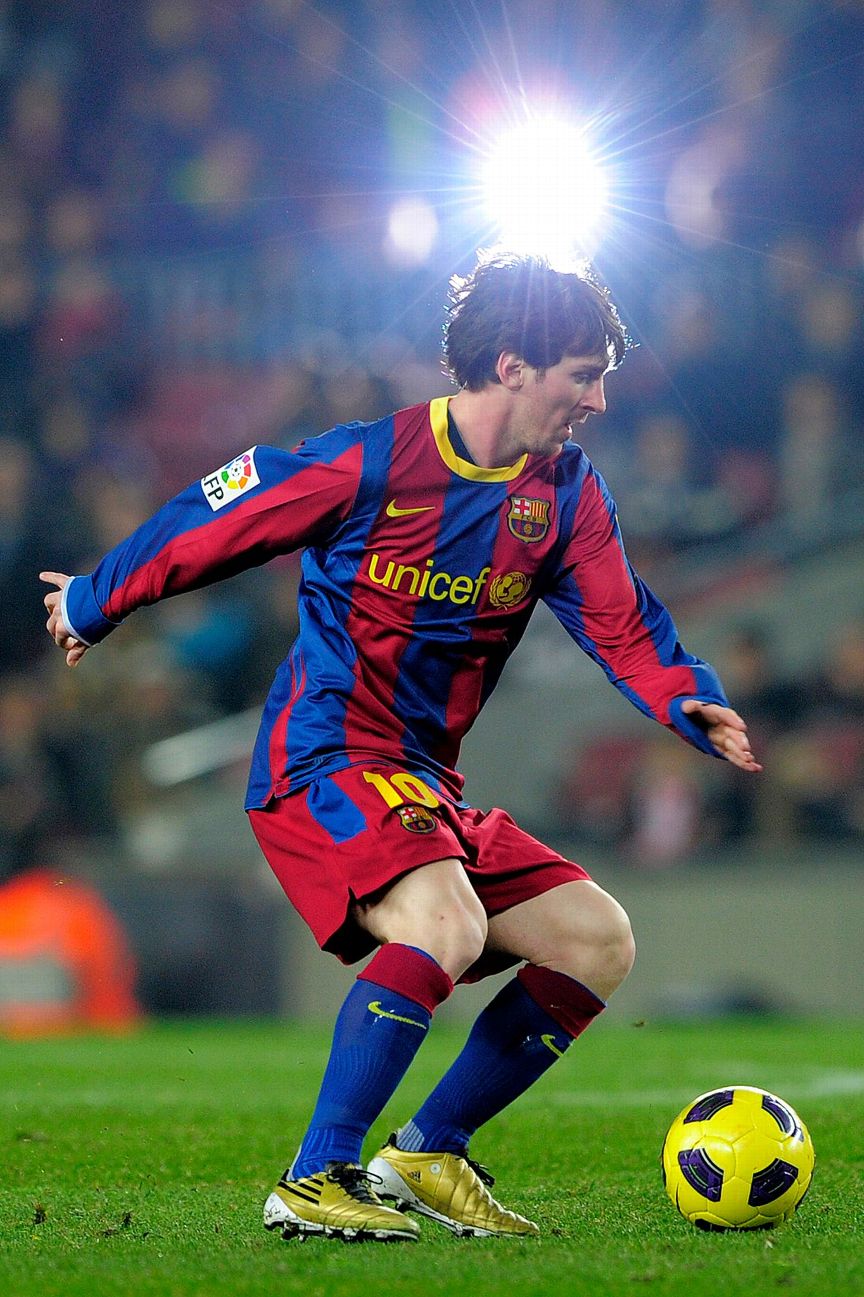
Estaciones gastadas: 2010-11
Jugadores notables en este kit: Lionel Messi (en la foto), Xavi, Andrés Iniesta, Gerard Piqué y David Villa
La primera camiseta de Barcelona con un borde amarillo, como Nike anunció en ese momento, aludiendo a las rayas amarillas y rojas de la Senyera, la bandera catalana. Este kit trajo un éxito inmenso cuando Messi & Co. aseguró un triplete nacional y la Liga de Campeones. Esta fue la última camiseta de Barcelona con el logotipo de la organización benéfica mundial UNICEF, a la que el club donó 1,5 millones de euros por temporada.
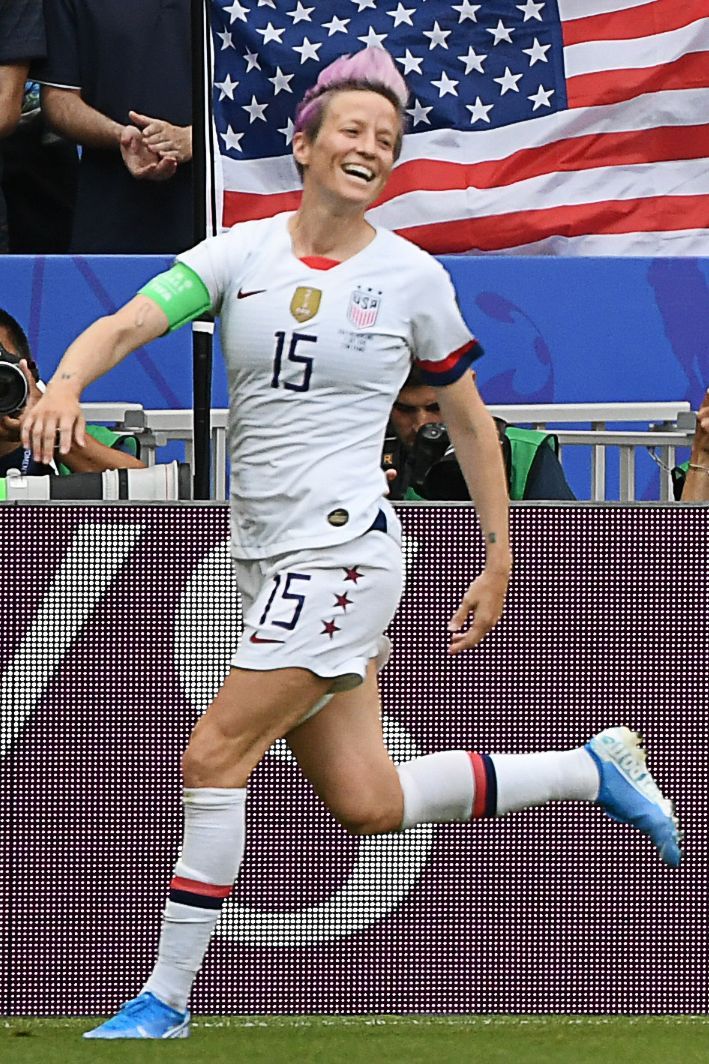
84. MUJERES DE ESTADOS UNIDOS (en casa)
Estaciones gastadas: Copa Mundial 2019
Jugadores notables en este kit: Megan Rapinoe (en la foto), Alex Morgan, Carli Lloyd y Julie Ertz
La emocionante victoria de EE. UU. En la Copa Mundial Femenina de 1999 se repitió 20 años después con esta camiseta de Nike que usó el USWNT mientras conducían a su cuarto título mundial en Francia. Tenía este puño a rayas rojo y azul y tres estrellas en los pantalones cortos para mostrarle sus tres triunfos mundiales anteriores. Personas como Rapinoe y Morgan estaban orgullosas de la clase de 1999.
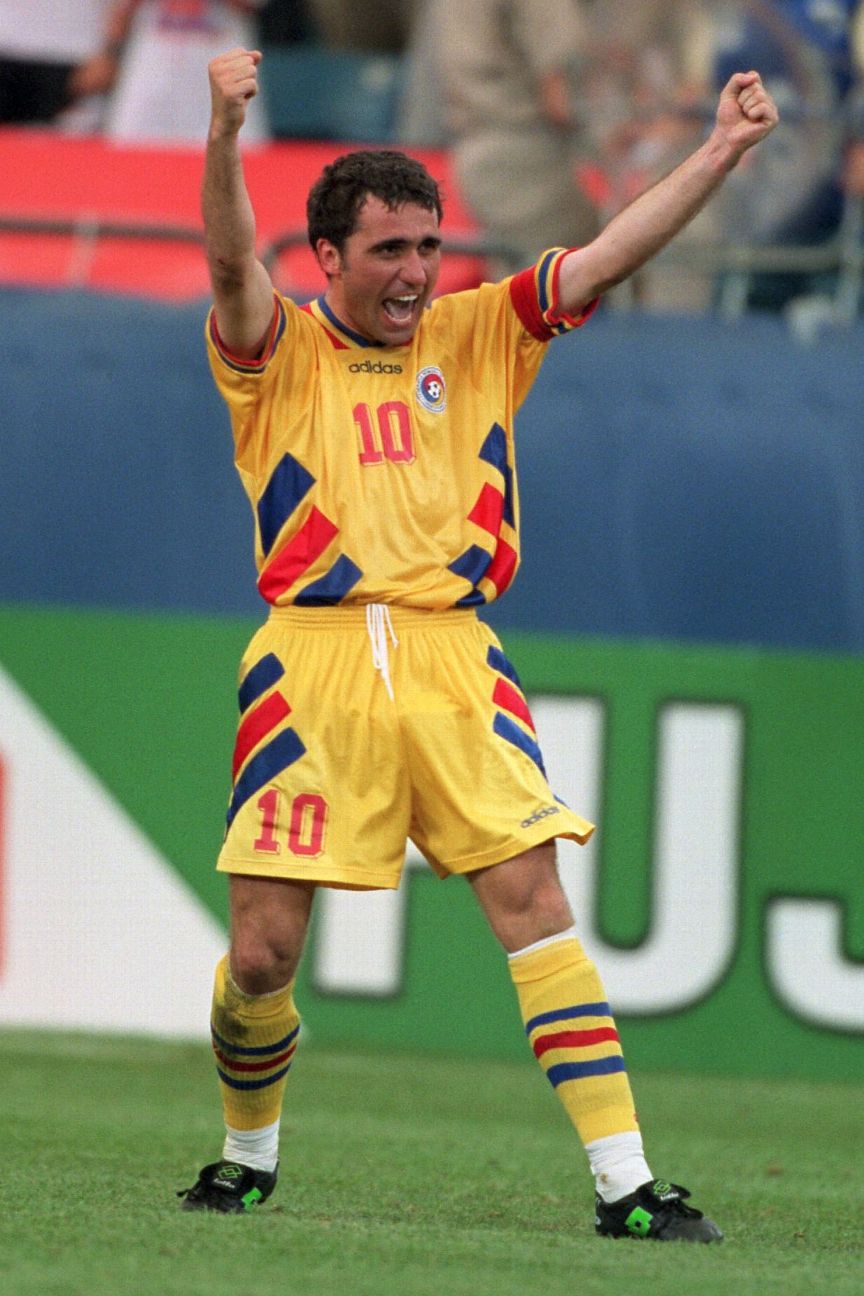
83. RUMANIA (lejos)
Estaciones gastadas: Copa Mundial 1994
Jugadores notables en este kit: Gheorghe Hagi (foto), Gheorghe Popescu, Dan Petrescu
Estas tres rayas que aparecen desde las caderas, el collar a juego, estos números en forma de caja … mi palabra, este kit es tan hermoso y tan 90. Este fue un diseño especial que solo se usó durante las finales de la Copa Mundial, y funcionó cuando Rumania llegó a los cuartos de final para dar lo mejor en el torneo.
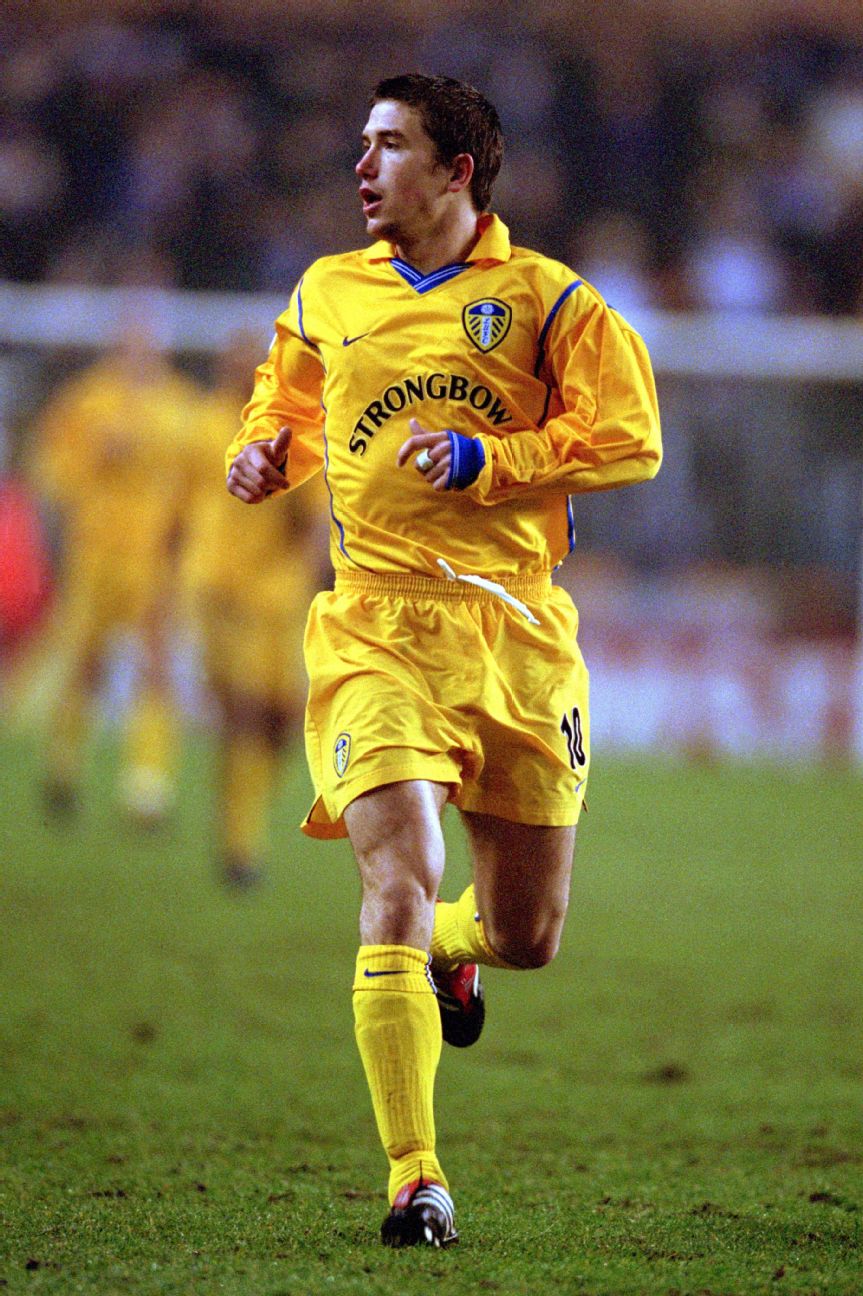
82º LEEDS UNITED
Estaciones gastadas: 2000-02
Jugadores notables en este kit: Harry Kewell (en la imagen), Mark Viduka, Rio Ferdinand
Parece que fue ayer cuando Leeds estuvo en las semifinales de la Liga de Campeones, pero en realidad fue hace 20 años. Nike mantuvo los uniformes de Leeds directos durante este tiempo. Esta franja amarilla externa con una raya azul pasa de cada hombro a la cintura.
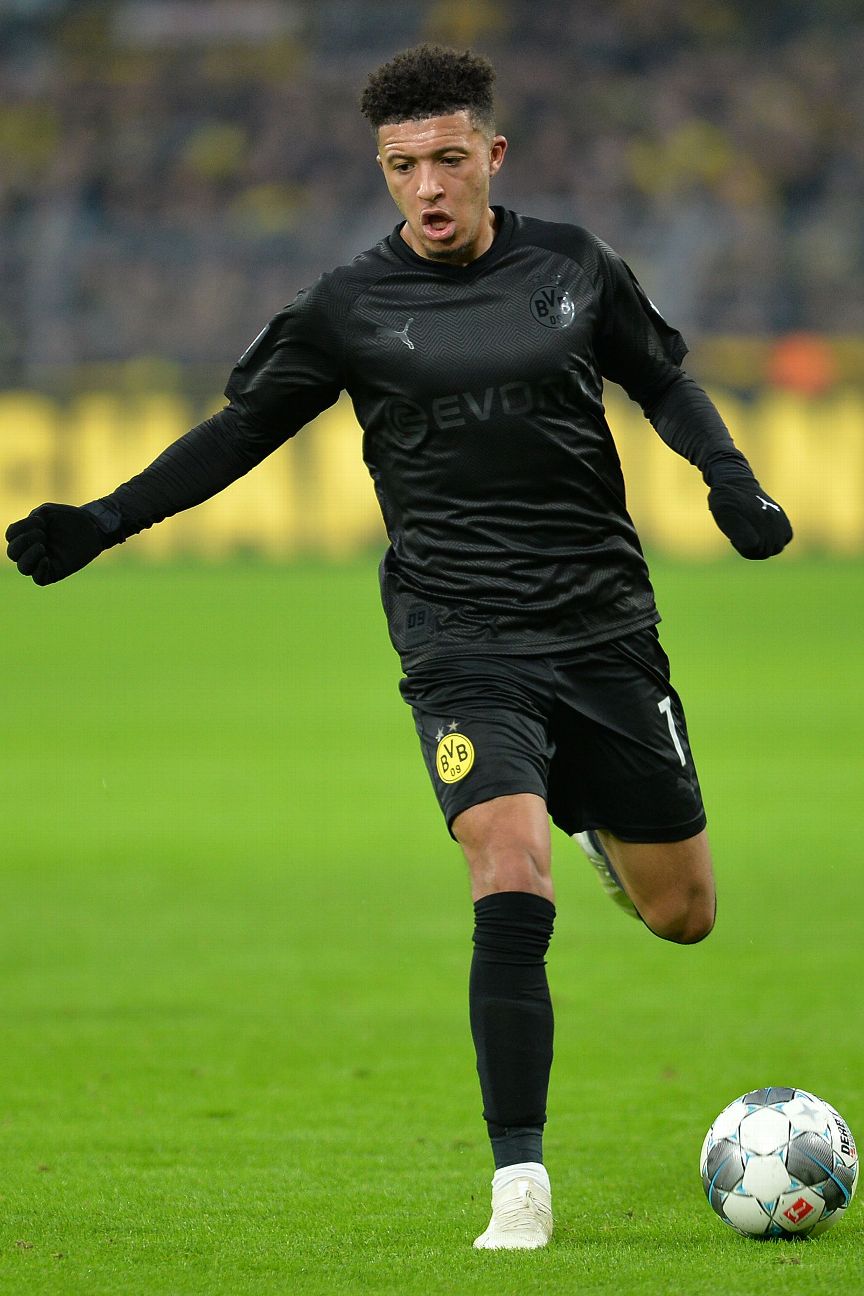
81 BORUSSIA DORTMUND (tercero)
Estaciones gastadas: 2019-20
Jugadores notables en este kit: Jadon Sancho (foto), Marco Reus, Julian Brandt
Usado solo una vez para conmemorar el 110 aniversario de Dortmund, esta elegante franja se agotó en solo tres horas. BVB venció a Fortuna Düsseldorf 5-0 y, por lo tanto, estableció un récord del 100% en negro. Sancho definitivamente era un fanático: «Las camisas negras son las mejores que he usado. Tal vez deberíamos seguir jugando con ellas».
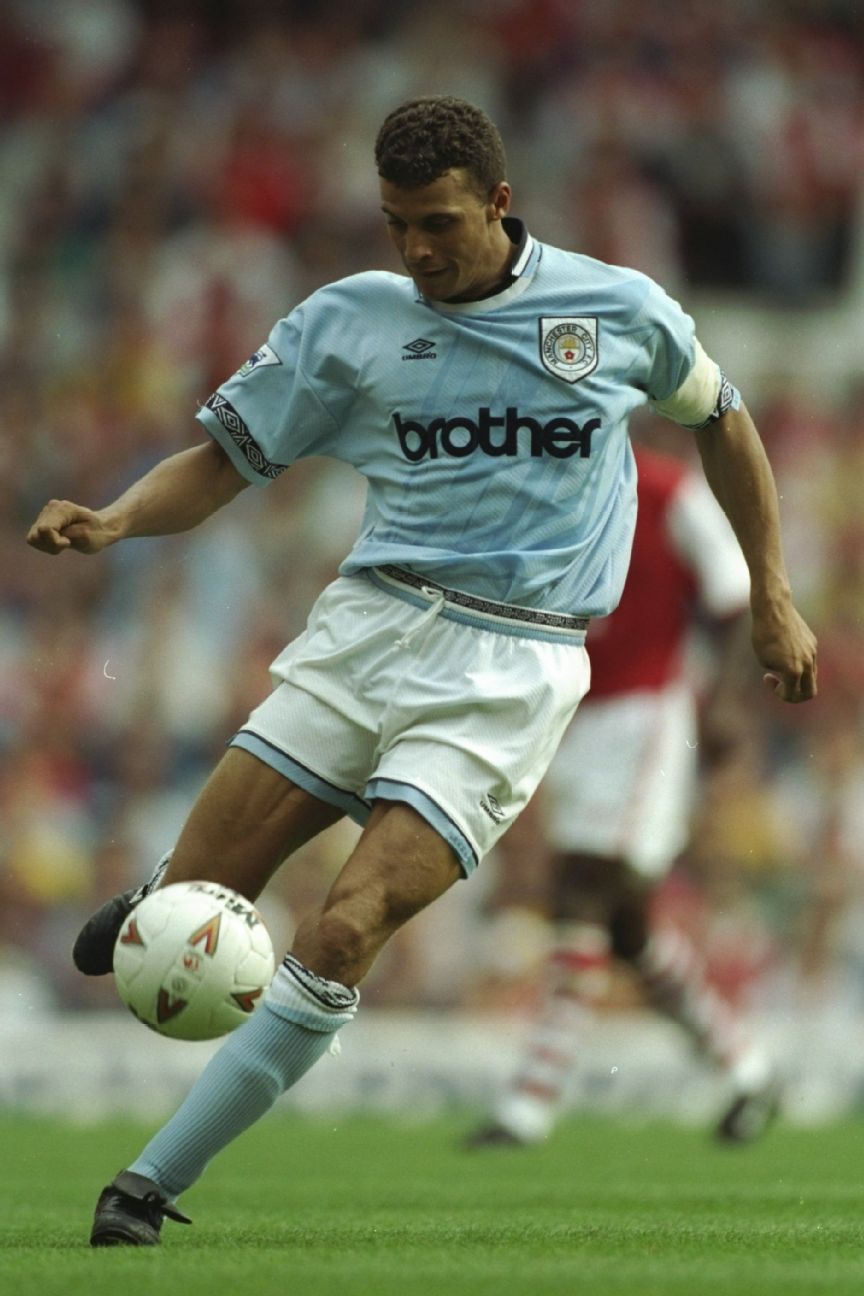
80a CIUDAD DE MANCHESTER (en casa)
Estaciones gastadas: 1993-95
Jugadores notables en este kit: Keith Curle (foto), Uwe Rosler, Niall Quinn
Usado por el famoso fanático Noel Gallagher antes de la legendaria aparición de Oasis en los viejos terrenos del club Maine Road en 1996, y es uno de los mejores de la ciudad. Un poco como la música de Oasis, se ve un poco aburrido en la superficie, pero si miras un poco más profundo puedes ver mucho más, incluido un patrón pseudoholográfico del logotipo del fabricante típico de esa época.
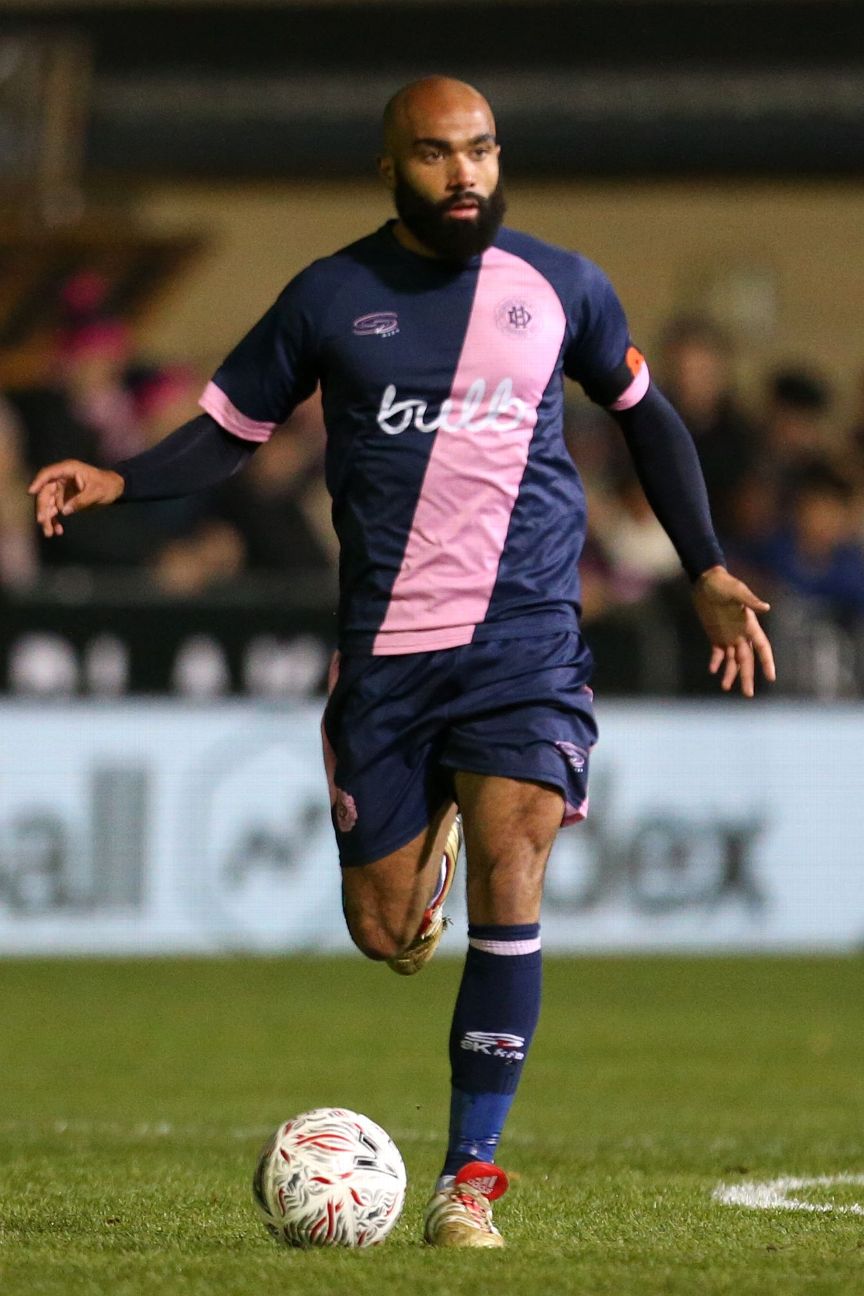
79º HULLICH DULWICH (en casa)
Estaciones gastadas: 2019-20
Jugadores notables en este kit: Dominic Vose (en la foto), Lionel Ainsworth, Quade Taylor
Dulwich Hamlet goza de un notable apoyo para un equipo inglés que no es de la liga. El club, que se encuentra en un suburbio rico del sur de Londres, afirma haber tenido la mayor asistencia hasta ahora (16,254) para un juego fuera de las filas profesionales. Además, probablemente sean el único equipo lo suficientemente valiente como para quitarse una faja de color rosa púrpura.
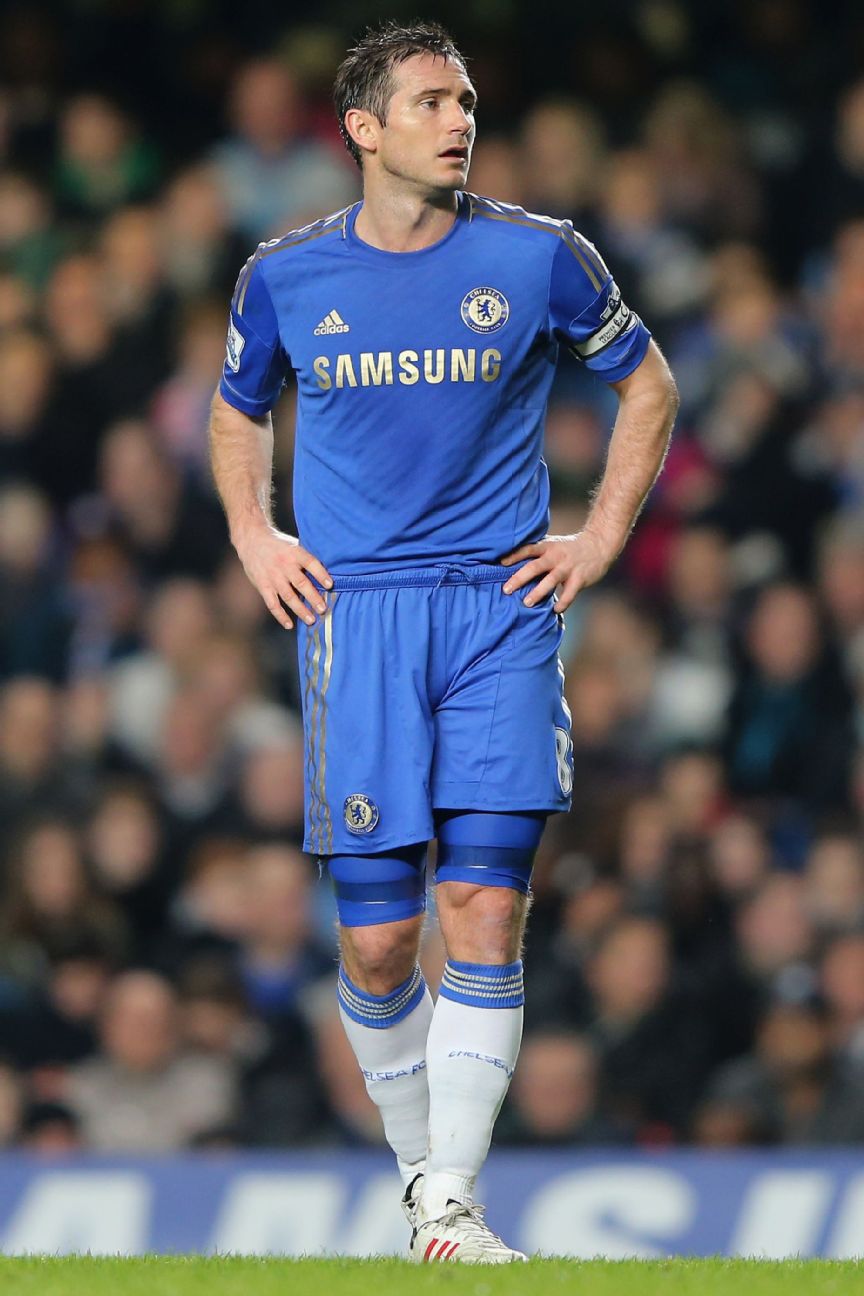
78. CHELSEA (en casa)
Estaciones gastadas: 2012-13
Jugadores notables en este kit: Frank Lampard (foto), John Terry, Didier Drogba
El equipo de casa del Chelsea para la temporada 2012/13 era un diseño clásico de Adidas, pero con reflejos dorados, un poco como el cabello de Fernando Torres. El oro se agregó para celebrar los Juegos Olímpicos de Londres 2012 en lugar de la reciente victoria de la Liga de Campeones.
77a ROMA (en casa)
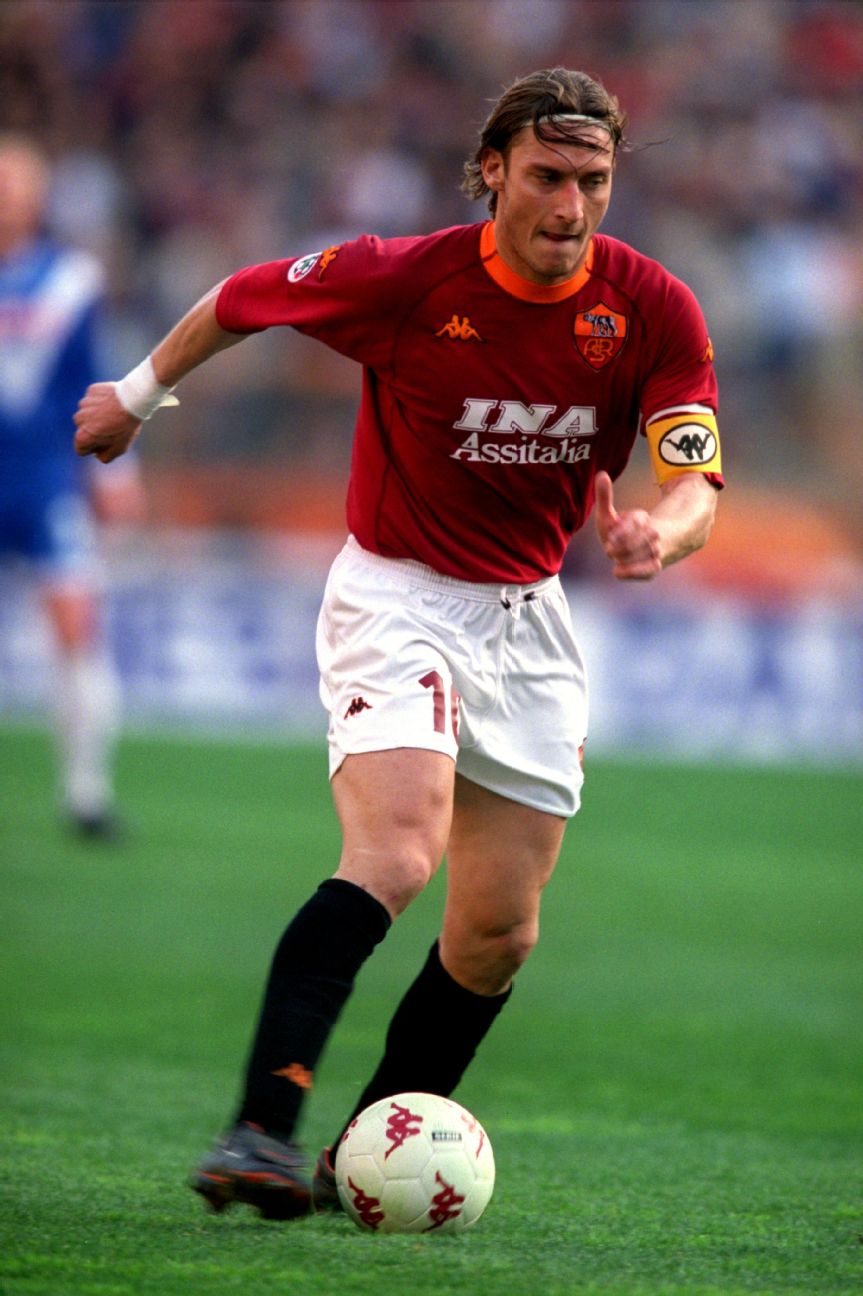
Estaciones gastadas: 2000-01
Jugadores notables en este kit: Francesco Totti (foto), Cafu, Gabriel Batistuta
Si miras este kit, inmediatamente verás el cabello de Totti en un volumen, el número 10 en su espalda, pavoneándose como una deidad romana. Esta fue la primera camiseta de Roma de Kappa, y trajeron la primera camiseta del club. Scudetto en 15 años
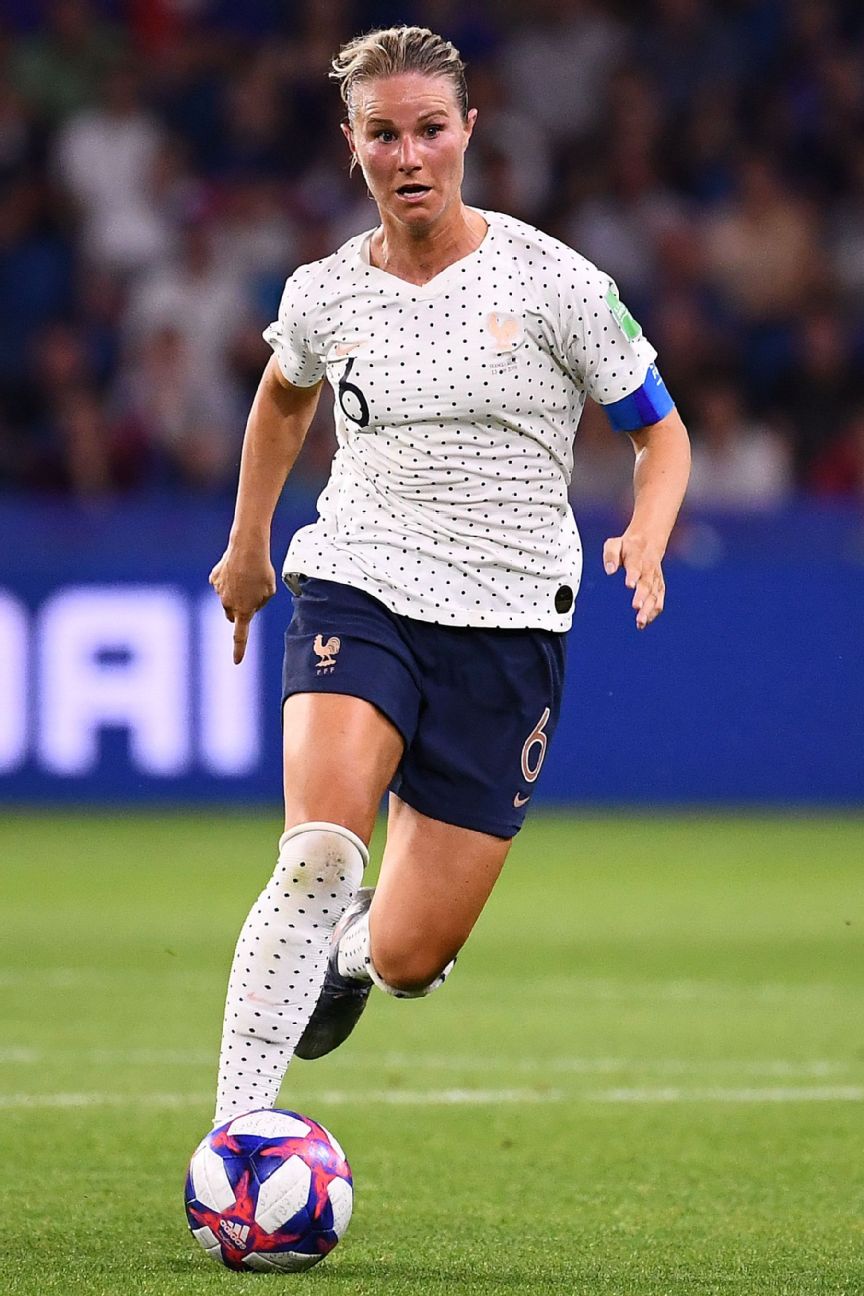
76o FRANCIA MUJERES (lejos)
Estaciones gastadas: Copa Mundial 2019
Jugadores notables en este kit: Amandine Henry (en la foto), Wendie Renard
La Copa Mundial Femenina de 2019 fue, en última instancia, una decepción para Francia cuando venció a USWNT en los cuartos de final, pero su punto culminante fue vencer a Brasil en los octavos de final con este equipo de Nike. De color blanco con puntos azules oscuros, un guiño a un aspecto de la moda clásica francesa del pasado, según el fabricante del kit, en una inspección más cercana, los puntos eran pequeños hexágonos que se refieren al apodo del país «L’Hexagone».
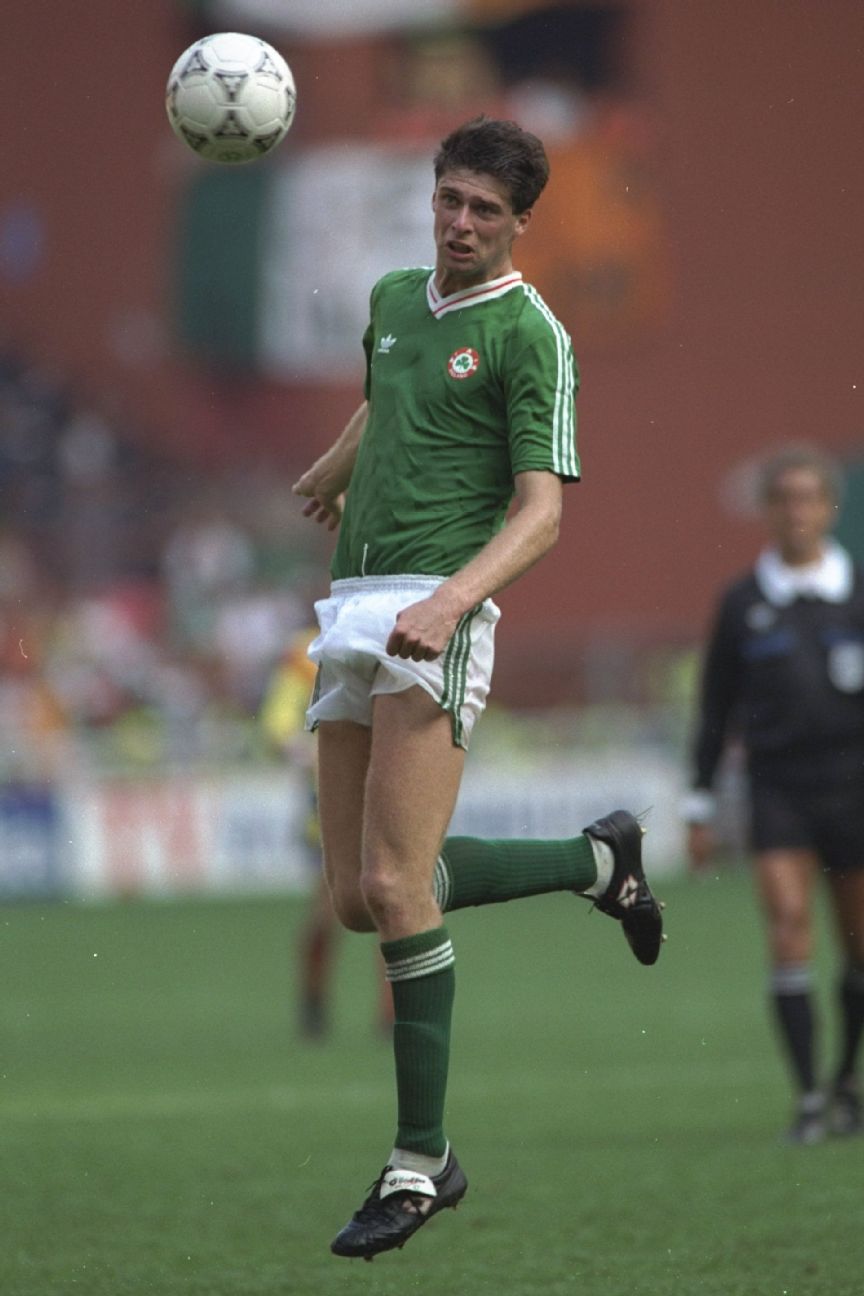
75ª REPÚBLICA DE IRLANDA (hogar)
Estaciones gastadas: 1990-92
Jugadores notables en este kit: Niall Quinn (en la foto), Paul McGrath, Ray Houghton
A finales de los 80 y principios de los 90 fue un gran momento para ser fanático de Irlanda gracias a los partidos eliminatorios consecutivos de la Copa Mundial y las victorias memorables contra Italia e Inglaterra, y las camisetas fueron igual de buenas. Este kit, usado en Italia ’90, es tan hermoso como la Isla Esmeralda.

74. BOHEMIANOS (lejos)
Estaciones gastadas: 2018
Jugadores notables en este kit: Keith Ward (en la foto), Dinny Corcoran
Nos quedamos en Irlanda por esta belleza diferente de un kit de fajas de un club que no tiene miedo de hacer las cosas de manera diferente. Los bohemios son un club dirigido por fanáticos que lanzó una camiseta de visitante en 2020 con las consignas «Refugees Welcome» y «Love Football, Hate Racism». En 2019, su equipo de visitante tenía la cara de Bob Marley para celebrar una aparición legendaria que jugó en sus terrenos de Dalymount en 1980. Más tarde, a pedido de su familia, fue retirado y rediseñado con la imagen de un puño cerrado.
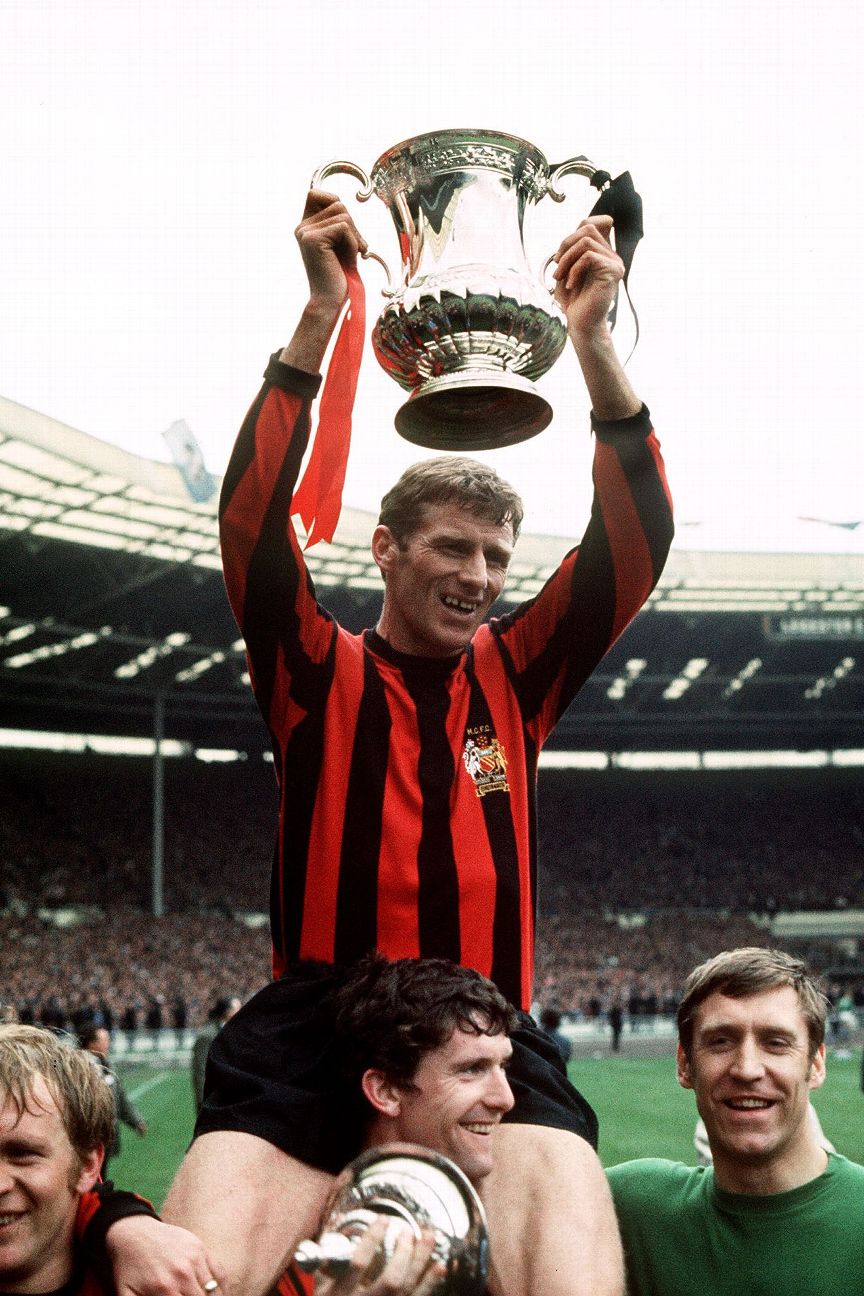
73a CIUDAD DE MANCHESTER (lejos)
Estaciones gastadas: 1969
Jugadores notables en este kit: Tony Book (en la foto), Mike Summerbee, Colin Bell y Neil Young
Las rayas rojas y negras de City son casi tan sinónimas con sus fanáticos como el kit de local celeste, por lo que ha sido traído de regreso varias veces, incluso para la final de la Copa FA 2019, donde la Ciudad vistió camisetas de calentamiento inspiradas en este kit, llamado la Copa FA Equipos ganadores de 1969 a sus espaldas.
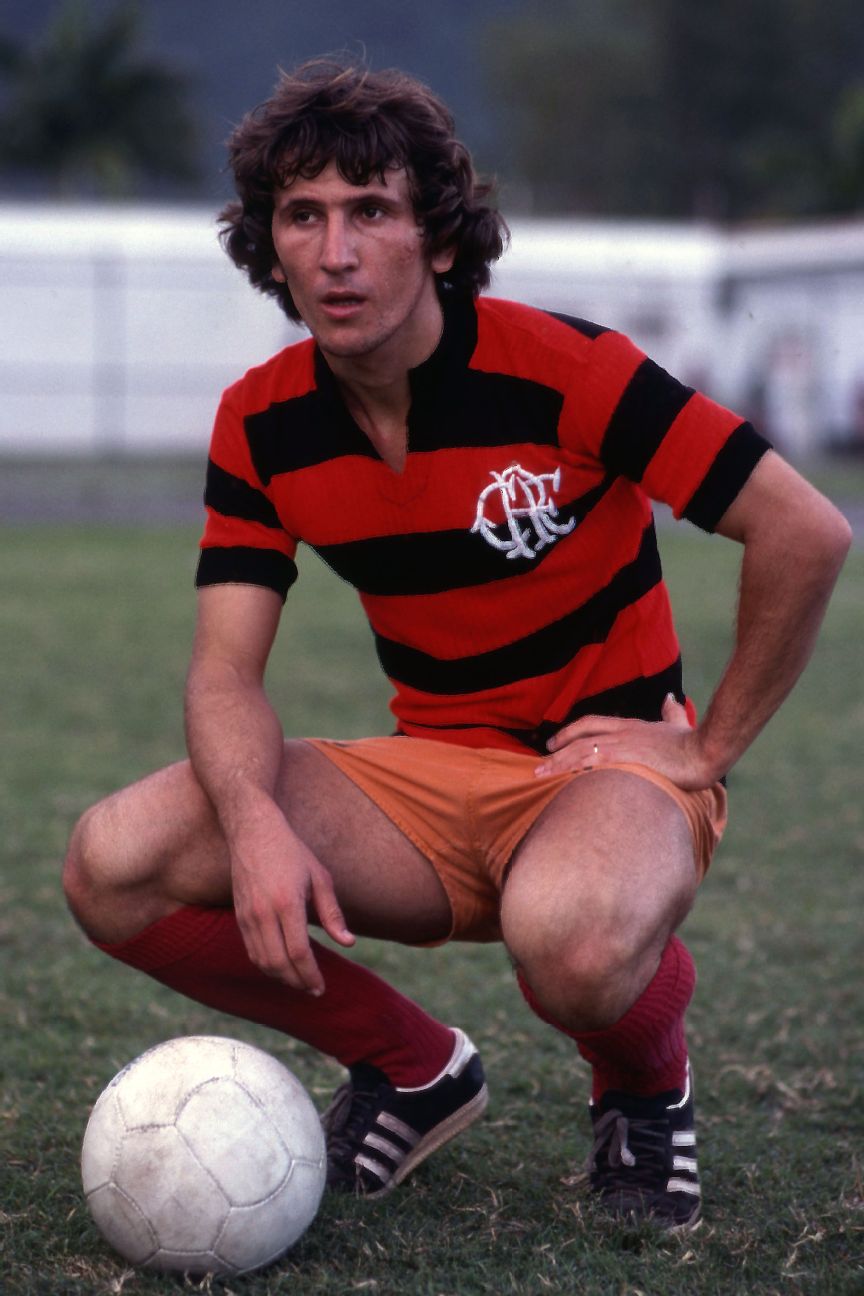
72. FLAMENGO (en casa)
Estaciones gastadas: 1977-81
Jugadores notables en este kit: Zico (en la foto), Junior, Leandro, Tita
Flamengo usó esta camiseta roja y negra para uno de los períodos más exitosos de su historia cuando dominaron el Campeonato Carioca y ganaron el campeonato brasileño, la Copa Libertadores y la Copa Intercontinental por primera vez.

71. BÉLGICA (en casa)
Estaciones gastadas: 1984 Euro
Jugadores notables en este kit: Enzo Scifo (en la foto), Leo Clijsters
Este diseño no debería funcionar; el bloque blanco detrás del patrón de diamante rojo y amarillo, la insignia central y el pequeño logotipo de Adidas en el que debería estar el escudo de armas. Pero lo que debería ser un desastre caótico suma más que la suma de sus partes y ahora se considera un clásico. Lo mismo no se aplica al equipo belga de la época, derrotado 5-0 por una Francia inspirada en Michel Platini.
70º MÉXICO (en casa)

Estaciones gastadas: Copa Mundial 1998
Jugadores notables en este kit: Cuauhtémoc Blanco (foto), Luis Hernández
Este kit fue fabricado por el fabricante mexicano ABA Sport y se hizo famoso por el Blanco Bounce. Es tan valiente como maravilloso. El Tri han estado utilizando proveedores de ropa con estilo durante años: sus kits de 1978 fueron fabricados por Levi’s.
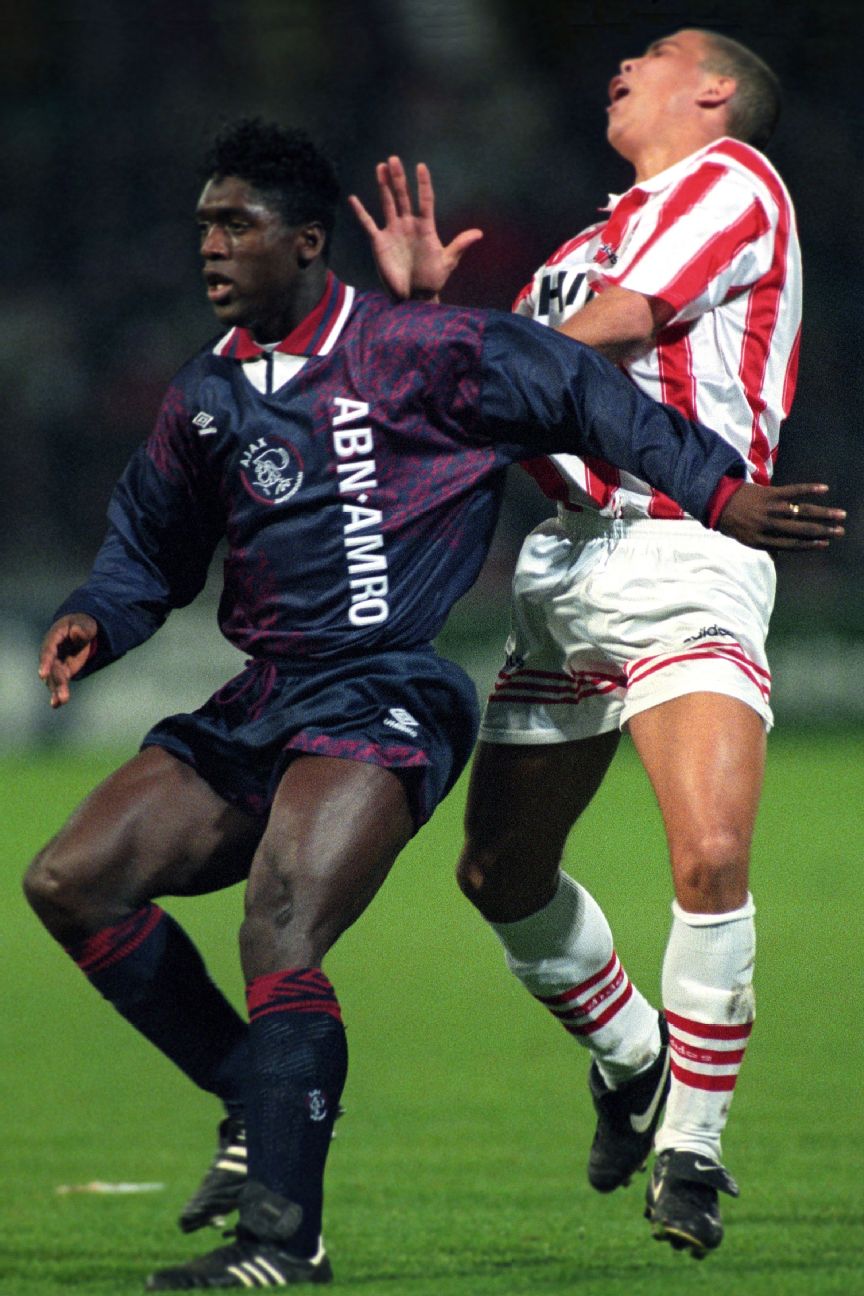
69a AJAX (fuera)
Estaciones gastadas: 1994-95
Jugadores notables en este kit: Clarence Seedorf (en la foto), Patrick Kluivert, Edgar Davids y Marc Overmars
Ajax ganó la Liga de Campeones con esta hermosa camiseta con su escote burdeos en azul oscuro y su cuello abotonado. No han perdido un juego con esta camiseta desde que jugaron una racha invicta de 52 partidos nacionales y 19 de la Liga de Campeones entre 1994 y 1996. Ningún otro equipo ha hecho esto y ganó la Liga de Campeones y el título nacional antes o después.

68º MANCHESTER UNITED (en casa)
Estaciones gastadas: 1994-96
Jugadores notables en este kit: Ryan Giggs (en la foto), David Beckham, Eric Cantona y Paul Ince
United no tenía cosas personales en este uniforme; Perdieron el título de la Premier League ante Blackburn en 1994-95 y Cantona fue suspendido por ocho meses porque patearon a un fanático, pero al menos todo eso se jugó en este clásico de Umbro. El escudo de armas de gran tamaño, el collar negro extremadamente flexible y la plantilla de Old Trafford débil aseguran que esto realmente funcione.
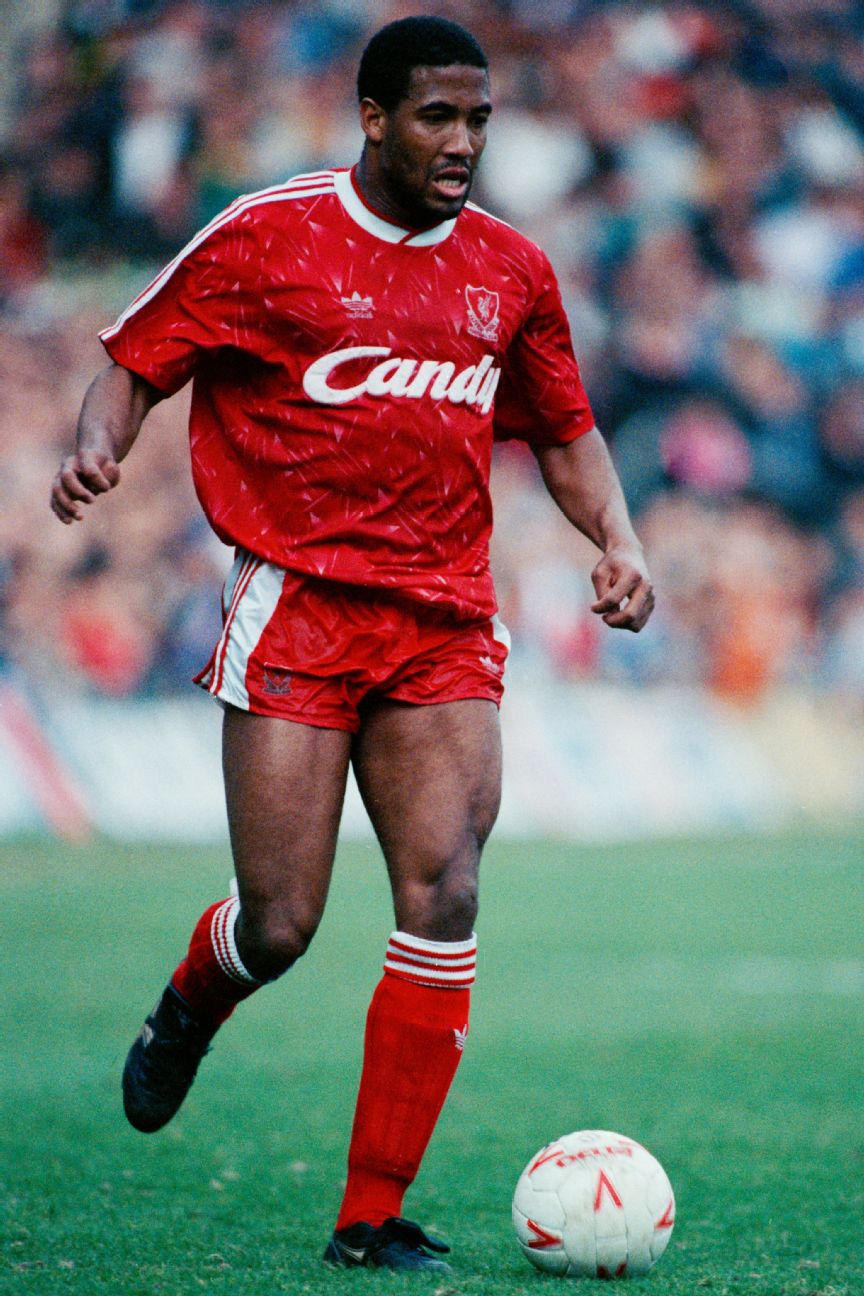
67th LIVERPOOL (Local / Visitante)
Estaciones gastadas: 1989-91
Jugadores notables en este kit: John Barnes (en la foto), Ian Rush, Peter Beardsley y Steve Nicol
La última vez que el Liverpool fue campeón de Inglaterra, bueno, la última vez antes de esta temporada, este fue su equipo. Si bien parece que fueron patrocinados por la Junta de Marketing de Sweet Treats, Candy es en realidad un fabricante italiano de electrodomésticos.
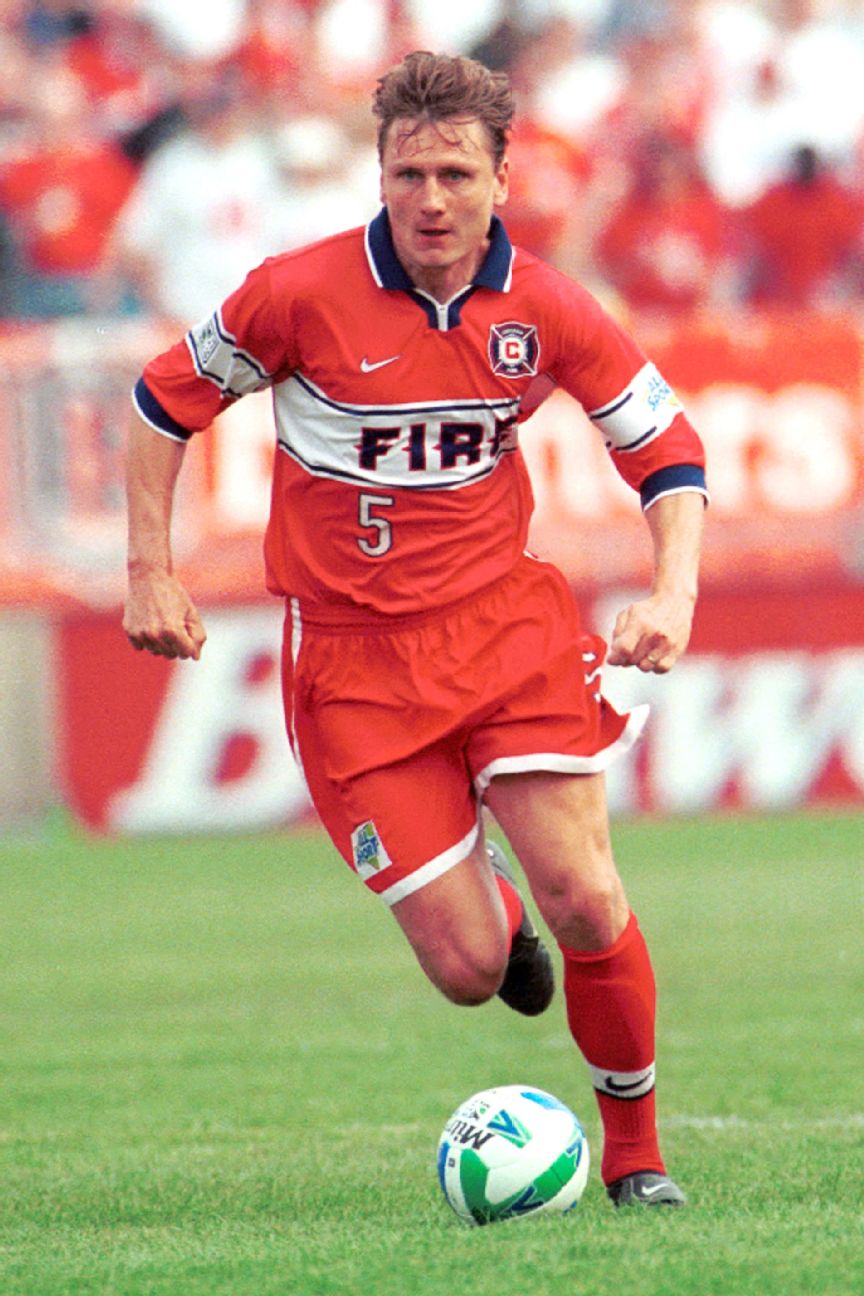
66 ° FUEGO DE CHICAGO (en casa)
Estaciones gastadas: 1999
Jugadores notables en este kit: Lubos Kubik (en la foto), Ante Razov, Piotr Now, Chris Armas
Este maillot literalmente tiene la palabra «FUEGO», ¿qué no es amar? Desafortunadamente, la asociación reemplazó esto en 2008 con un patrocinador. Estos esfuerzos de su segunda temporada en la MLS volvieron a ganar la Copa MLS y la US Open Cup en su primer año.
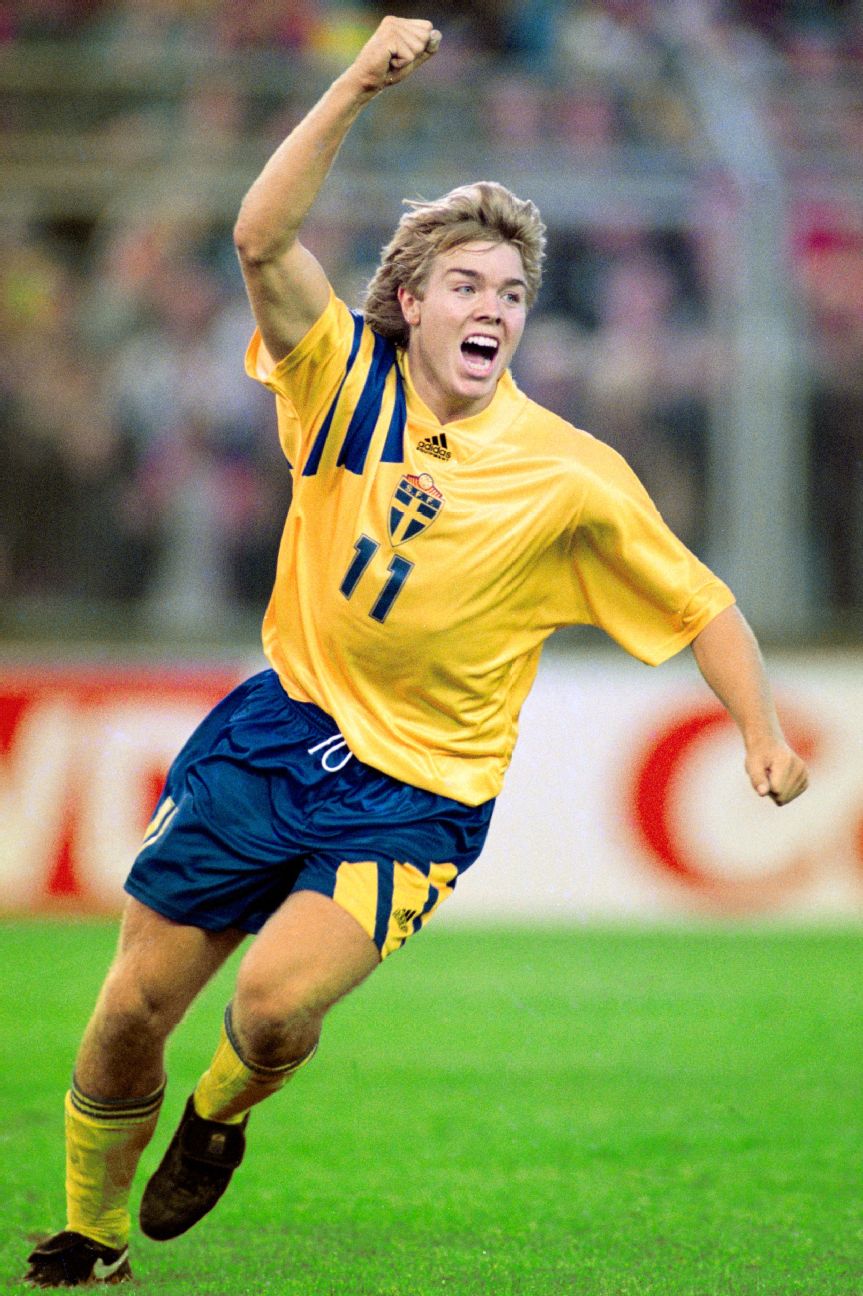
65. SUECIA (en casa)
Estaciones gastadas: Euro 1992
Jugadores notables en este kit: Tomas Brolin (foto), Stefan Schwarz, Kennet Andersson, Anders Limpar
Cuando organizas una fiesta, tienes que hacerlo bien, y eso es exactamente lo que hizo Suecia cuando fue anfitriona de Euro ’92 al usar una de las mejores camisetas del torneo. Es una plantilla de Adidas que hemos visto antes, pero el borde amarillo y azul (con el estampado de sombra de trébol de Adidas) es realmente un ícono, y vimos mucho cuando Brolin & Co. llegó a la semifinal.

64th CLUB AMERICA (en casa)
Estaciones gastadas: 1993-94
Jugadores notables en este kit: Luis Roberto Alves «Zague» (foto), Cuauhtémoc Blanco
El Club América tiene una debilidad por las camisetas excelentes, pero realmente han alcanzado la cima aquí. El lado mexicano revisó valientemente su propia insignia con el patrocinador, ambos cuidadosamente sentados en un enorme triángulo azul con un borde rojo en una camisa amarilla. Simplemente increíble
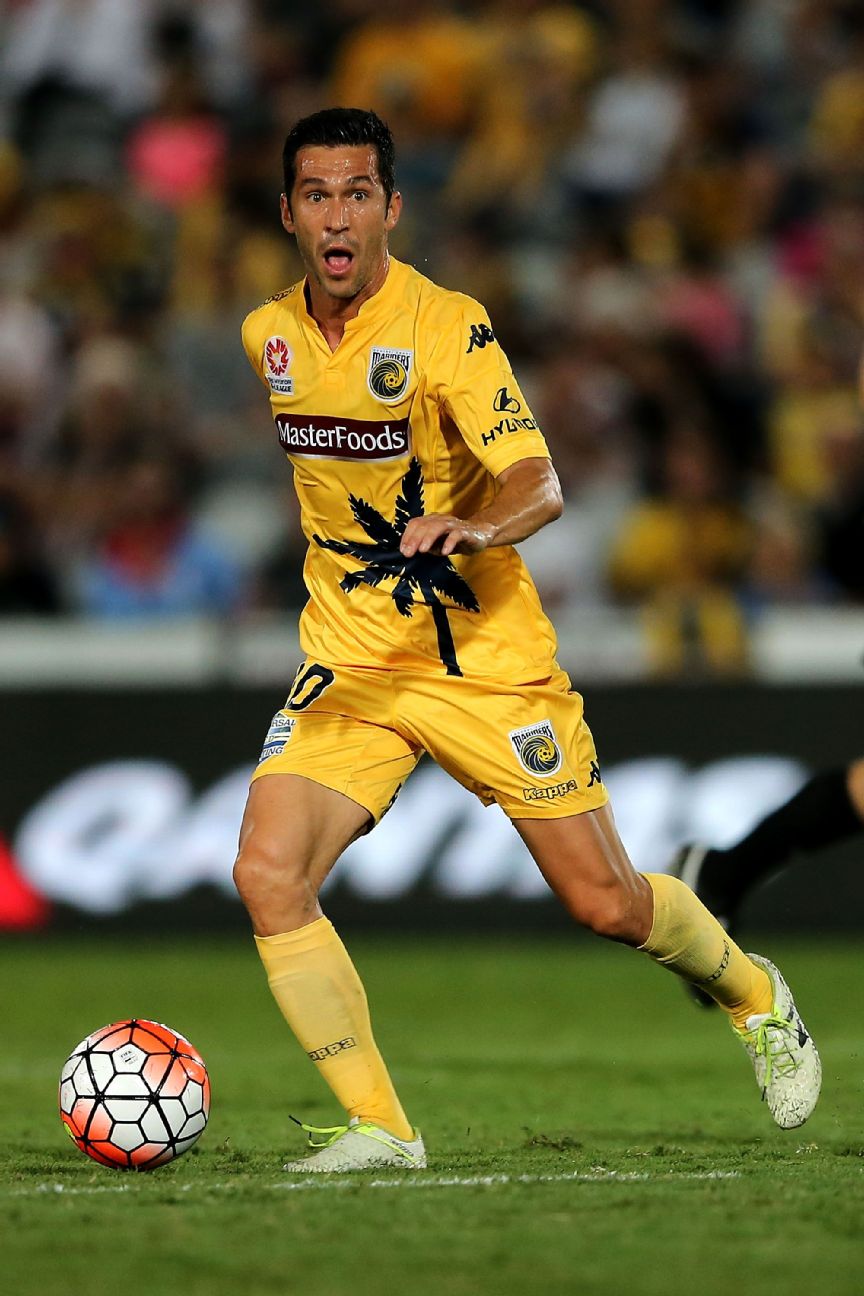
63 MARINEROS DE LA COSTA CENTRAL (en casa)
Estaciones gastadas: 2015-16
Jugadores notables en este kit: Luis García (en la foto)
Cuando una camiseta de fútbol australiana es también un anuncio para la autoridad turística. Shaun Mielekamp, CEO del club A-League con sede en Queensland, dijo en ese momento: «El diseño de la palma es un llamado a todos los fanáticos del deporte a nivel nacional para planificar una visita al Estadio Central Coast, que se ve desde cada asiento el agua está allí y es una experiencia de jornada que nunca olvidará «.
62 ° BAYERN MUNICH (en casa)
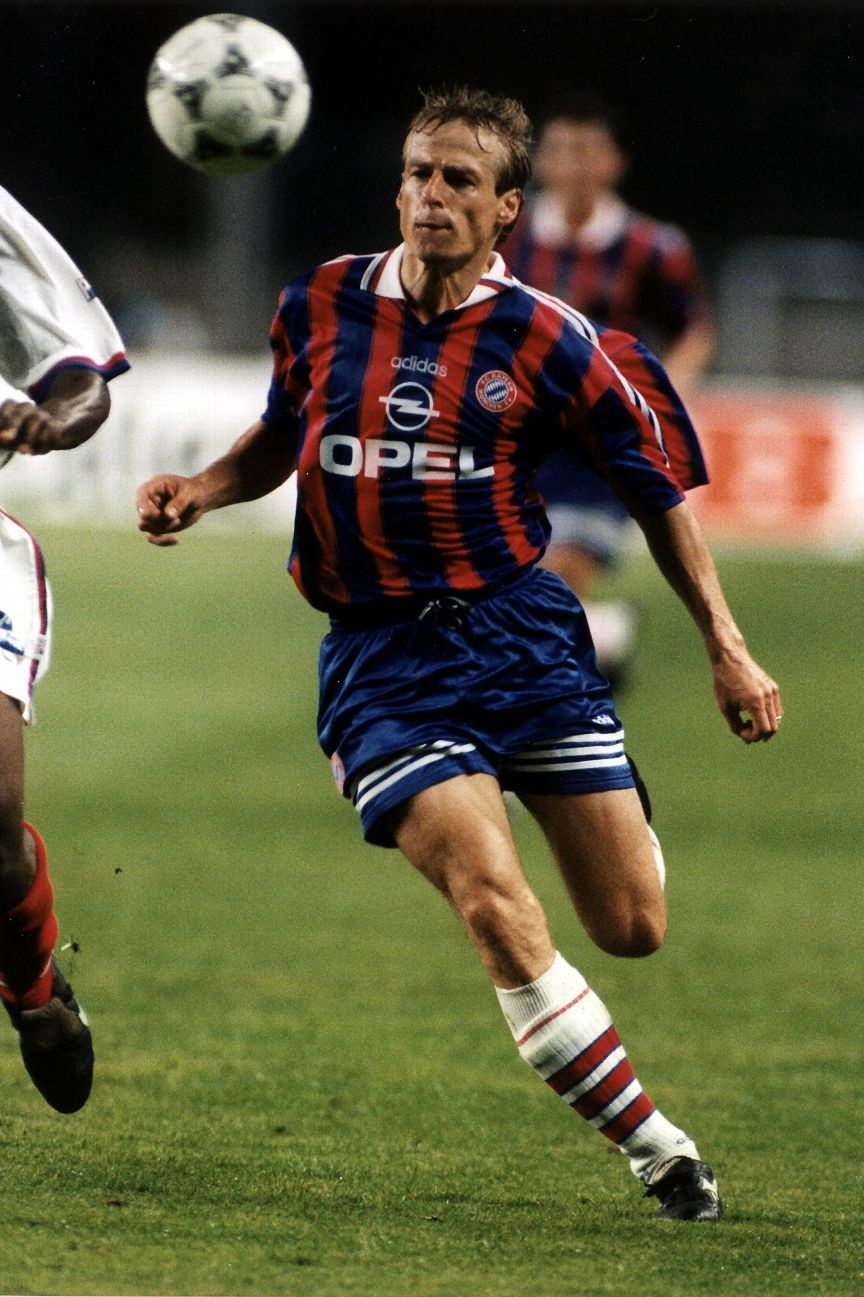
Estaciones gastadas: 1995-97
Jugadores notables en este kit: Jürgen Klinsmann (foto), Markus Babbel, Mehmet Scholl, Dietmar Hamann
Bayern usó esto durante dos años y ganó dos títulos de la Bundesliga. Nunca te has visto mejor que cuando tenías esta camisa gracias a sus gruesas barras de color flanqueadas por rayas.
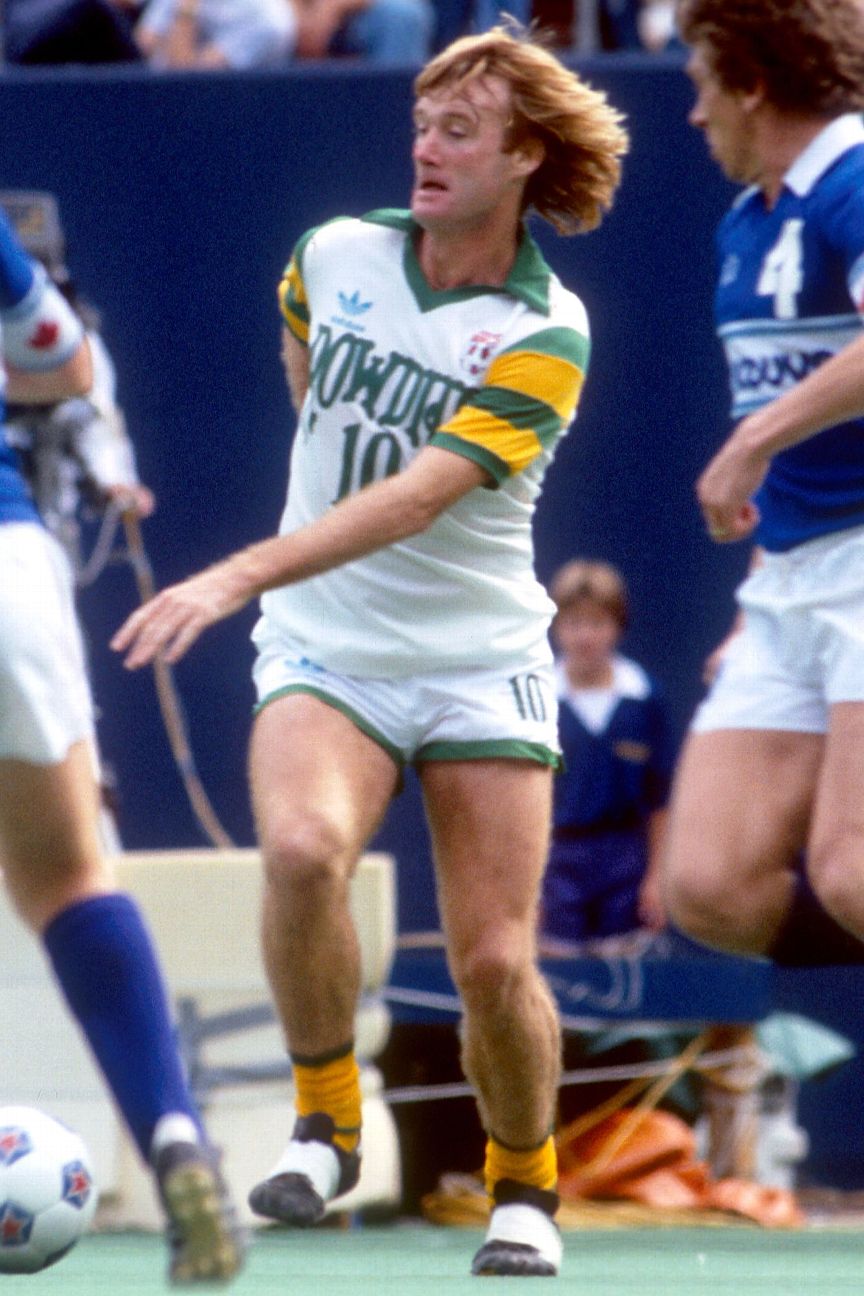
61. TAMPA BAY ROWDIES (en casa)
Estaciones gastadas: 1978-81
Jugadores notables en este kit: Rodney Marsh (en la foto), John Wegerle, John Gorman
Este kit con la palabra «rowdies» en el frente es Peak NASL, Peak 1970s Aesthetics y Peak America. ¿Sabías que el club tuvo una competencia de «fanático más ruidoso» ganada por un hombre que se puso un enorme sombrero de fútbol y se lanzó a la meta? A todos les encantó tanto que se convirtió en una mascota de facto. El club también alentó a la multitud a «levantarse, salir y ponerse ruidoso». y sus admiradores eran conocidos como «fannies».
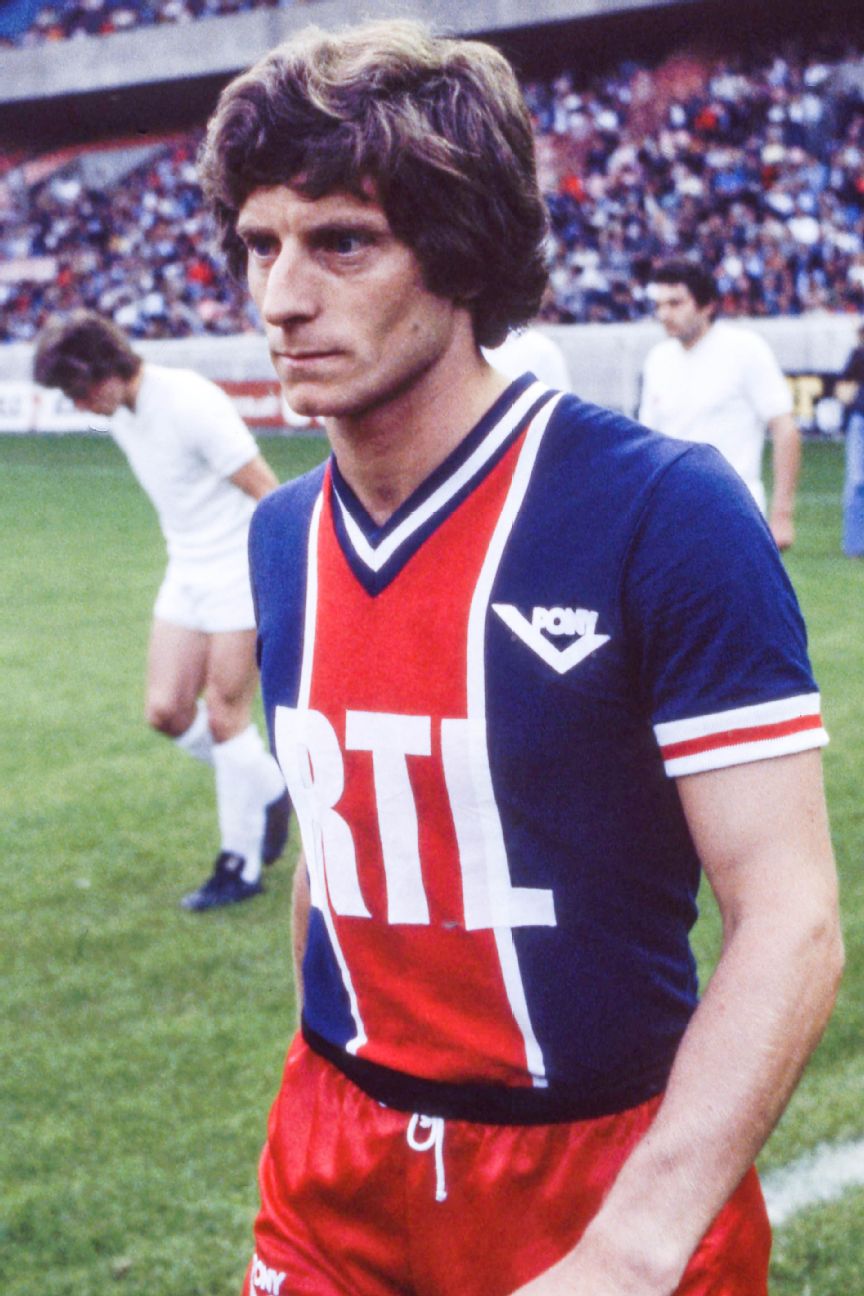
60a PARIS SAINT-GERMAIN (en casa)
Estaciones gastadas: 1977-78
Jugadores notables en este kit: Jean-Michel Larque (foto), Johan Cruyff
PSG se fundó en 1970 después de la fusión del Club de Fútbol de París y el Stade Saint-Germain y comenzó a usar esta franja roja con ribetes blancos sobre un fondo azul marino en 1974. Llevaban variaciones del kit del diseñador de moda Daniel Hechter. Johan Cruyff era tan fanático de Hechter que jugó dos juegos para el PSG en un torneo de pretemporada en 1975.
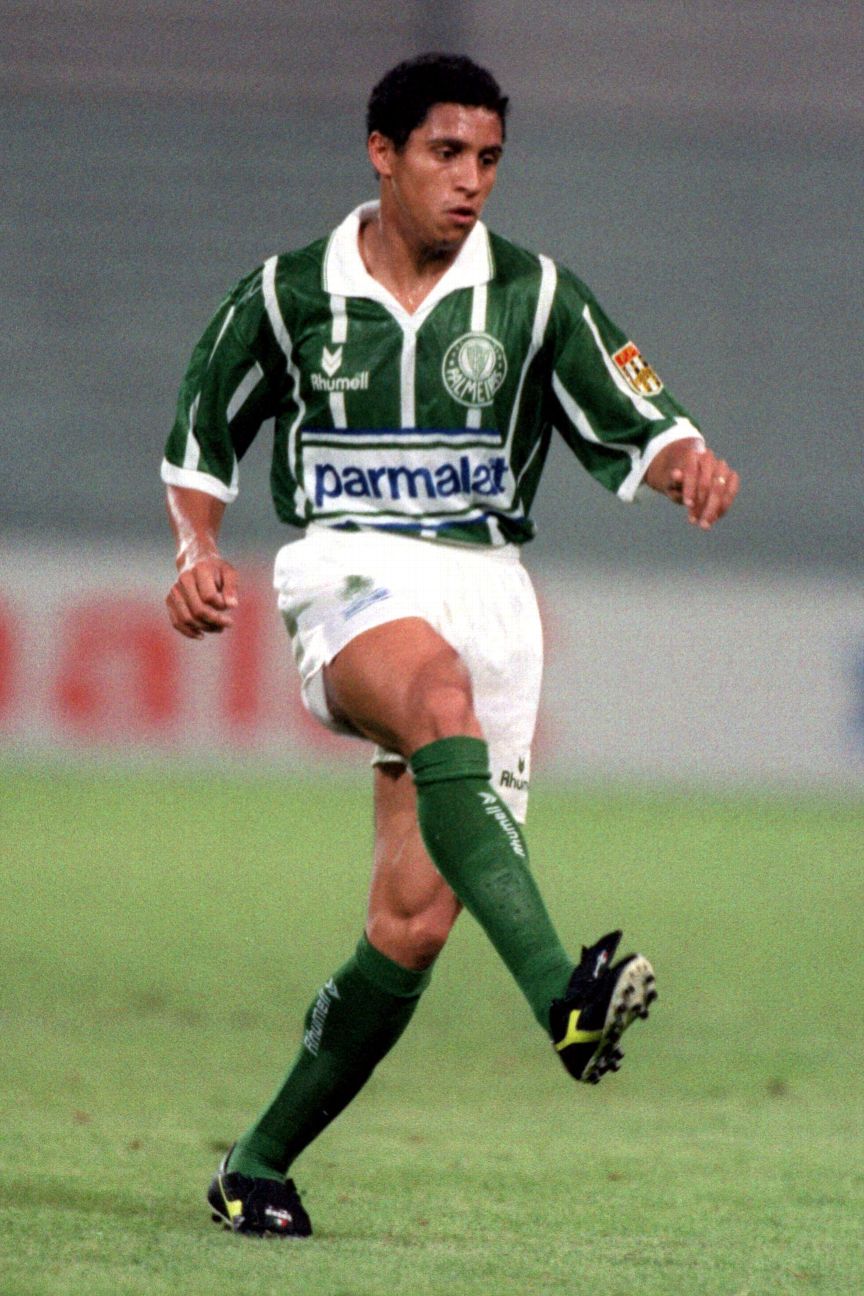
59. PALMEIRAS (en casa)
Estaciones gastadas: 1992-93
Jugadores notables en este kit: Roberto Carlos (foto), Rivaldo
Palmeiras había sido decepcionante durante 20 años antes de ponerse esta camisa de rayas blancas y verde guisante e inmediatamente barrieron a todos. Dos jóvenes llamados Roberto Carlos y Rivaldo los ayudaron a ganar el Campeonato Paulista, el Campeonato Río-Sao Paulo y el Campeonato Brasileiro.
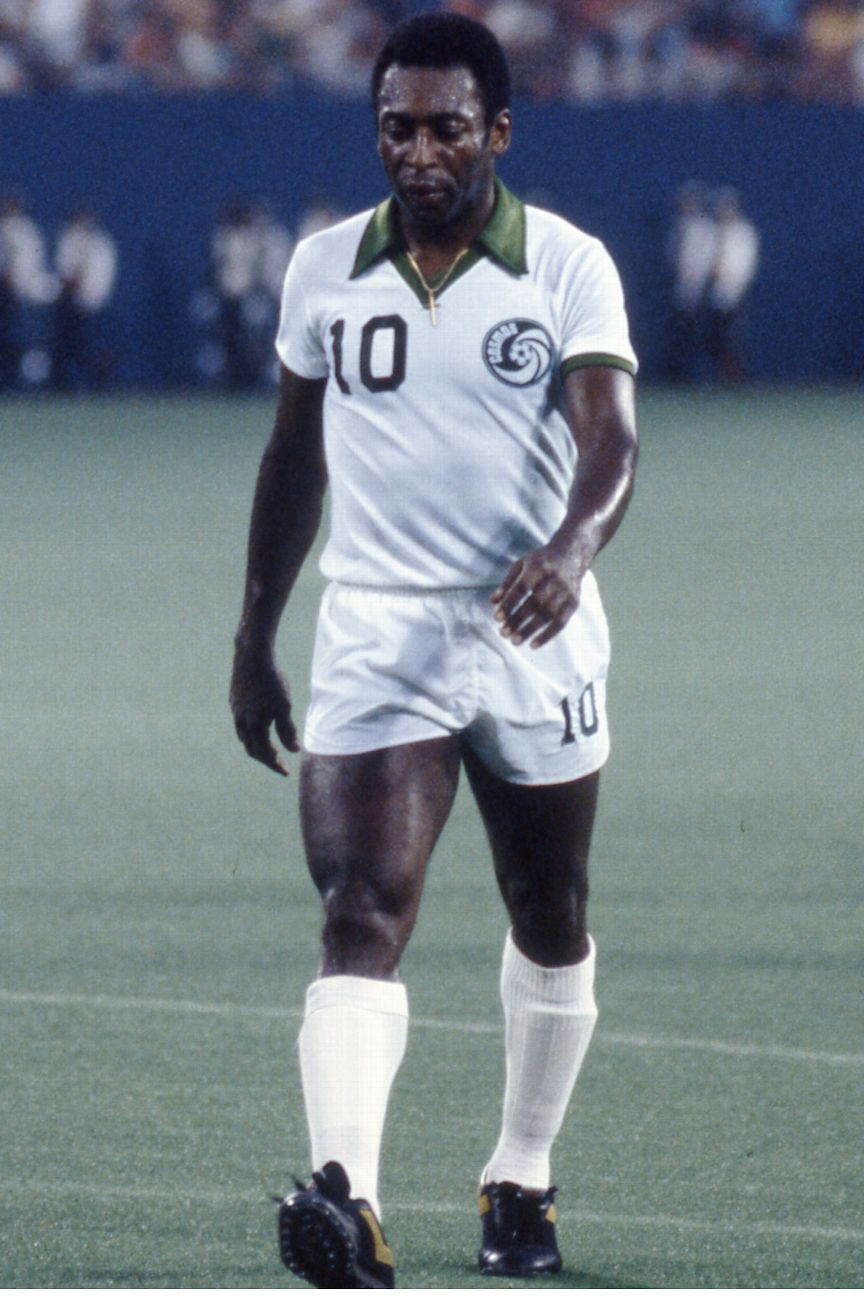
58o COSMOS DE NUEVA YORK (en casa)
Estaciones gastadas: 1975
Jugadores notables en este kit: Pelé (foto), Werner Roth
New York Cosmos jugó en verde durante los primeros cinco años de su existencia hasta que firmaron a Pelé en 1975. Debido a su éxito en Santos, que jugó en blanco, el Cosmos cambió los colores de su hogar a blanco con un borde verde. ¿Funcionó? Bueno, finalmente ganaron el campeonato NASL en 1977, Peles la temporada pasada.
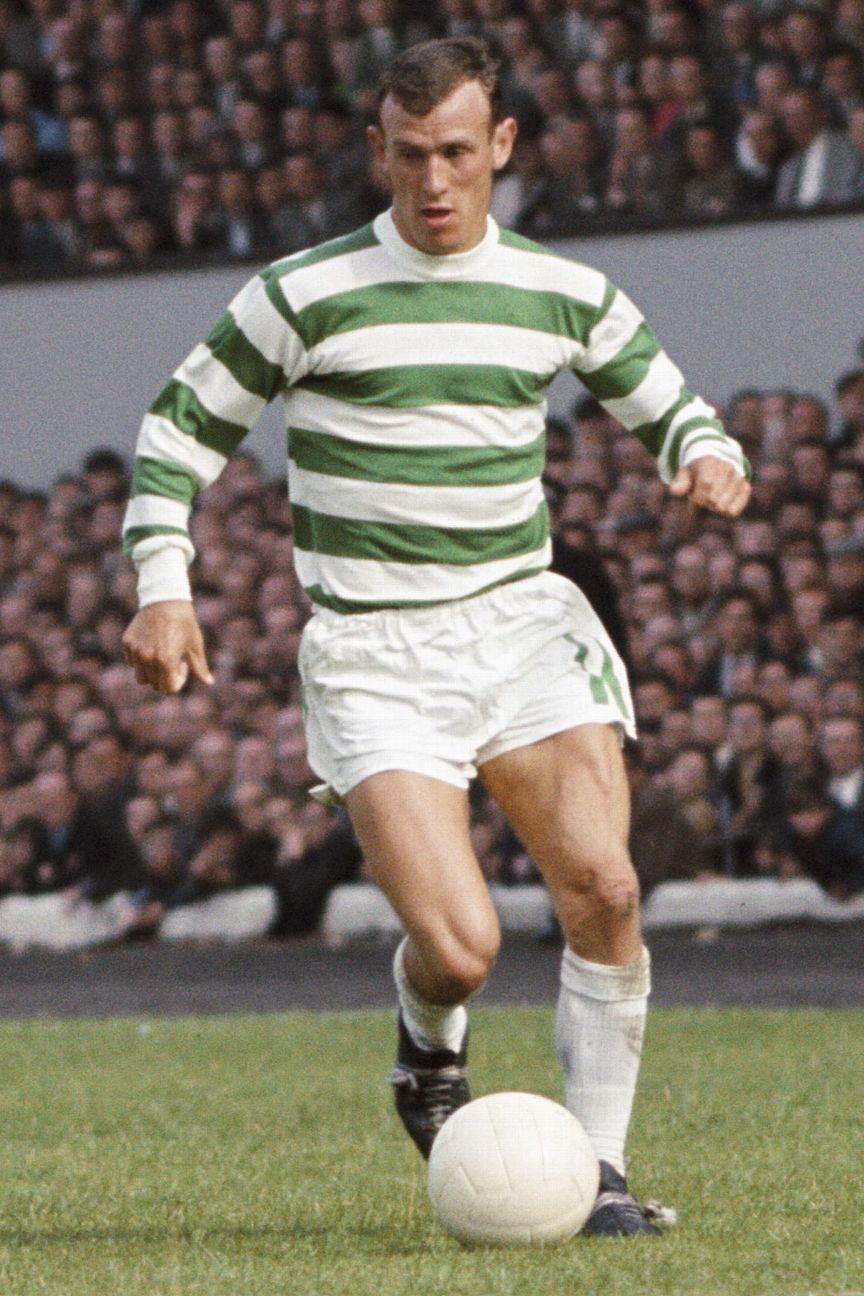
57 ° CELTIC (en casa)
Estaciones gastadas: 1965-72
Jugadores notables en este kit: Bobby Lennox (en la foto), Jimmy Johnstone, Willie Wallace
Para los fanáticos celtas, los neumáticos son sacrosantos, y lo mismo ocurre con el presidente tradicionalista Robert Kelly, quien se negó a poner números en la parte posterior de las camisas en la década de 1960 porque esto destruiría el verde y blanco sagrado. No es de extrañar que su equipo, que ganó la Copa de Europa en 1967, se viera tan brillante. Pero no pudieron resistirse a la forma moderna para siempre y finalmente llevaron números en 1994.
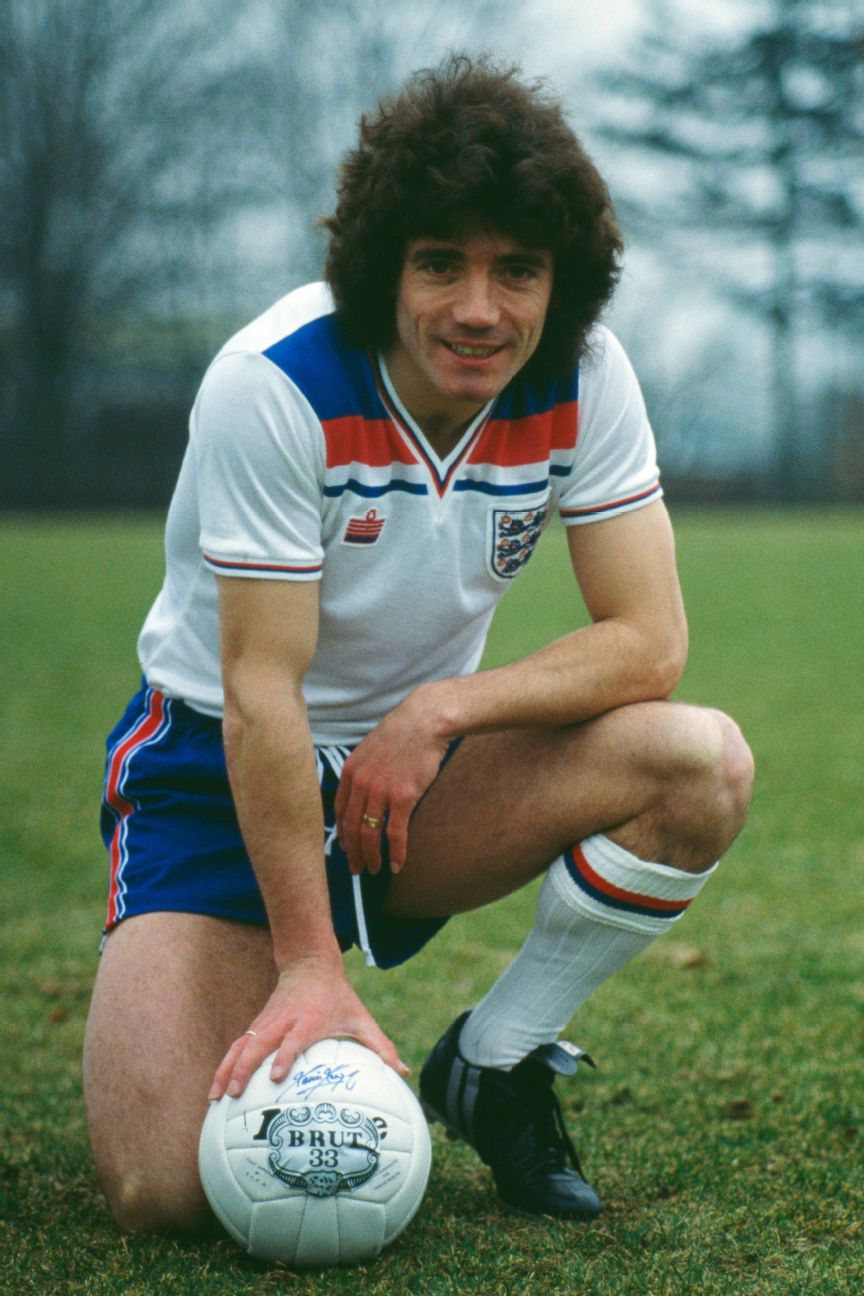
56. INGLATERRA (en casa)
Estaciones gastadas: 1982-83
Jugadores notables en este kit: Kevin Keegan (en la foto), Trevor Francis, Glenn Hoddle
El gran manager Brian Clough escribió en una columna cuando se lanzó esta camiseta: «Las envolturas son de la nueva camiseta de Inglaterra, y ahora digo que no me gusta. Parece una». de los viejos Pinnies de mi madre! «Pero el Almirante se apegó a su diseño, lo hizo» brillante «para impresionar bajo los reflectores y en la televisión, y fue apreciado gracias a una apariencia razonablemente decente en la Copa Mundial de 1982.
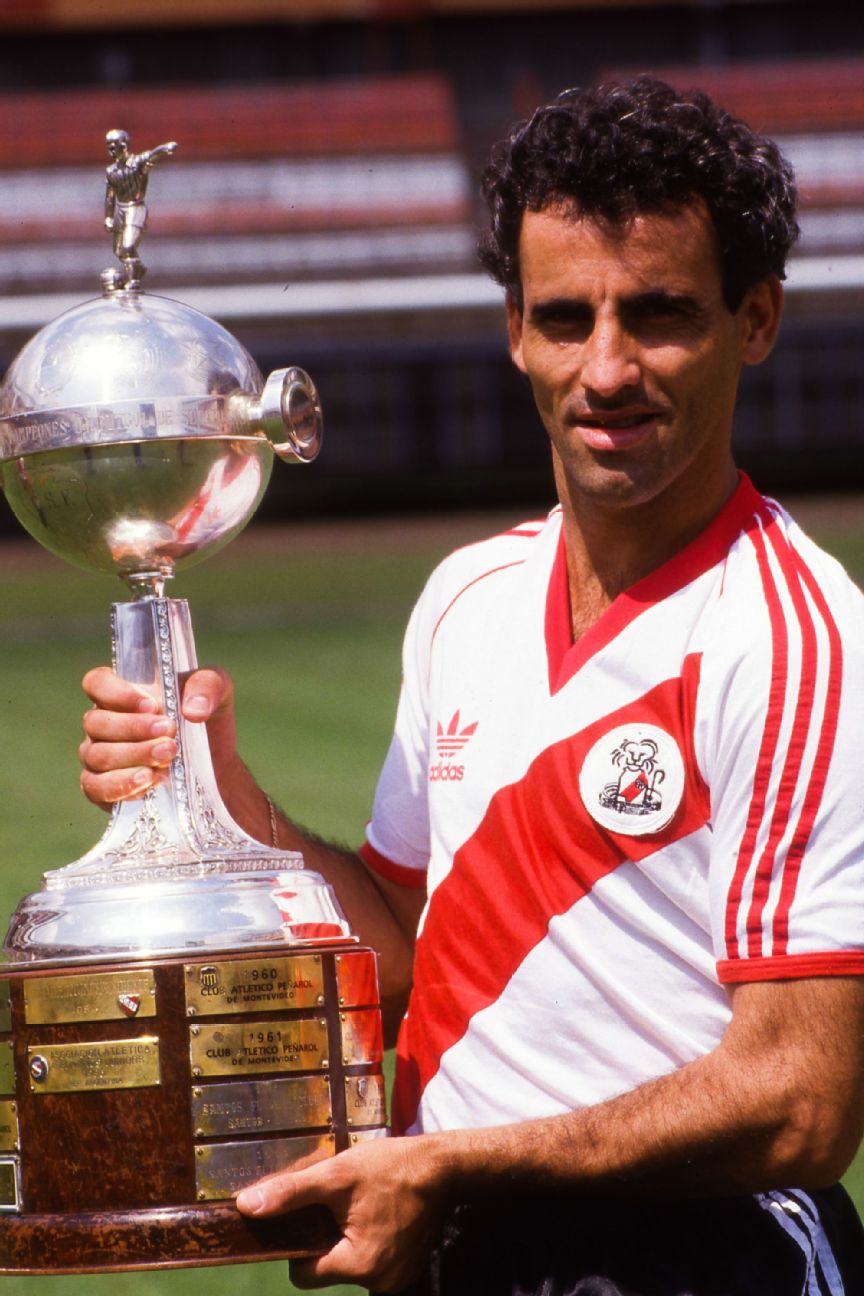
55. PLATO RÍO (en casa)
Estaciones gastadas: 1985-88
Jugadores notables en este kit: Antonio Alzamendi (foto), Claudio Caniggia, Nelson Gutiérrez
Otra faja y un clásico del género. Adidas sigue siendo el fabricante de equipos de River: el acuerdo es el segundo más largo del fabricante de equipos alemán después del Bayern de Múnich. Este equipo fue usado por el equipo que ganó un triplete impresionante de la Copa Intercontinental, la Copa Libertadores y la Primera División argentina.

54. CROACIA (en casa)
Estaciones gastadas: Copa Mundial 1998
Jugadores notables en este kit: Antes de eso Suker (foto), Zvonimir Boban, Robert Prosinecki
Croacia ha usado cuadros rojos y blancos desde su independencia en 1991, a excepción de los aburridos jerseys rojos de Kappa de 1994. En su primera Copa Mundial en 1998, Croacia apareció en estas bellezas con los cheques colgando sobre sus hombros como si alguien estuviera azotando un mantel. Terminaron terceros y este kit pasó a la historia.
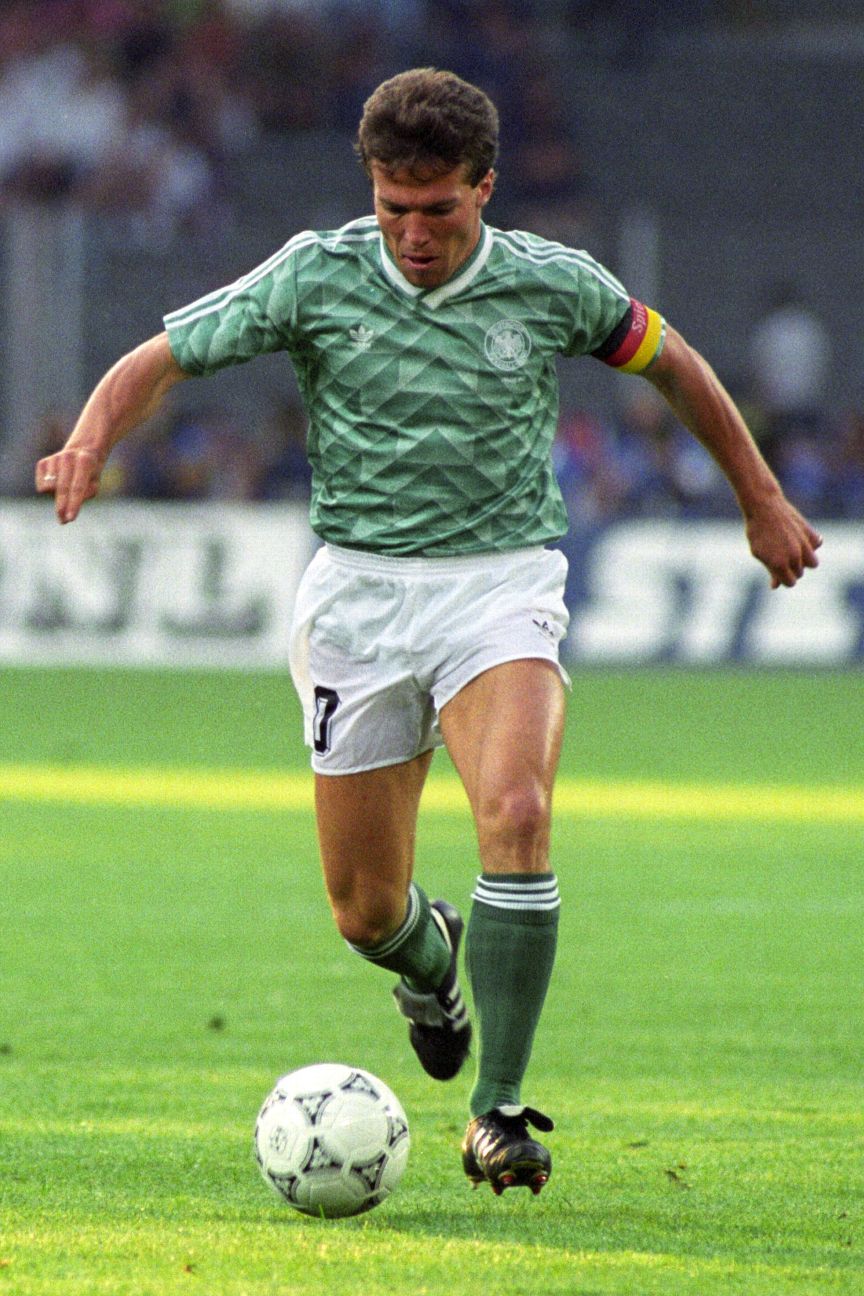
53. ALEMÁN OCCIDENTAL (lejos)
Estaciones gastadas: Copa del mundo 1990
Jugadores notables en este kit: Lothar Matthäus (foto), Jürgen Klinsmann
Existe un antiguo mito de que el color de Alemania Occidental es verde porque el primer equipo que jugaron después de la Segunda Guerra Mundial fue Irlanda. Lamentablemente, eso no es cierto. Su primer oponente de la posguerra fue Suiza en 1950, Irlanda el cuarto un año después. El color en realidad proviene del logotipo de la Asociación Alemana de Fútbol (DFB) y se vistió de verde contra Turquía en junio de 1951. Esta encarnación, la misma plantilla funky de Adidas que usaban los Países Bajos cuando ganaron el Euro 88, trajo a los alemanes una suerte similar, aunque la usaron solo una vez; Esa noche en Turín contra Inglaterra en las semifinales de Italia ’90.
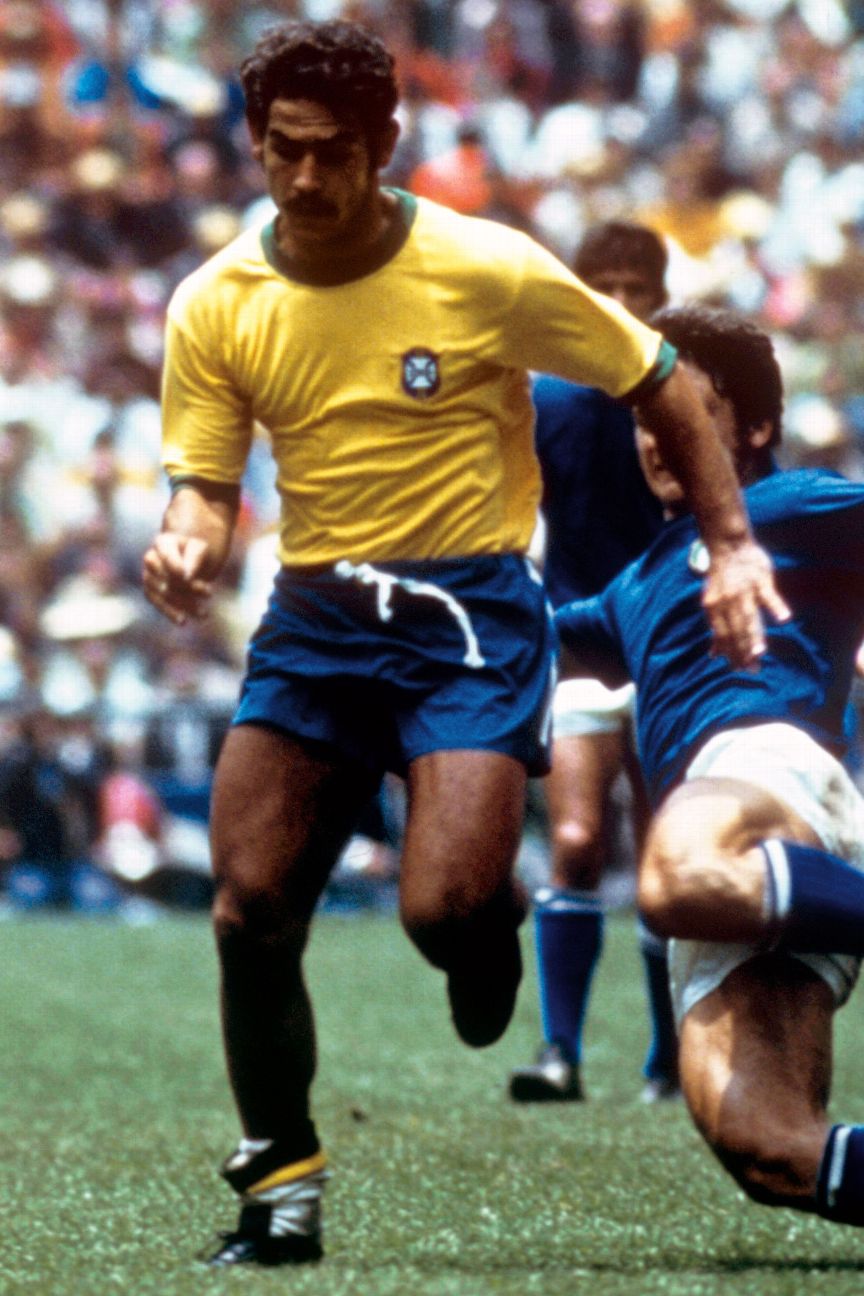
52. BRASIL (en casa)
Estaciones gastadas: Copa del mundo 1970
Jugadores notables en este kit: Rivellino (en la foto), Pelé, Jairzinho, Carlos Alberto
Brasil originalmente jugó en blanco, pero los fanáticos lo pidieron Selecao Perdió la final de la Copa del Mundo de 1950 contra los vecinos de Uruguay en su tierra natal. Después de una competencia pública, cambiaron a amarillo y verde y comenzaron a barrer todo frente a ellos. En la Copa del Mundo de 1970, donde ganaron su tercer título, usaron este kit clásico, pero en realidad tenían dos versiones diferentes en México. Una camisa de algodón tradicional del fabricante Athlete y fabricante local, y una más nueva y ligera de Umbro. En cada juego usaron el viejo durante los primeros 45 minutos y el más nuevo durante los segundos 45 minutos y continuaron ganando.
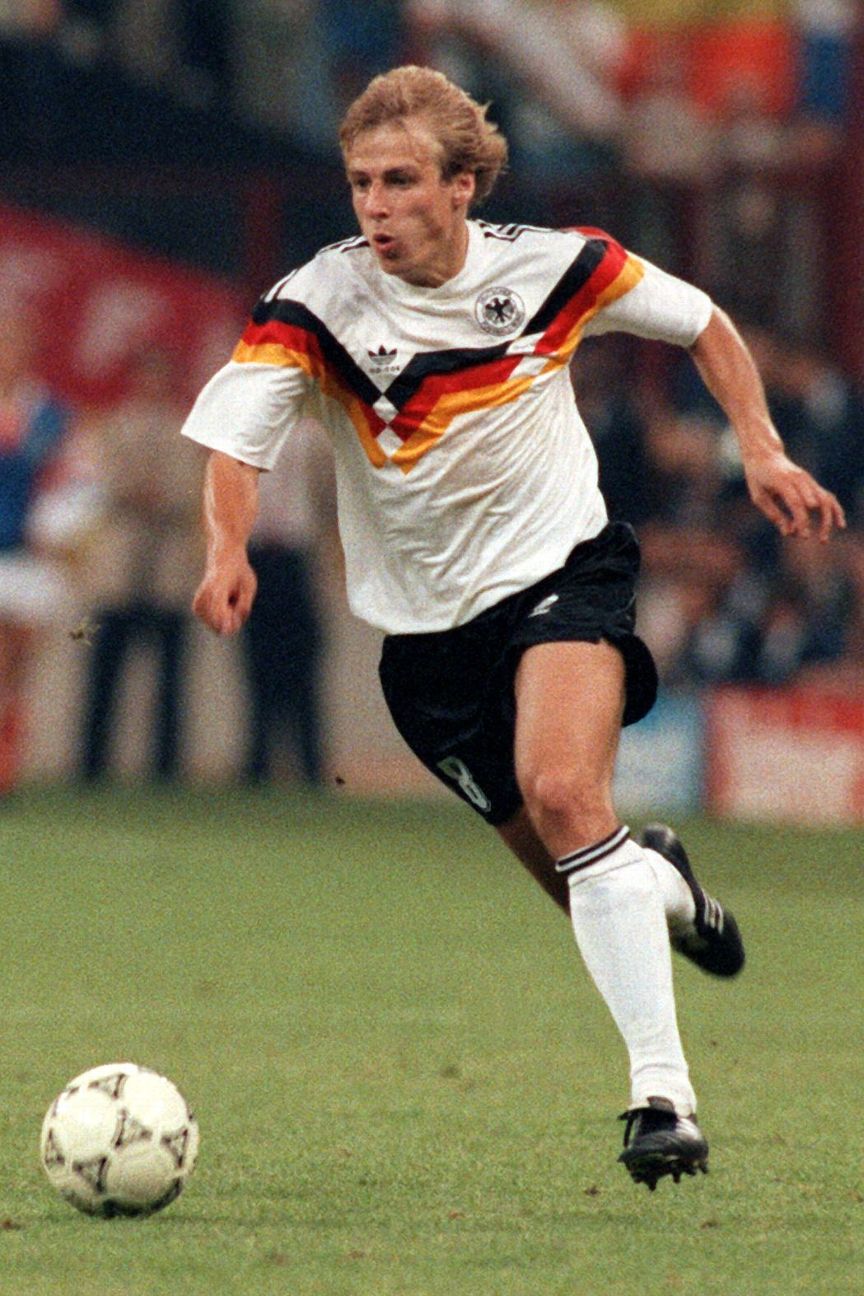
51. ALEMÁN OCCIDENTAL (en casa)
Estaciones gastadas: Copa del mundo 1990
Jugadores notables en este kit: Jürgen Klinsmann (foto), Lothar Matthäus
La triple franja biselada de este kit negro, rojo y dorado marcó una nueva y audaz dirección para Adidas. También iba a ser la primera camiseta usada por un equipo nacional alemán reunido (en diciembre de 1990) después de la caída del Muro de Berlín.
50a NIGERIA (en casa)
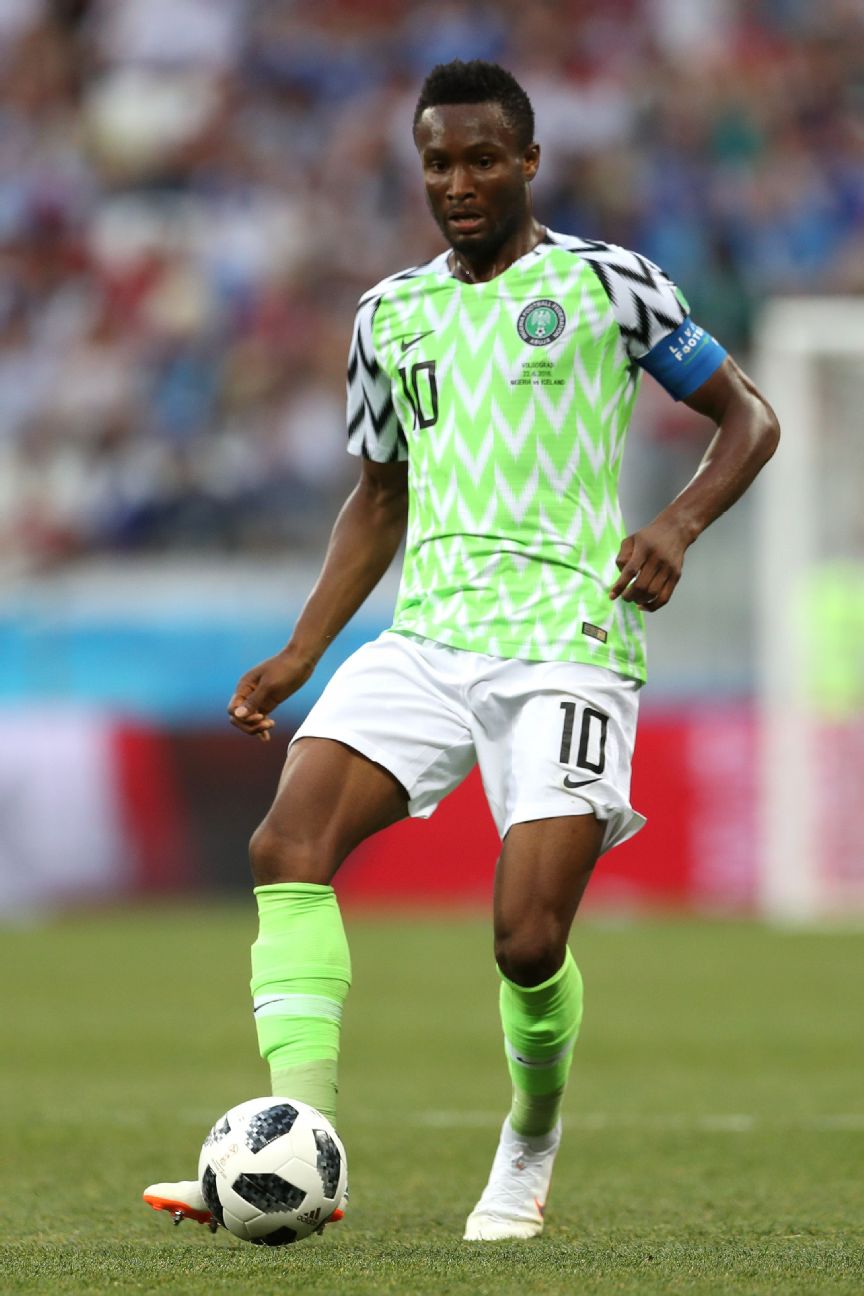
Estaciones gastadas: Copa Mundial 2018
Jugadores notables en este kit: John Obi Mikel (en la foto), Victor Moses, Ahmed Musa
Ligeramente la camiseta más popular en la Copa del Mundo de 2018. Nike se lanzó en enero de 2018 y describió el kit como un «sutil homenaje a la camiseta de Nigeria ’94». Fue un éxito instantáneo ya que 3 millones de personas lo pre-ordenaron. A pesar de la exageración, Nigeria no pudo salir de su grupo en Rusia.
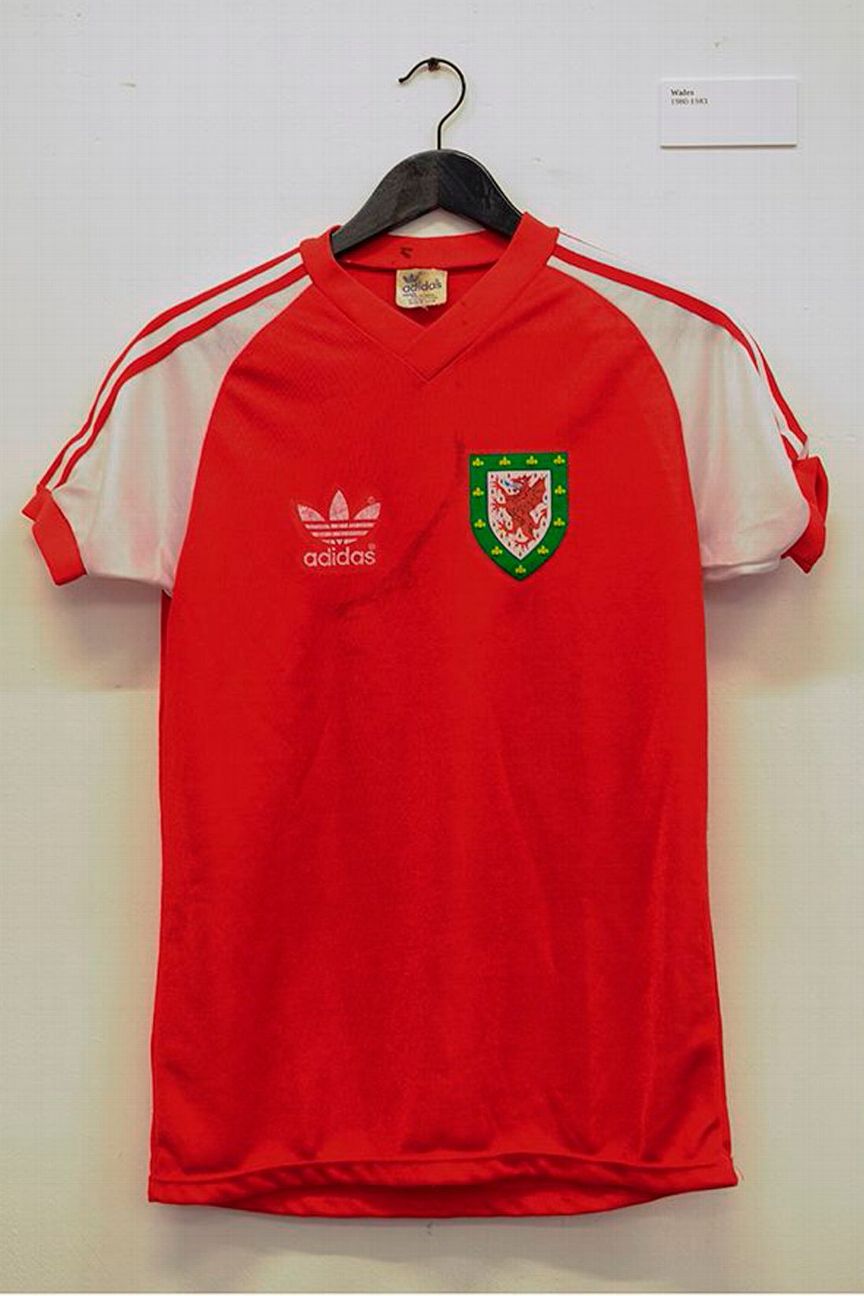
49a GALES (en casa)
Estaciones gastadas: 1980-84
Jugadores notables en este kit: Ian Rush, Terry Yorath
Después de que el fabricante británico Admiral tuviera problemas financieros, Adidas intervino y le dio a Gales mangas blancas. En ese momento, era solo otro kit, pero desde entonces se ha convertido en un clásico de culto. Lo cual es un poco extraño ya que los equipos de Gales que lo usaron no hicieron absolutamente nada espectacular; Estuvieron más cerca de la fama cuando se perdieron el Mundial de 1982 debido a la diferencia de goles.
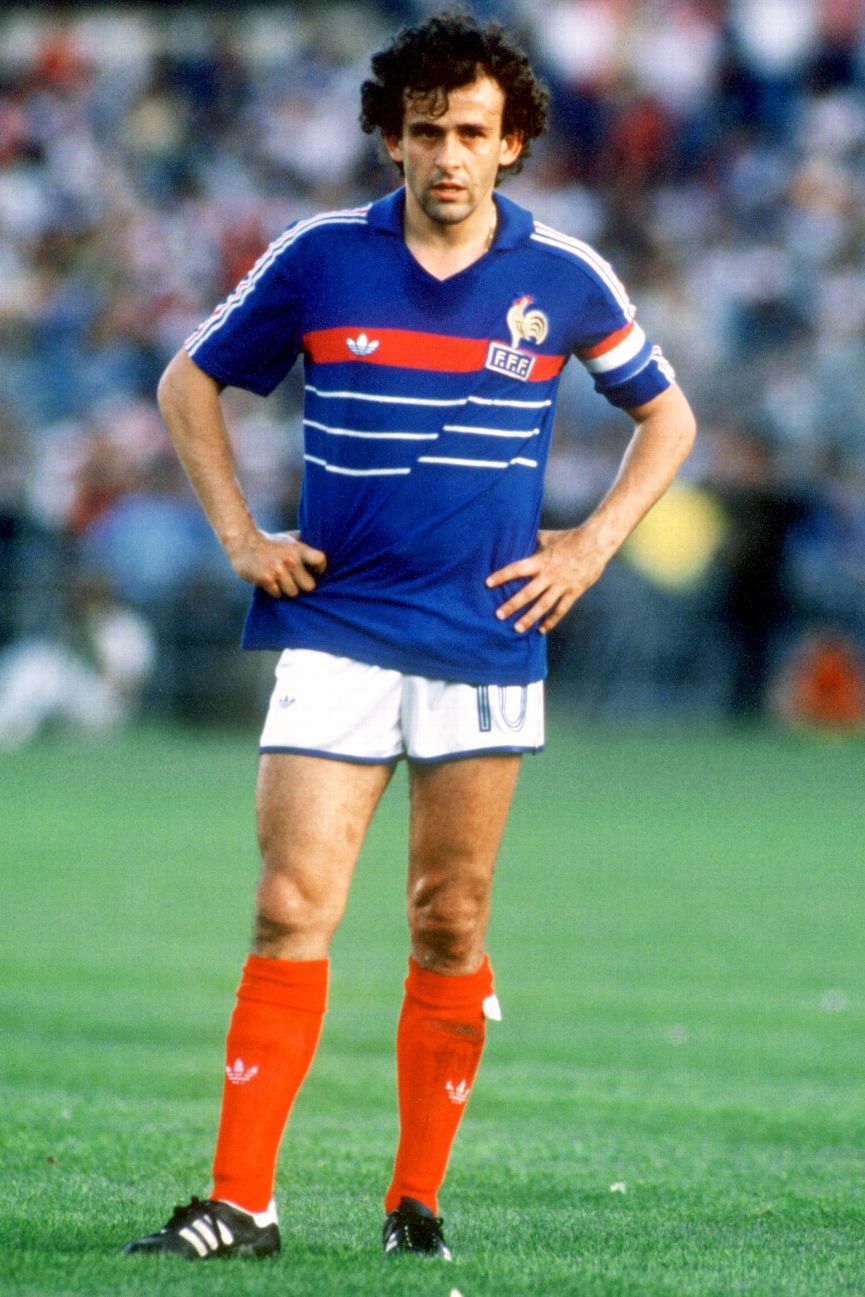
48ª FRANCIA (en casa)
Estaciones gastadas: 1984-86
Jugadores notables en este kit: Michel Platini (foto), Alain Giresse, Jean Tigana, Luis Fernández
Adidas, el kit que produjo mil kits, golpeó algo cuando diseñaron el atuendo europeo de Francia de 1984 que se celebró en su país de origen. Era la primera vez que se usaba el rojo como color principal para una camisa francesa (en el pasado sin cuello), y no solo fue un éxito, sino también de Francia. Ganaron su primer gran torneo este verano y ganaron dos trofeos más, la Copa Mundial de 1998 y la Euro 2000, en equipos que fueron fuertemente influenciados por esto.
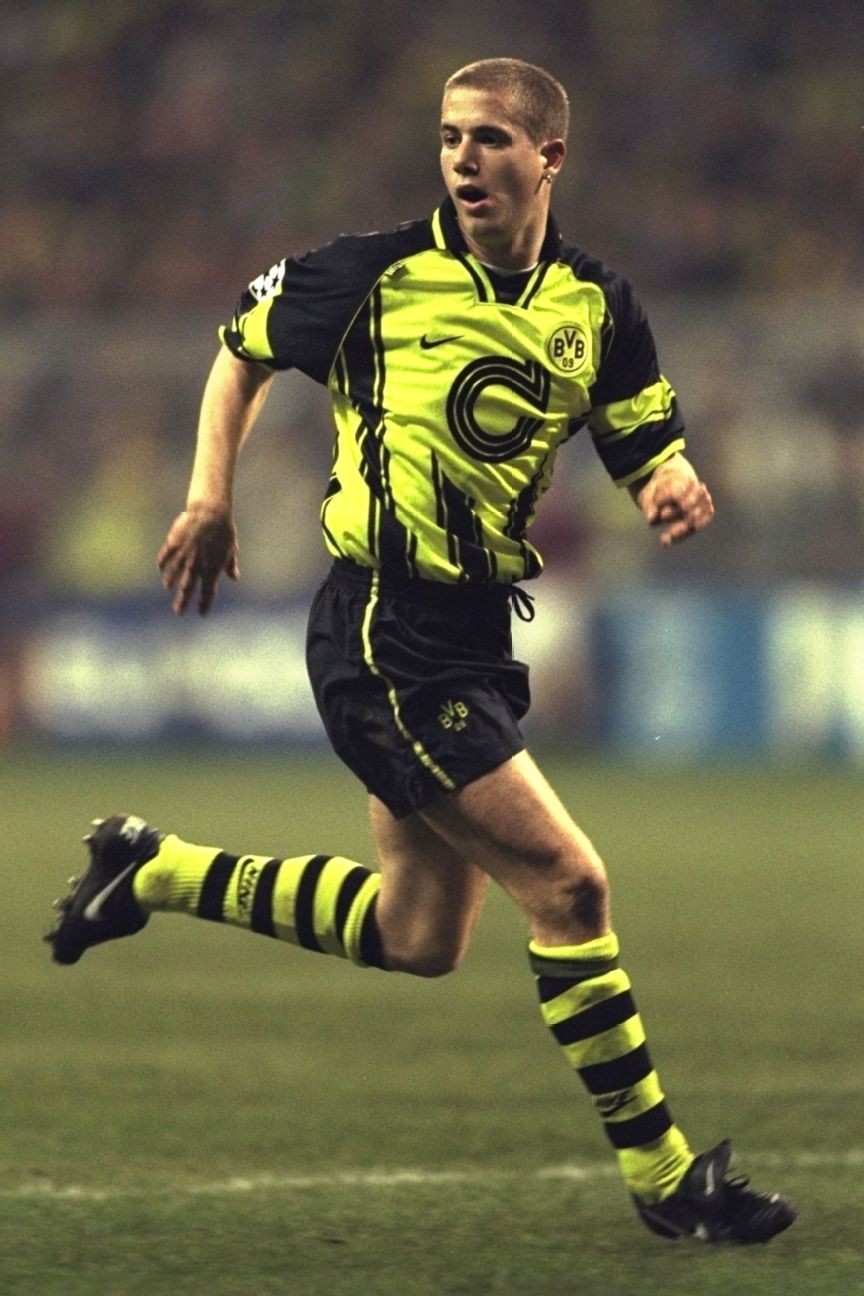
47 BORUSSIA DORTMUND (en casa)
Estaciones gastadas: 1996-97
Jugadores notables en este kit: Lars Ricken (foto), Matthias Sammer, Andreas Möller, Karl-Heinz Riedle
Dortmund usó esta camiseta en el camino hacia el primer título de la Liga de Campeones, pero no la usó en la final. En cambio, decidieron presentar su kit de casa (inferior) para la siguiente temporada. Esto tenía esta base amarilla brillante con las marcas negras de los neumáticos en la mitad inferior de la camisa y la enorme C negra de Die Continentale, lo que de alguna manera hace que una compañía de seguros alemana sea genial.
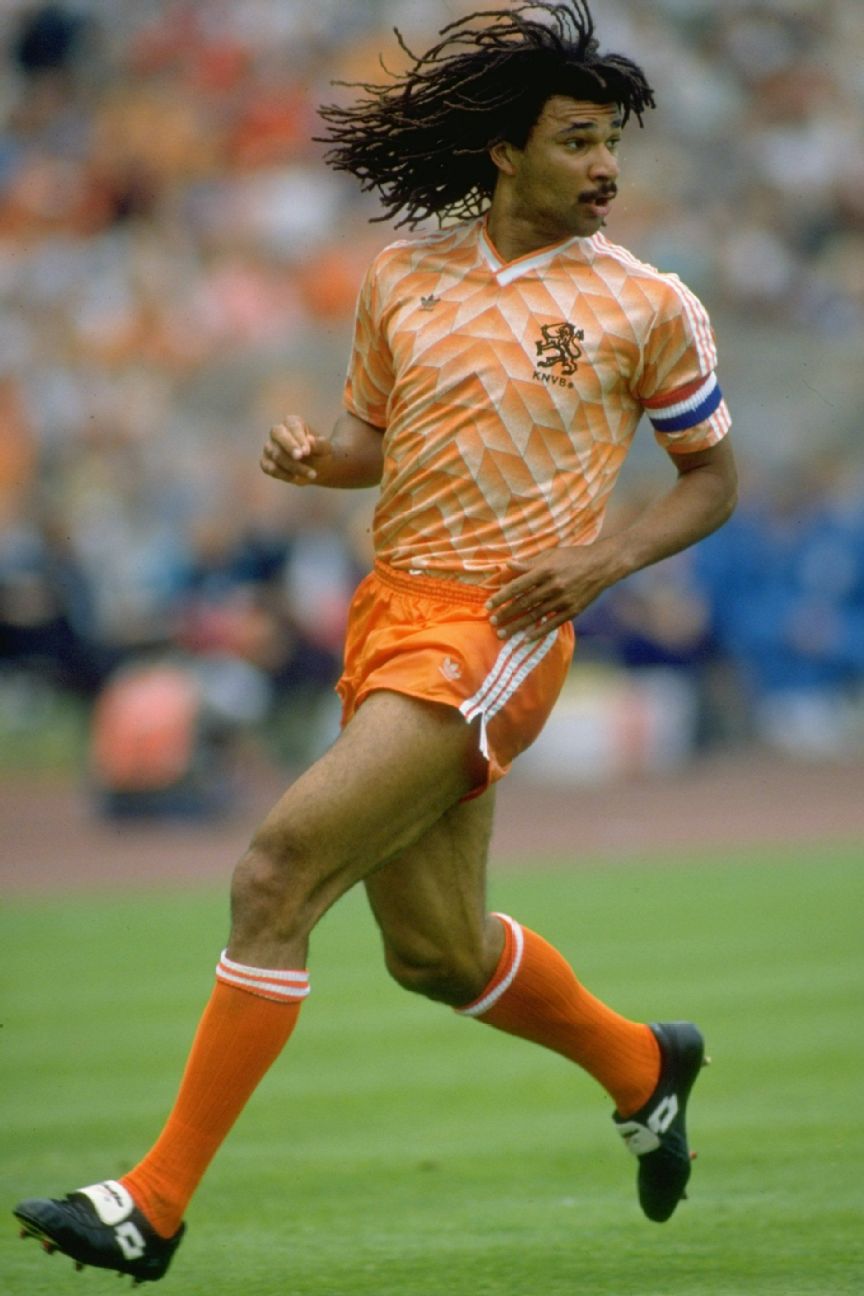
46. PAÍSES BAJOS (en casa)
Estaciones gastadas: 1988 euro
Jugadores notables en este kit: Ruud Gullit (foto), Marco van Basten, Ronald Koeman y Frank Rijkaard
Esta plantilla de Adidas está de regreso, por lo que es mejor recordarla. Las rastas de Gullit, la astucia de Rijkaard y la volea de Marco van Basten cuando los holandeses derrotaron a la Unión Soviética en Munich para reclamar su único título internacional importante.
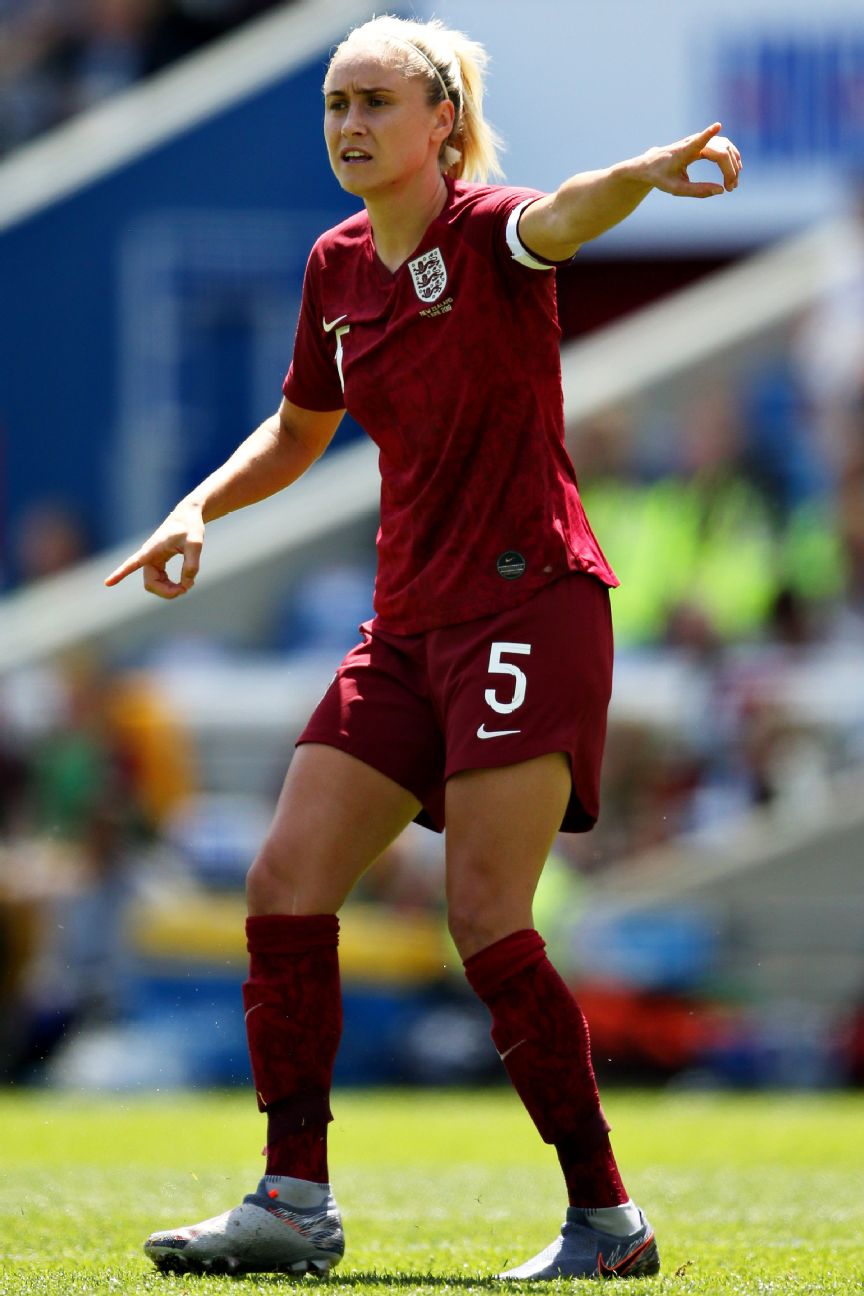
45a INGLATERRA MUJERES (fuera)
Estaciones gastadas: 2019
Bemerkenswerte Spieler in diesem Kit: Steph Houghton (im Bild), Fran Kirby, Ellen White und Lucy Bronze
Es scheint fast peinlich, dass die englische Frauenmannschaft bis 2019 brauchte, um ihre eigene Ausrüstung zu bekommen, aber als sie das tat, war es das Warten wert. Das Heimtrikot war klassisch weiß mit dunkelrotem Rand, aber der Auswärtstrip in «dunkelrotem Crush», wie Nike ihn nannte, zeigte ein verwobenes Design mit Flora aus dem ganzen Land. Der englische Stürmer Fran Kirby sagte: «Es ist großartig, Kits zu sehen, die speziell für uns entwickelt wurden.» Die Löwinnen verloren im Halbfinale gegen die späteren Sieger der USA nach einem tapferen Lauf.
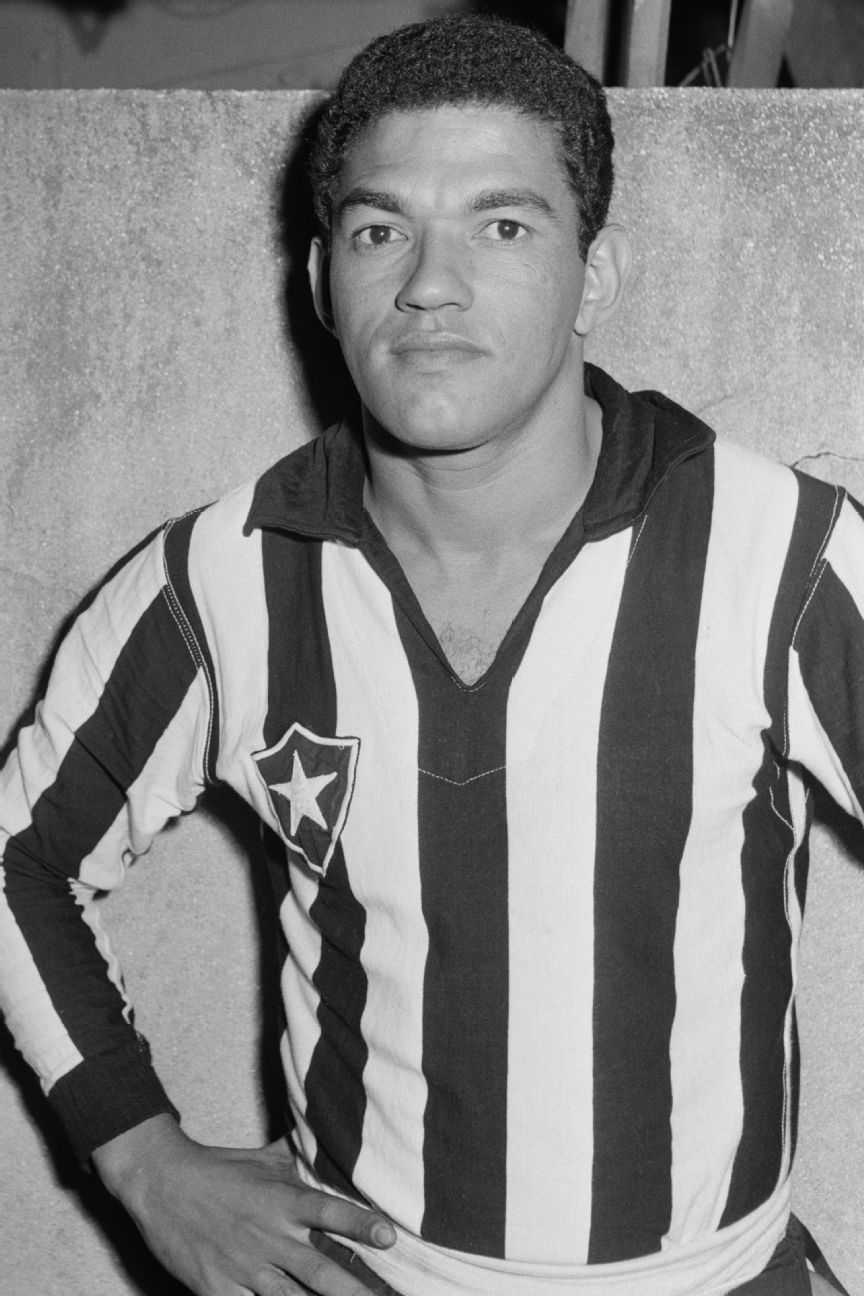
44. BOTAFOGO (zu Hause)
Jahreszeiten getragen: 1963-70
Bemerkenswerte Spieler in diesem Kit: Garrincha (im Bild), Nilton Santos
Botafogo trug die meisten 1960er und 1970er Jahre einfache Streifen und hatte einige unglaubliche Spieler, die sie trugen, nicht mehr als die unvergleichliche Garrincha. Die Aufnahme des atemberaubenden Lone Star-Abzeichens (eine Anspielung auf Botafogos Gründung als Ruderverein) hebt dieses Shirt hervor.
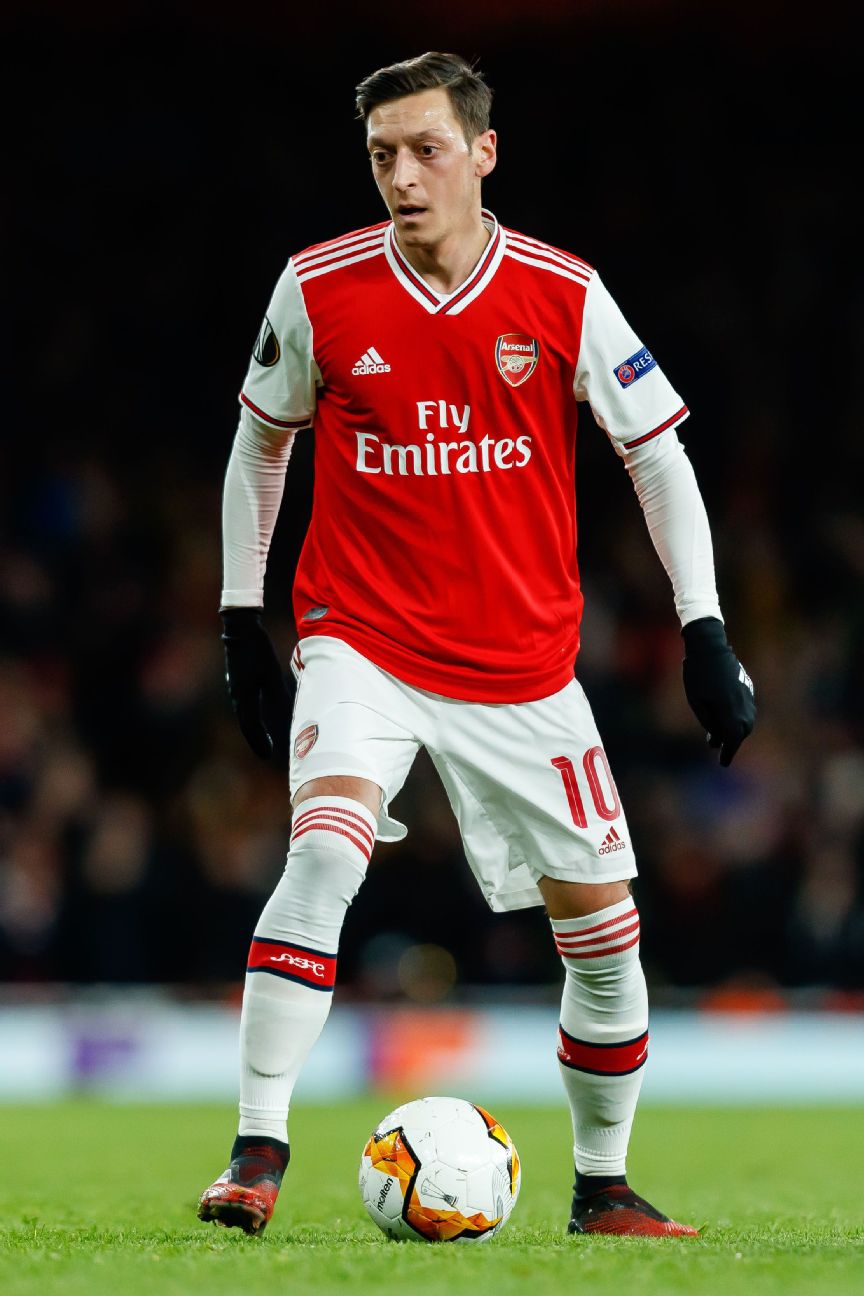
43. ARSENAL (zu Hause)
Jahreszeiten getragen: 2019-20
Bemerkenswerte Spieler in diesem Kit: Mesut Ozil (Bild), Pierre-Emerick Aubameyang, Alexandre Lacazette
Basierend auf dem Kit aus der Titelgewinnsaison 1988-89 gelang es Adidas irgendwie, das Update 2019-20 noch besser als das Original zu machen. Es war das erste Mal seit 25 Jahren, dass der deutsche Hersteller zurückkehrte, um die Gunners-Kits herzustellen. Es war also sinnvoll, zu einem Klassiker zurückzukehren. Der frühere Arsenal-Star Ian Wright hat das Kit vor dem offiziellen Start auf Instagram veröffentlicht, obwohl dieser Daumenschlag das Geschrei vor der Veröffentlichung steigerte und die Verkäufe im Vergleich zum Strip der vergangenen Saison um unglaubliche 84% stiegen.

42. TOTTENHAM HOTSPUR (weg)
Jahreszeiten getragen: 1994-95
Bemerkenswerte Spieler in diesem Kit: Jürgen Klinsmann (Bild), Teddy Sheringham, Gheorghe Popescu
Denken Sie an Klinsmanns eine volle Saison in Tottenham (er würde 1997-98 als Leihgabe zurückkehren, um den Verein vom Abstieg abzuhalten), und Sie werden wahrscheinlich an ihn im Umbro-Trikot mit seinem dunkelblauen Rücken und dem dunkelvioletten Pinselstrichmuster denken auf der Vorderseite und einem Arm. Als er es bei seinem Spurs-Debüt erzielte, trug er es, indem er sich theatralisch zu Boden warf, um Kritik von denjenigen in der britischen Presse zu üben, die ihn in der Vergangenheit des Tauchens beschuldigt hatten.
41. KOLUMBIEN (zu Hause)
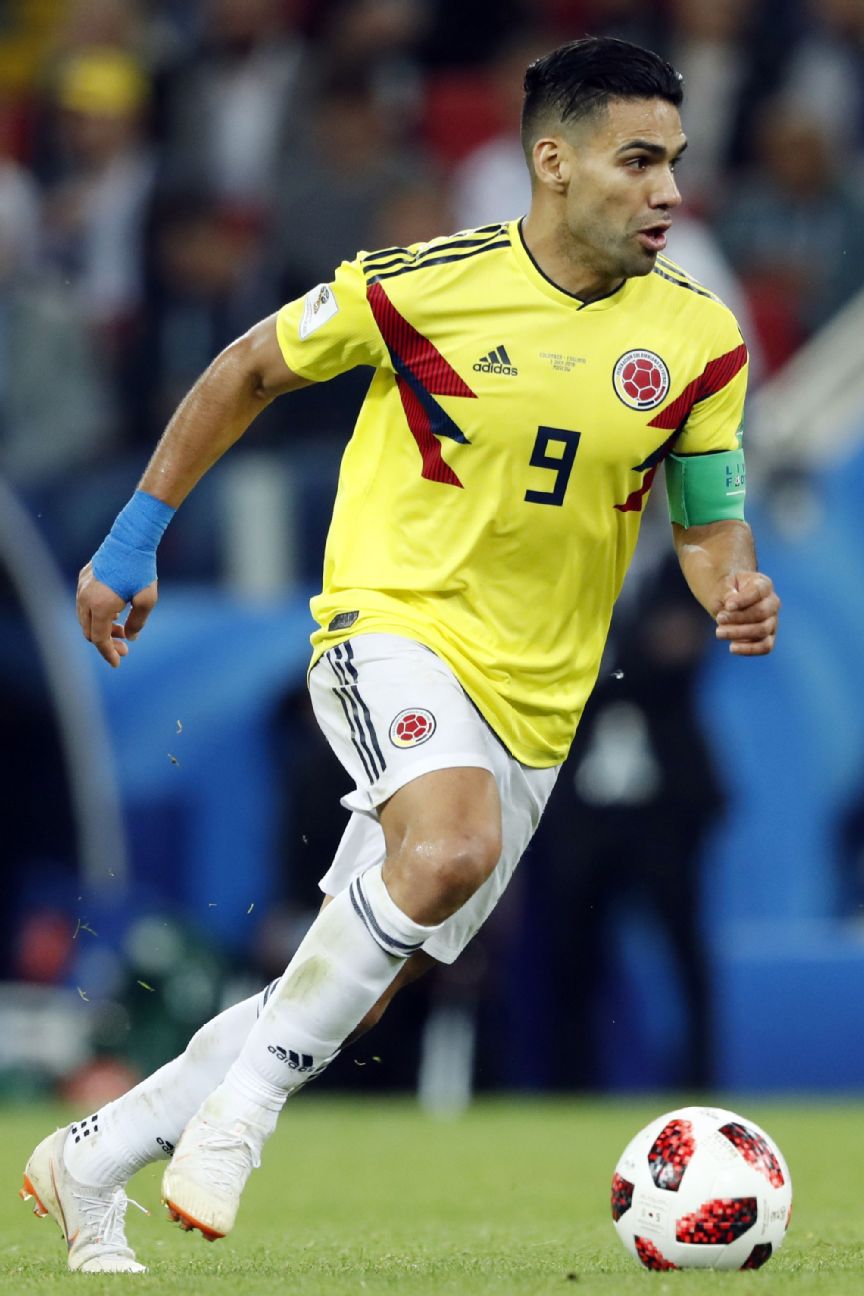
Jahreszeiten getragen: Weltmeisterschaft 2018
Bemerkenswerte Spieler in diesem Kit: Radamel Falcao (Bild), James Rodriguez, Juan Cuadrado
Adidas entschied sich 2018 für Retro; Fast alle ihrer WM-Trikots waren Anspielungen auf frühere Entwürfe. Kolumbien war eine aktualisierte Version ihrer Bemühungen von 1990. Es war eines der beliebtesten Kits des Turniers. Los Cafeteros tat genau so gut wie in Italia ’90 und erreichte das Achtelfinale.
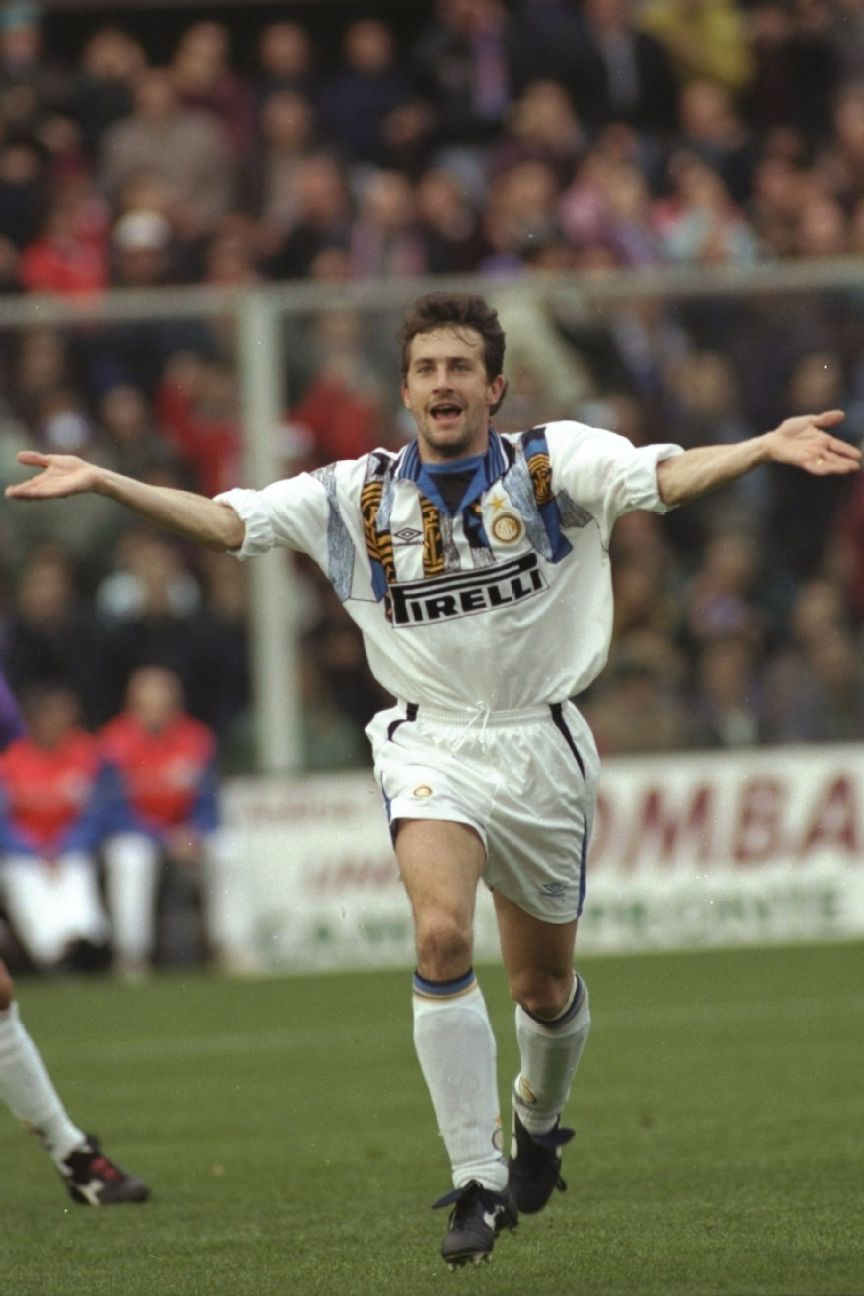
40. INTER MAILAND (weg)
Jahreszeiten getragen: 1995-96
Bemerkenswerte Spieler in diesem Kit: Maurizio Ganz (Bild), Roberto Carlos, Javier Zanetti, Paul Ince
Keine denkwürdige Saison für Inter, da sie Siebter wurden, drei Manager hatten und in der ersten Runde nach Lugano aus dem UEFA-Pokal ausschied. Aber sie haben alles getan, indem sie in ihrem weißen Auswärtstrikot mit jazzigen schwarzen und blauen Einsätzen auf den Schultern, auf denen ihr Abzeichen in Gold aufleuchtete, glänzend aussahen.
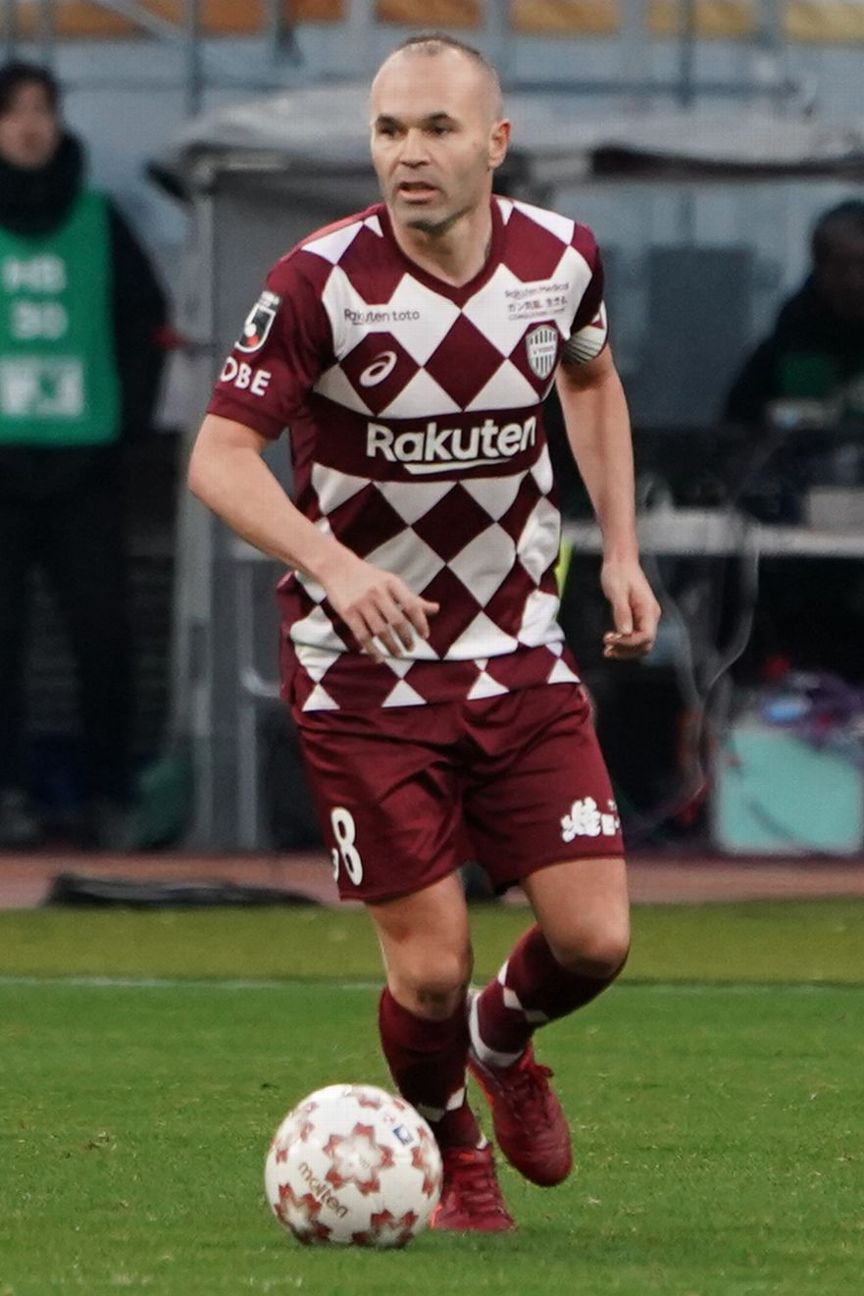
39. VISSEL KOBE (zu Hause)
Jahreszeiten getragen: 2020
Bemerkenswerte Spieler in diesem Kit: Andres Iniesta (Bild), David Villa
Diese kastanienbraunen und weißen Diamanten zeigen, dass Innovationen bei Fußballtrikots im Jahr 2020 noch möglich sind. Der japanische Verein Vissel Kobe hatte dieses Rautenmuster noch nie zuvor auf seinem Trikot gehabt, trug diesen Look jedoch bereits im Januar zum ersten Mal im Finale des Emperor Cup gegen Kashima Geweih. Es funktionierte, als sie mit 2: 0 gewannen, obwohl sie möglicherweise mehr damit zu tun hatten, dass Iniesta und Villa für sie spielten.
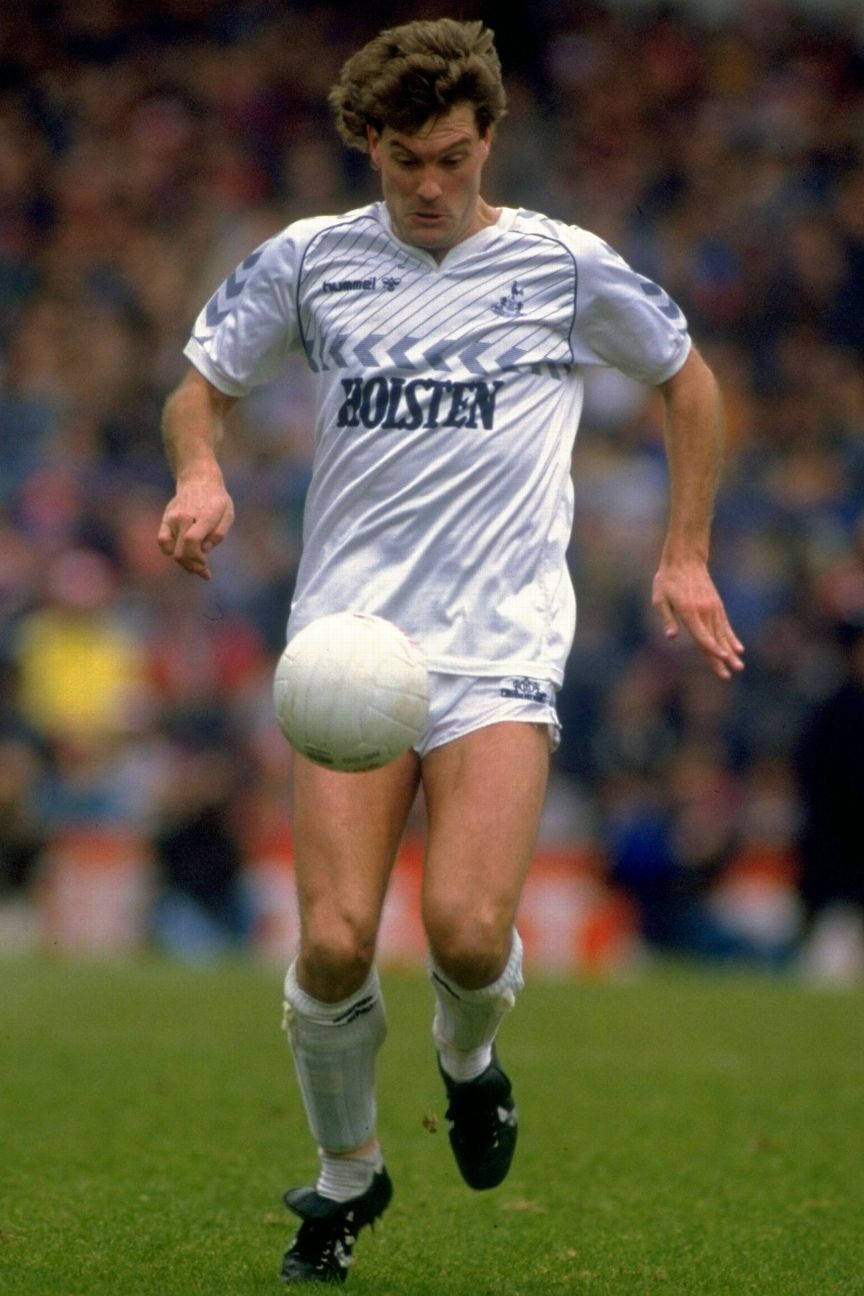
38. TOTTENHAM HOTSPUR (zu Hause)
Jahreszeiten getragen: 1985-87
Bemerkenswerte Spieler in diesem Kit: Glenn Hoddle (Bild), Chris Waddle, Diego Maradona
Als Hummel 1985 zum Kit-Hersteller von Spurs wurde, sorgten sie mit der Einführung der Marine an der Vorderseite des Kits für Furore, indem sie sich der fast hundertjährigen Tradition widersetzten. Die klassischen Hummel-Chevrons waren auch da, den Arm hinunter. Sie wechselten die Shorts von Marine zu Weiß, was eine weitere große Abkehr war. And no, that’s not a typo, Diego Maradona really did play for Tottenham in this kit, during Ossie Ardiles’ testimonial against Inter Milan in May 1986.
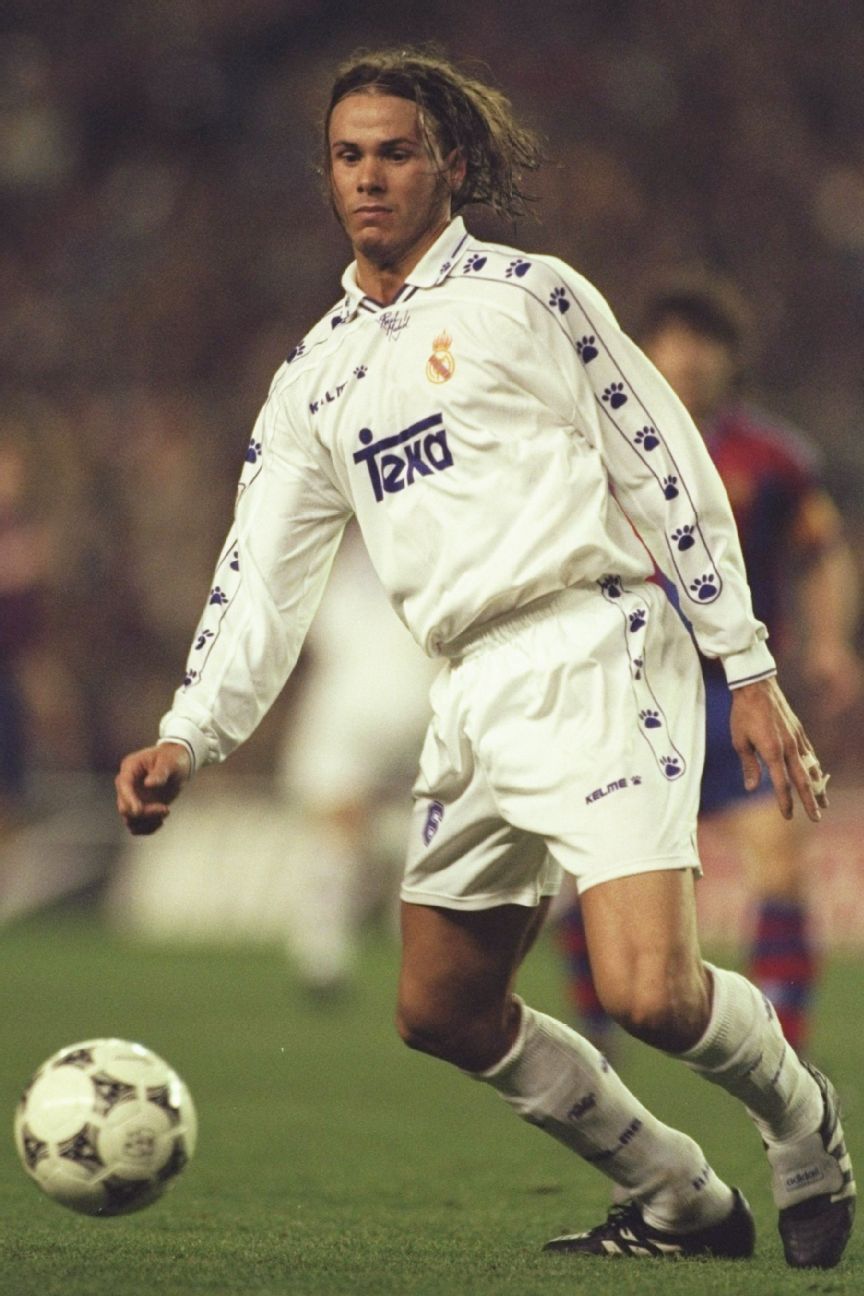
37. REAL MADRID (home)
Seasons worn: 1994-96
Notable players in this kit: Fernando Redondo (pictured), Clarence Seedorf, Raul, Fernando Hierro, Michael Laudrup
This kit is all about manufacturer Kelme, a tiny Spanish company more known for its cycling apparel that supplied shirts for European football giants. Their iconic little paw print down the sleeves is certainly distinctive. Kelme now provide kits for Premier League side Watford.
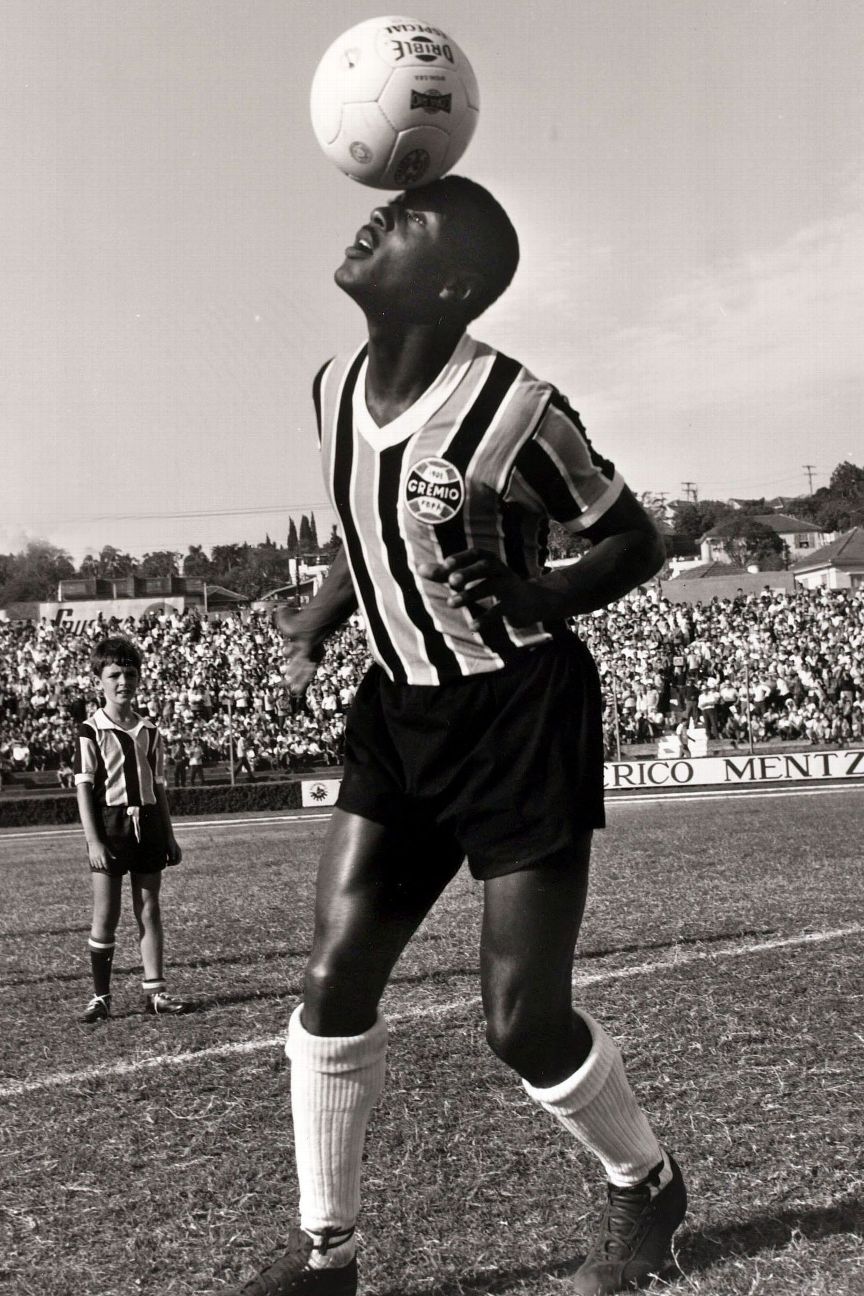
36. GREMIO (home)
Seasons worn: 1963
Notable players in this kit: Everaldo (pictured)
Gremio’s club colours were originally inspired by those of English club Exeter City. After various different versions, they landed on black-and-blue stripes with white piping in 1928. The gold star above the Porto Alegre-based club’s crest is in honour of legendary full-back Everaldo, who won the World Cup with Brazil in 1970.
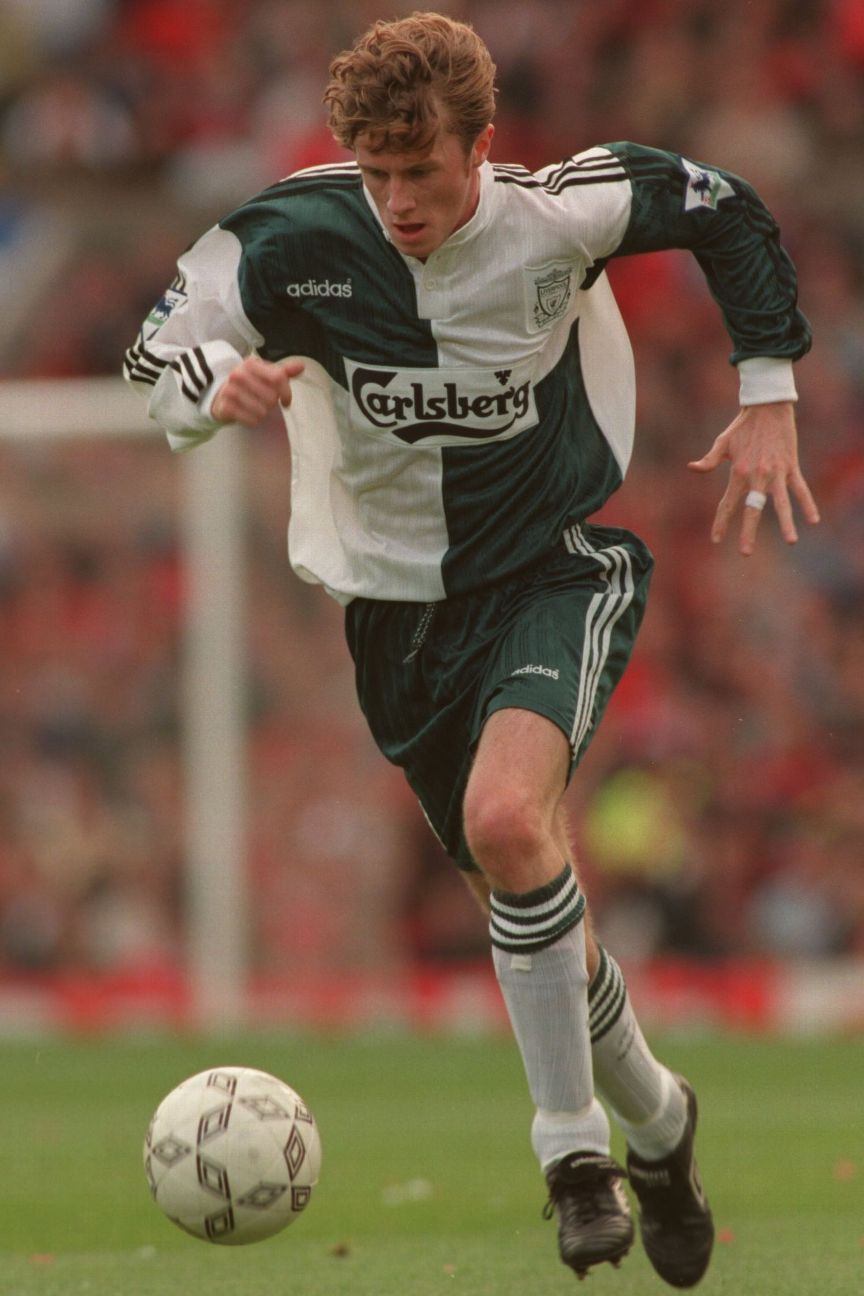
35. LIVERPOOL (away)
Seasons worn: 1995-96
Notable players in this kit: Steve McManaman (pictured), Robbie Fowler, John Barnes, Jamie Redknapp
Liverpool first had a taste of green as their away kit four years earlier but really pushed the boat out with this quartered kit design. They wore this kit in the 1996 FA Cup final defeat to bitter rivals Manchester United. However, it is the awful cream suits worn by Jamie Redknapp, David James and the rest of Liverpool’s «Spice Boys» upon arriving at Wembley that live longest in the memory from that day.
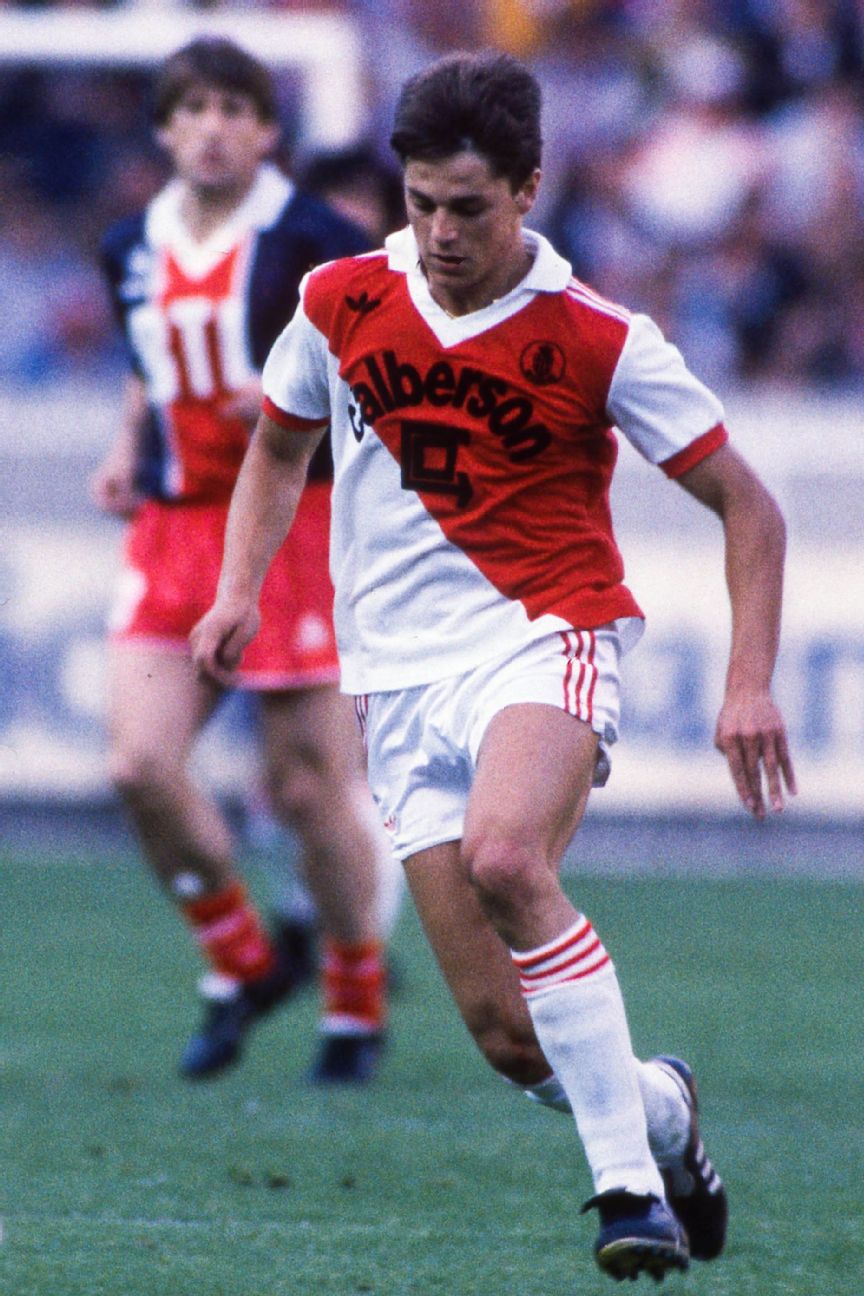
34. AS MONACO (home)
Seasons worn: 1984-85
Notable players in this kit: Daniel Bravo (pictured), Philippe Anziani, Bernard Genghini
Monaco’s distinctive kit template was designed by Oscar-winning actress Grace Kelly, who became Princess Grace of Monaco when she married Prince Rainier III in 1956. Her royal duties included designing the fledgling AS Monaco’s kit, changing their red-and-white stripes to the diagonal they wear today. It had an instant impact, as they won their first French championship a year later. This 1985 version by Adidas is one of the best incarnations.
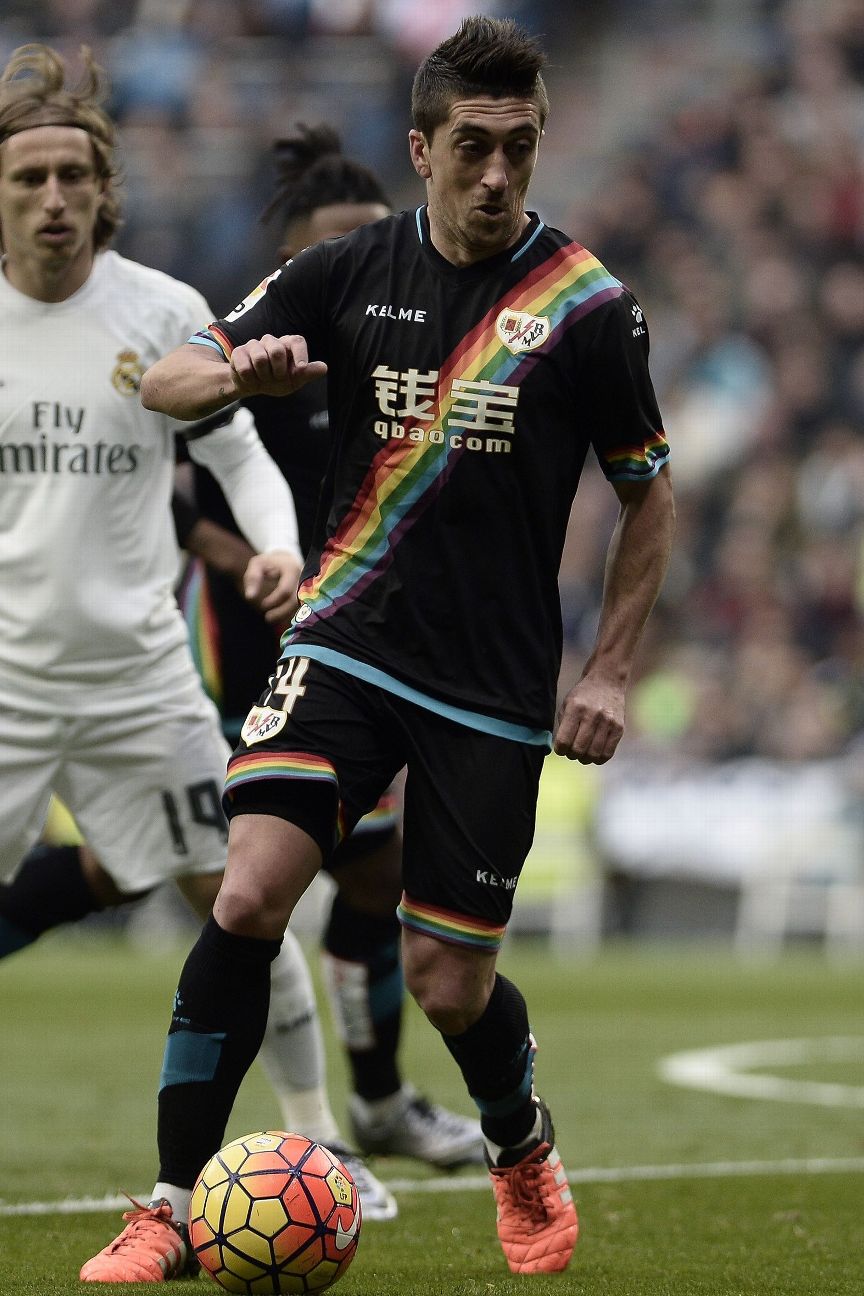
33. RAYO VALLECANO (third)
Seasons worn: 2015-16
Notable players in this kit: Pablo Hernandez (pictured), Razvan Rat, Bebe
A club known for their strides toward social justice, Madrid-based Rayo put a rainbow on their 2015-16 third kit, with each colour representing a different marginalised group in society. Red for those tackling cancer, orange for disabled people, yellow for «those who have lost hope,» green for people striving to protect the environment, blue for those fighting against child abuse and pink for the victims of domestic violence, while the rainbow itself was support for the LGBT community. They donated €7 from the sale of each shirt to charities fighting for each cause.
32. AC MILAN (home)
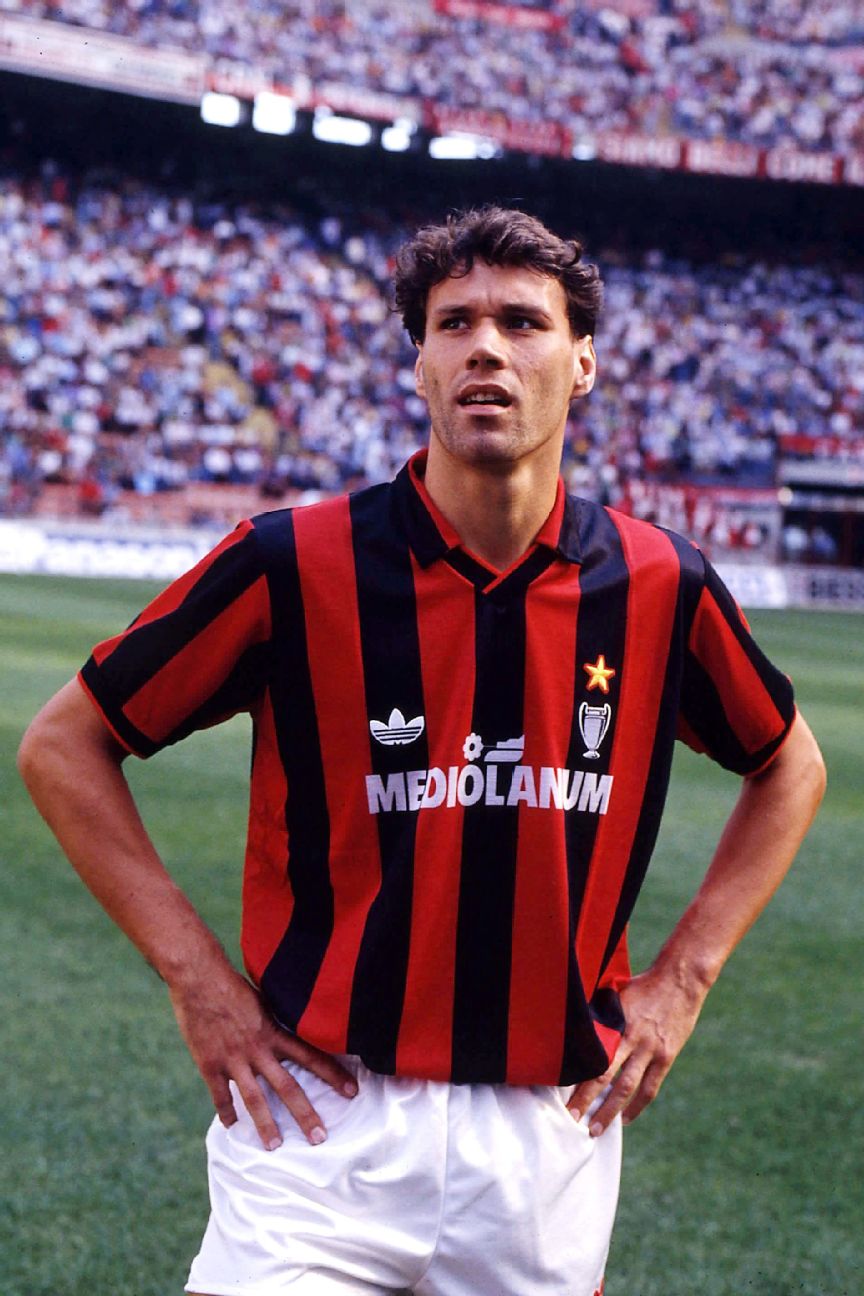
Seasons worn: 1990-92
Notable players in this kit: Marco van Basten (pictured), Ruud Gullit, Frank Rijkaard
Milan’s clubs must surely be the most consistent purveyors of quality uniforms out there, perhaps no surprise as they are based in one of the world’s fashion capitals. This one, from 1990 to ’92, with its untouched black-and-red stripes echoed in the collar and tiny Adidas trefoil, is an exemplary incarnation of one of world football’s most iconic kits.
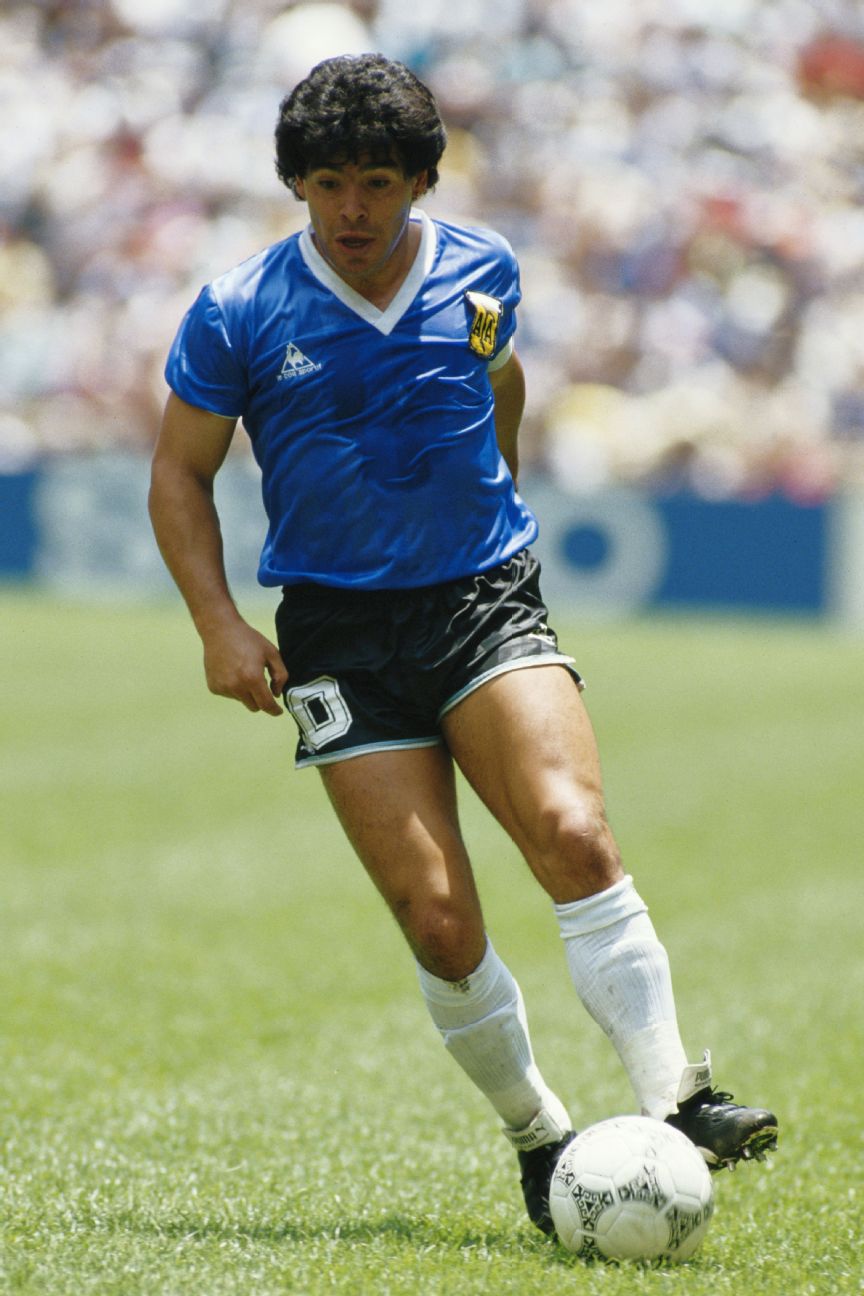
31. ARGENTINA (away)
Seasons worn: World Cup 1986
Notable players in this kit: Diego Maradona (pictured), Jorge Valdano, Daniel Passarella
Look away now, England fans, it’s the kit that Diego Maradona wore when he punched the ball into Peter Shilton’s goal and somehow got away with what would become known as his «Hand of God» goal. Maradona also scored one of the greatest solo goals ever a few minutes later. And, according to FIFA, the story behind this particular shirt also involves Maradona. Argentina coach Carlos Bilardo decided the blue cotton Aertex shirts would not be comfortable in the scorching sunshine of Mexico City. So, hours before the game, he instructed one of his coaches to head to a local sports store and buy something lighter. The coach brought back two blue kits and Maradona got to decide. He pointed to one and said: «That’s a nice jersey. We’ll beat England in that.»
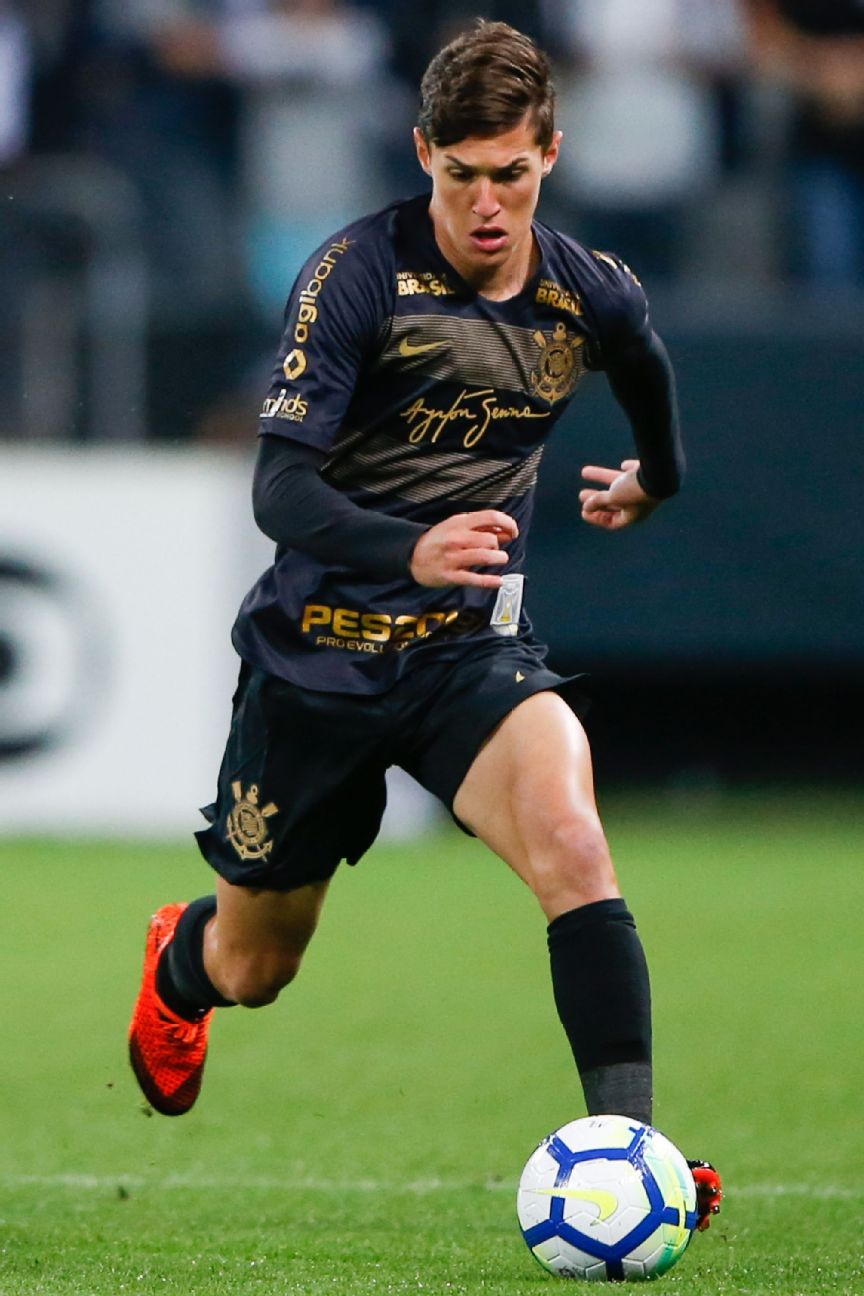
30. CORINTHIANS (third)
Seasons worn: 2018-19
Notable players in this kit: Mateus Vital (pictured), Douglas, Jadson, Gabriel
When football meets Formula 1. Motor racing legend Ayrton Senna was a big Corinthians fan, and in 2018, the Sao Paulo club released a third shirt honouring the 30th anniversary of the Formula 1 racing legend’s first world championship, an event still cherished by Brazilians. The kit included the trademark black and gold of Senna’s Lotus F1 cars, 41 golden lines representing the number of victories he achieved and his signature in place of a sponsor across the front.
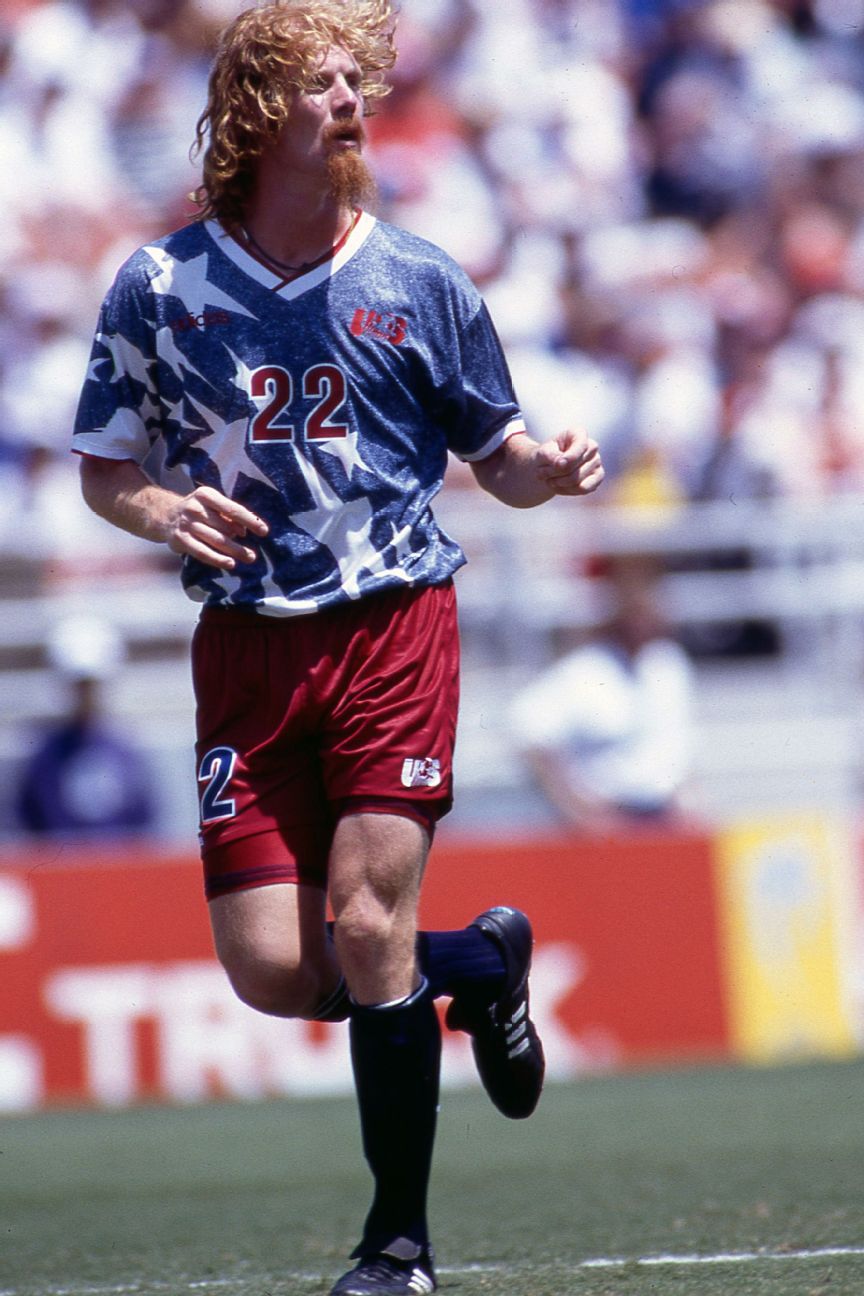
29. UNITED STATES (away)
Seasons worn: World Cup 1994
Notable players in this kit: Alexi Lalas (pictured), Cobi Jones, Roy Wegerle, Eric Wynalda
When the World Cup rocked up to the U.S. in 1994, Adidas and U.S. Soccer wanted to produce a memorable kit for the hosts. They certainly managed it with this shirt that is supposed to look like denim — and, originally was intended to be made of denim. When the players were shown it, Lalas assumed it was a prank, later admitting: «I’d be lying if I said people weren’t looking around for the hidden camera.» And yet, the denim print (which was literally photocopied from the original design) with floating stars has since come to represent that tournament perfectly: unapologetically brash, wild and memorable.
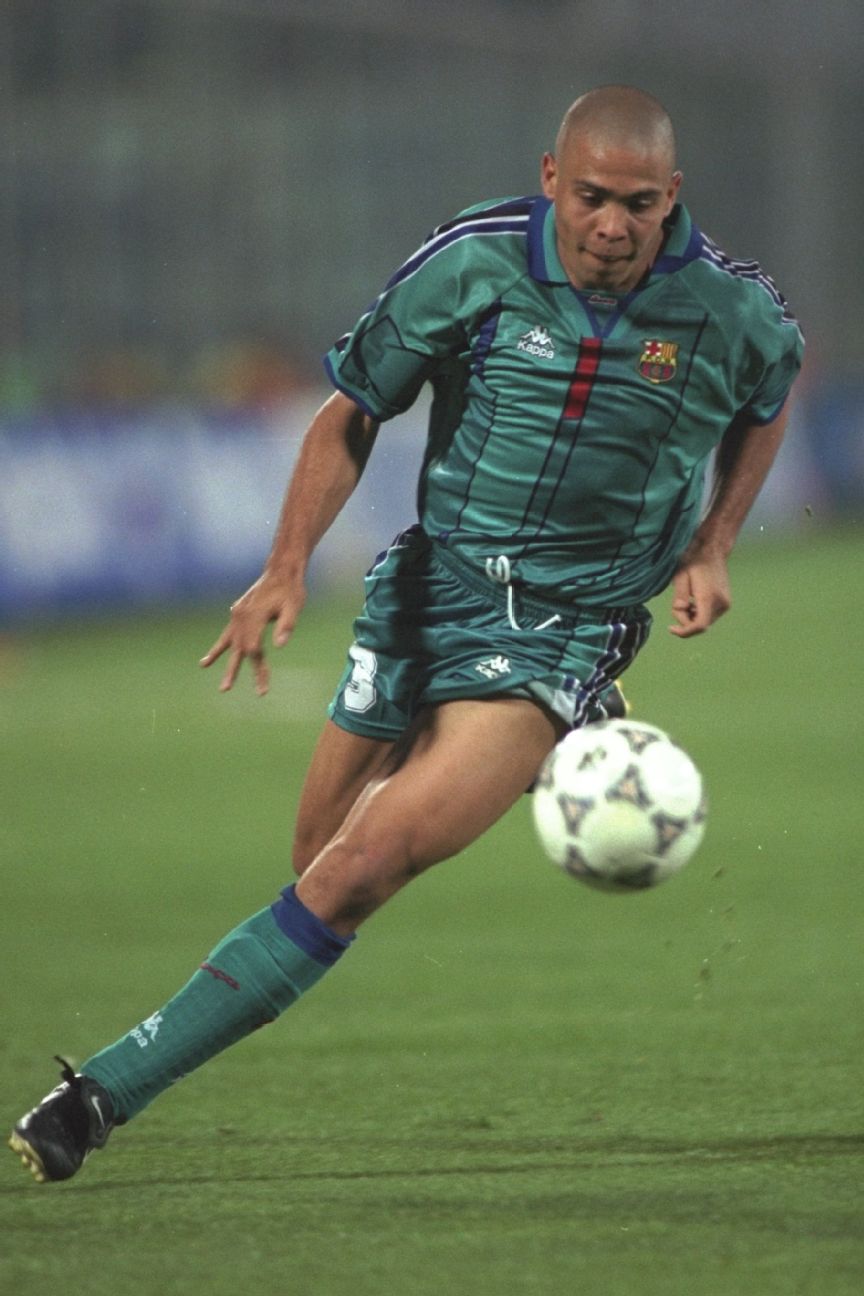
28. BARCELONA (away)
Seasons worn: 1995-97
Notable players in this kit: Ronaldo (pictured), Pep Guardiola, Luis Figo, Hristo Stoichkov, Luis Enrique
This jersey’s teal oblongs with red and blue flourishes, matched with classic Kappa logo down the sleeves, ensured Ronaldo looked good during his one season at Barcelona, when he won the FIFA World Player of the Year award for the first time.
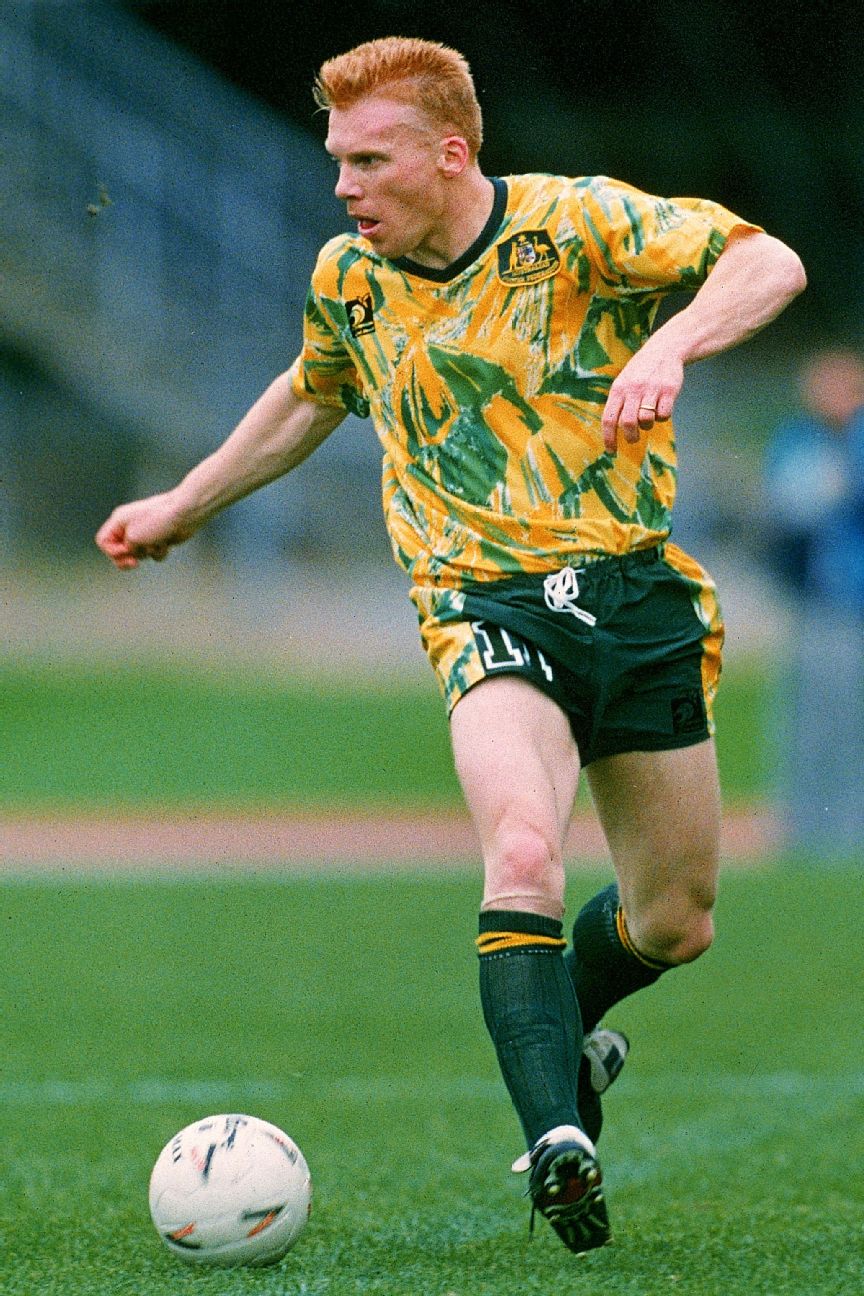
27. AUSTRALIA (home)
Seasons worn: 1990-93
Notable players in this kit: Robbie Slater (pictured), Kevin Muscat, Tony Vidmar, Ned Zelic
Just as great art isn’t always appreciated in the artist’s lifetime, this abstract kit was widely derided upon its release but has gone on to become a cult classic. Designed by KingRoo, each jersey was actually slightly different from the last as they weren’t able to regulate the print across a range of sizes. At the time, opposition players refused to swap shirts after games, but Aussie fans have since come to love what they have dubbed the «spew shirt» due to its unruly brushstrokes and bright colours. The Socceroos qualified for the 1992 Olympics, where they just missed out on bronze, wearing it.
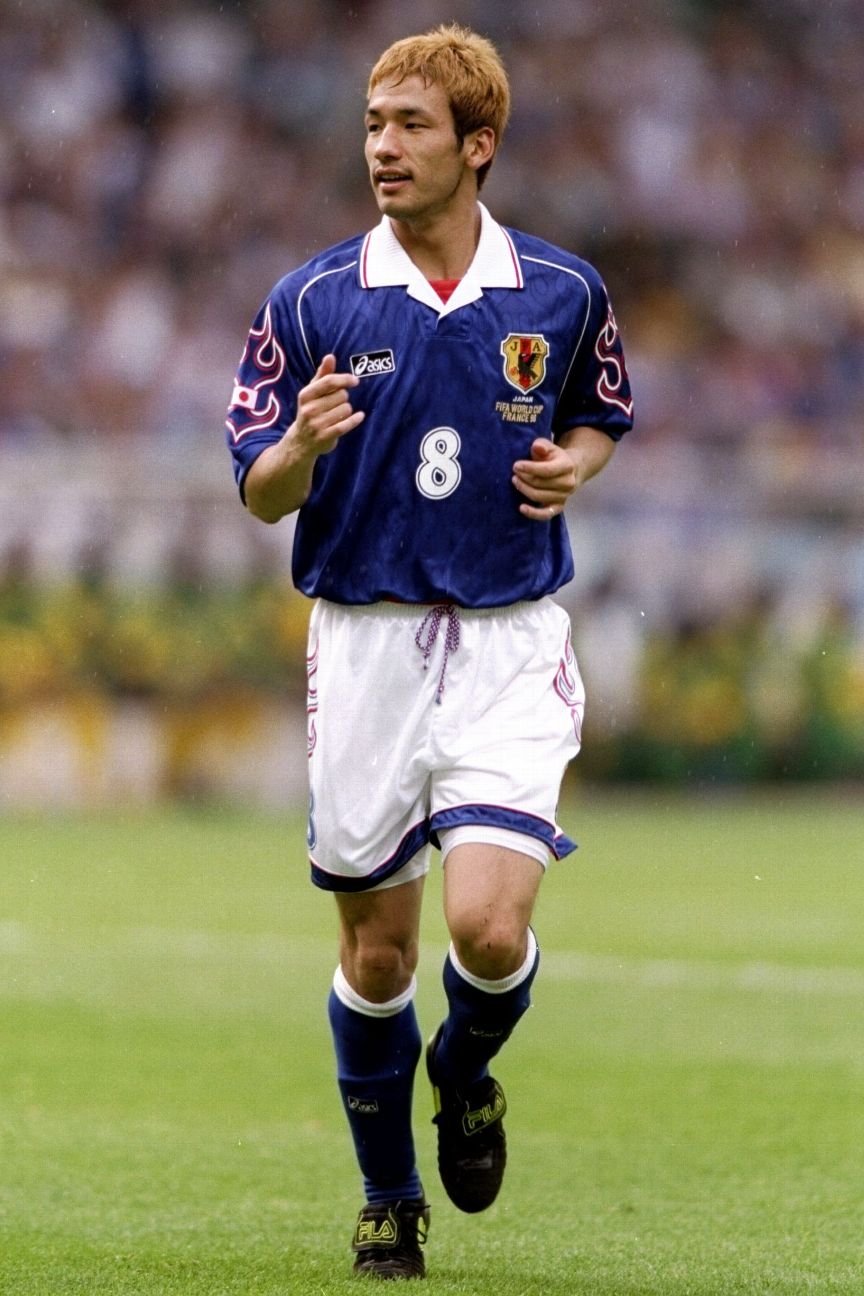
26. JAPAN (home)
Seasons worn: World Cup 1998
Notable players in this kit: Hidetoshi Nakata (pictured)
Flames on the arms. Flames on the actual arms. Japan started using that distinctive motif on their kit in 1996. Asics provided the kit for the 1996 Olympics, but Adidas became the kit sponsor for the 1998 World Cup and stuck with the same design.
25. AJAX (home)
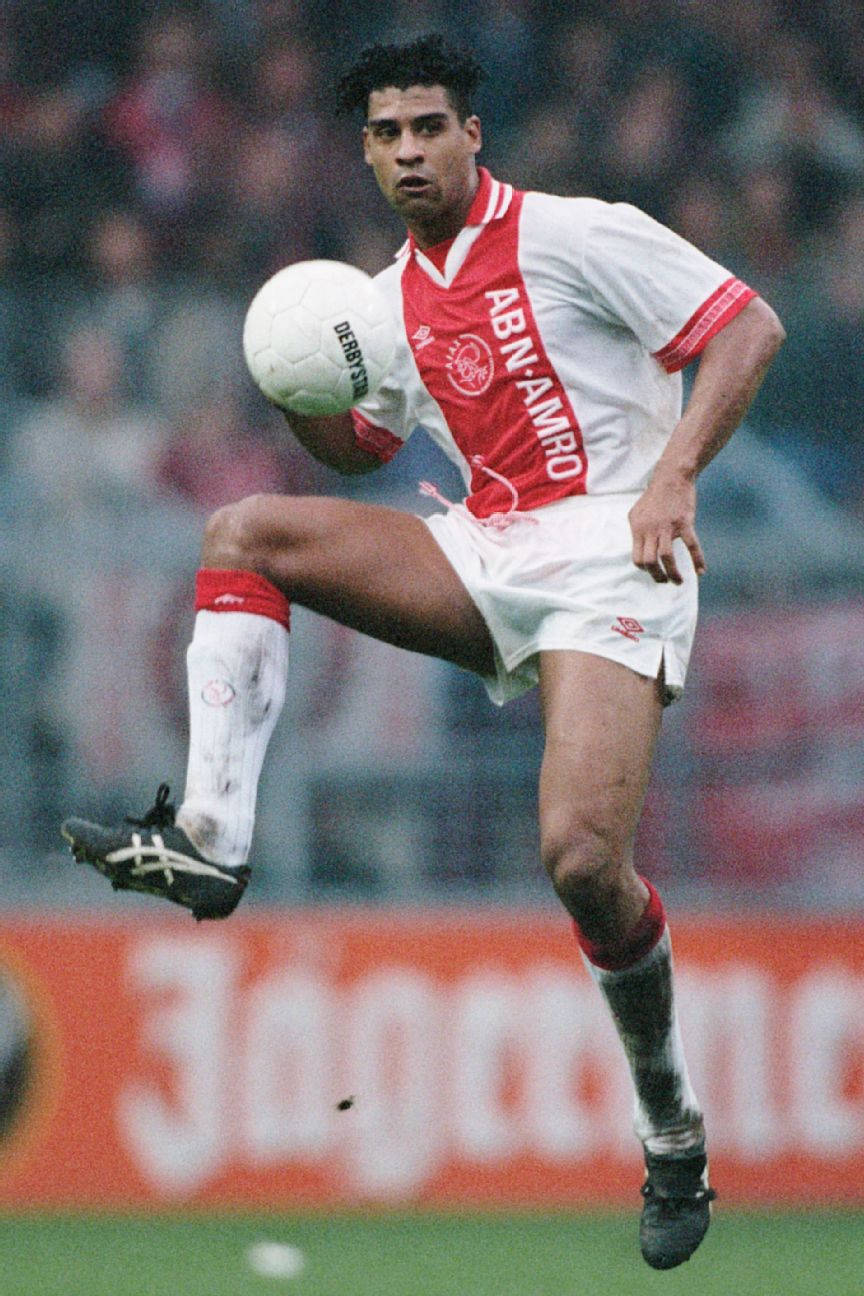
Seasons worn: 1994-95
Notable players in this kit: Frank Rijkaard (pictured), Patrick Kluivert, Edgar Davids, Marc Overmars, Clarence Seedorf
Ajax have such an iconic kit that you could pick one from any season and it would make the list. The 1994-95 season was just as good for Ajax on the pitch — they won the Champions League, Eredivisie and Johan Cruyff Shield — as it was for their kits. The Amsterdam giants kept the distinctive sponsor logo of Dutch bank ABN-AMRO turned on its side until 2008.
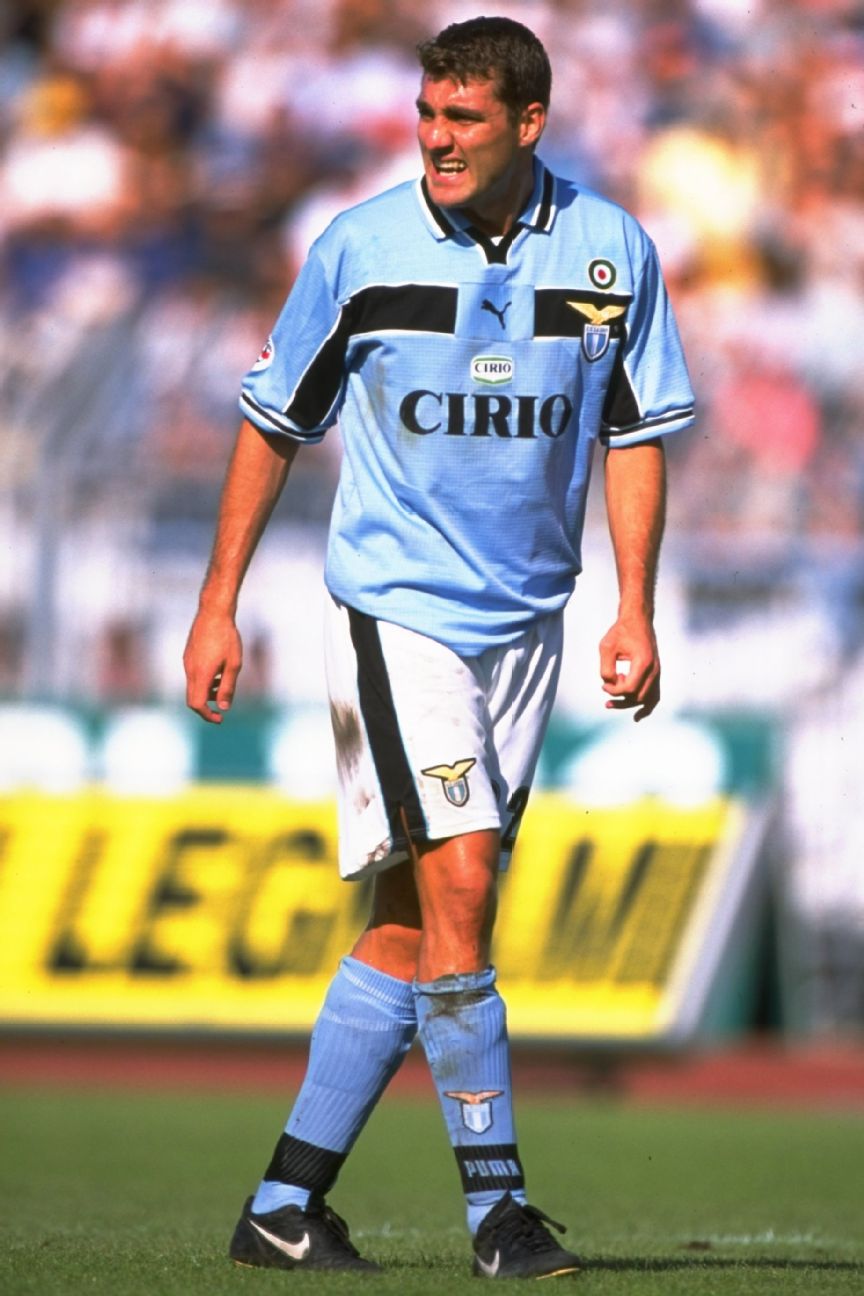
24. LAZIO (home)
Seasons worn: 1998-99
Notable players in this kit: Christian Vieri (pictured), Roberto Mancini, Diego Simeone, Pavel Nedved, Juan Veron
Around the turn of the century, Lazio had some great players in some superb kits. But this one, with its black band across the chest, was so good they recommissioned this season to mark the club’s 120th anniversary. Back in 1999, they won the Supercoppa Italiana, UEFA Cup Winners Cup and came in second in Serie A before going on to win the league the following year.
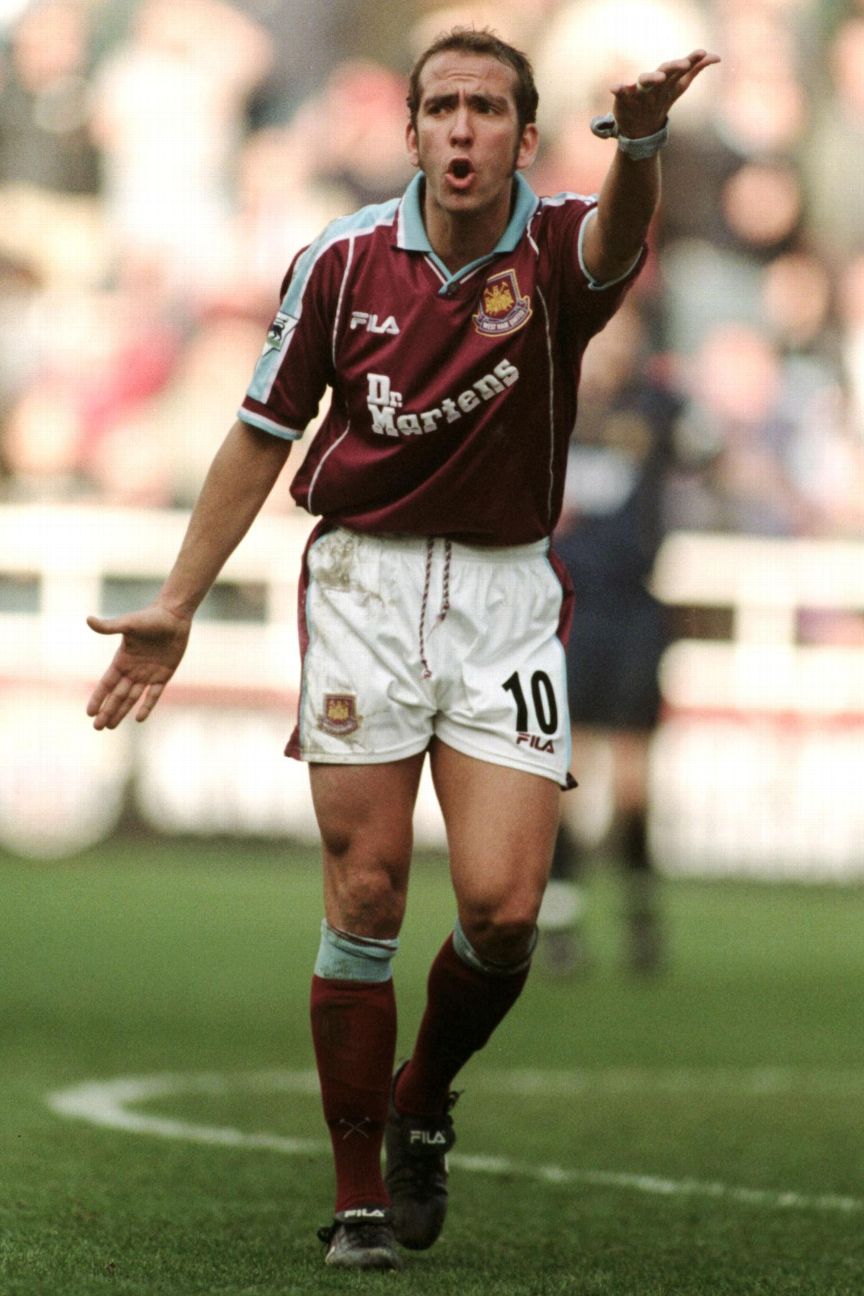
23. WEST HAM UNITED (home)
Seasons worn: 1999-2001
Notable players in this kit: Paolo Di Canio (pictured), Trevor Sinclair
For those who saw it at the time, it’s impossible to look at this West Ham kit without thinking of *that* Di Canio goal against Wimbledon. The mercurial Italian scored 47 Premier League goals in his 3½ years wearing claret and blue. He is still clinging on to that club record with Hammers captain Mark Noble just one goal behind him.
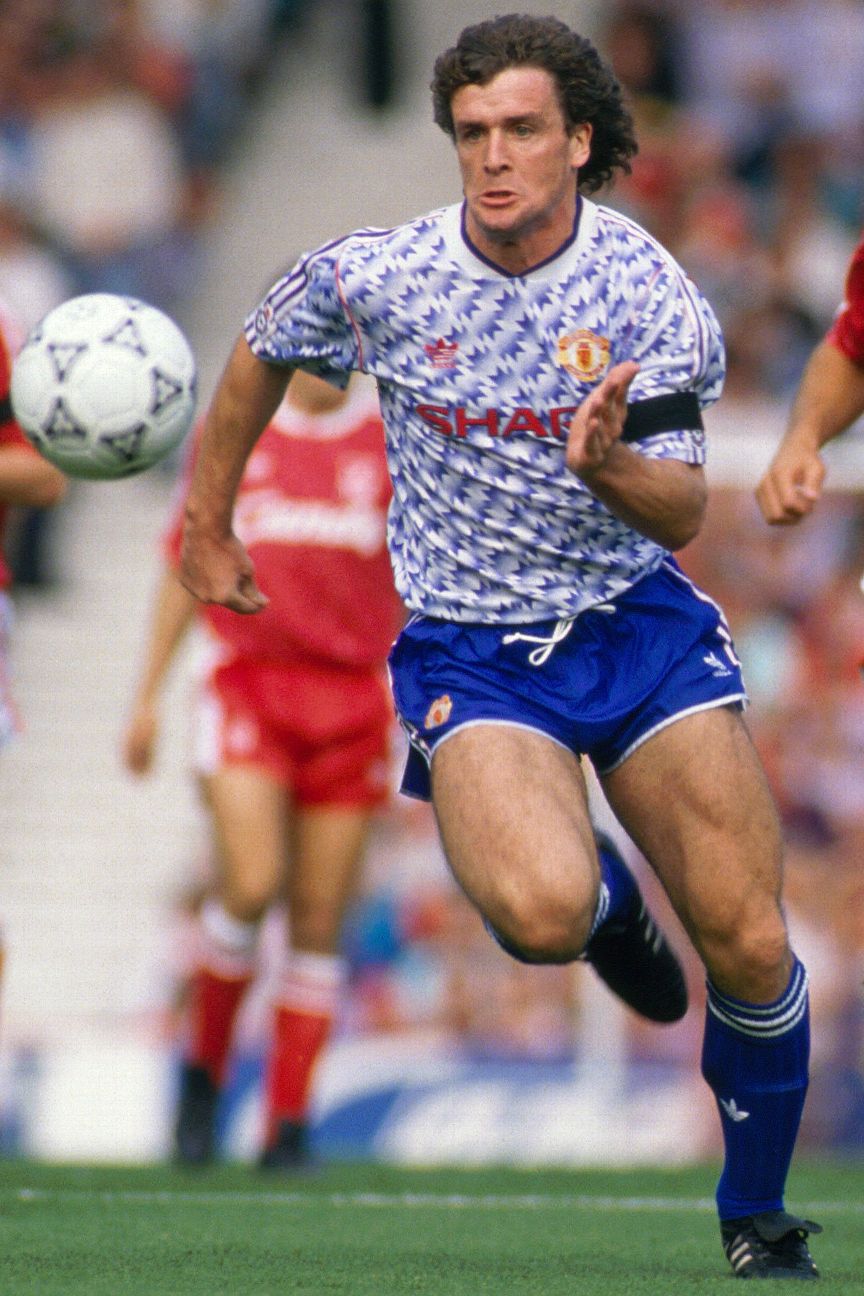
22. MANCHESTER UNITED (away)
Seasons worn: 1990-92
Notable players in this kit: Mark Hughes (pictured), Paul Ince, Brian McClair, Dennis Irwin
This snazzy blue-and-white zigzag design has aged remarkably well. United were on the cusp of greatness at the time having just won the FA Cup, their first trophy under Sir Alex Ferguson, and in the two years with this away kit, they won the Cup Winners’ Cup, League Cup and European Super Cup. The following season, they won the first of their 13 league titles under Ferguson.

21. AS ROMA (third)
Seasons worn: 2019-20
Notable players in this kit: Justin Kluivert (pictured), Edin Dzeko, Chris Smalling
This kit somehow manages to be incredibly retro but also very modern at the same time. From the chunky collar to the old-school Nike logo, this shirt ticks every box for your kit-loving millennial. There is a subtle pattern in the fabric that features elements of several iterations of Roma’s badge, including the iconic Lupetto («little wolf») and the club’s initials.
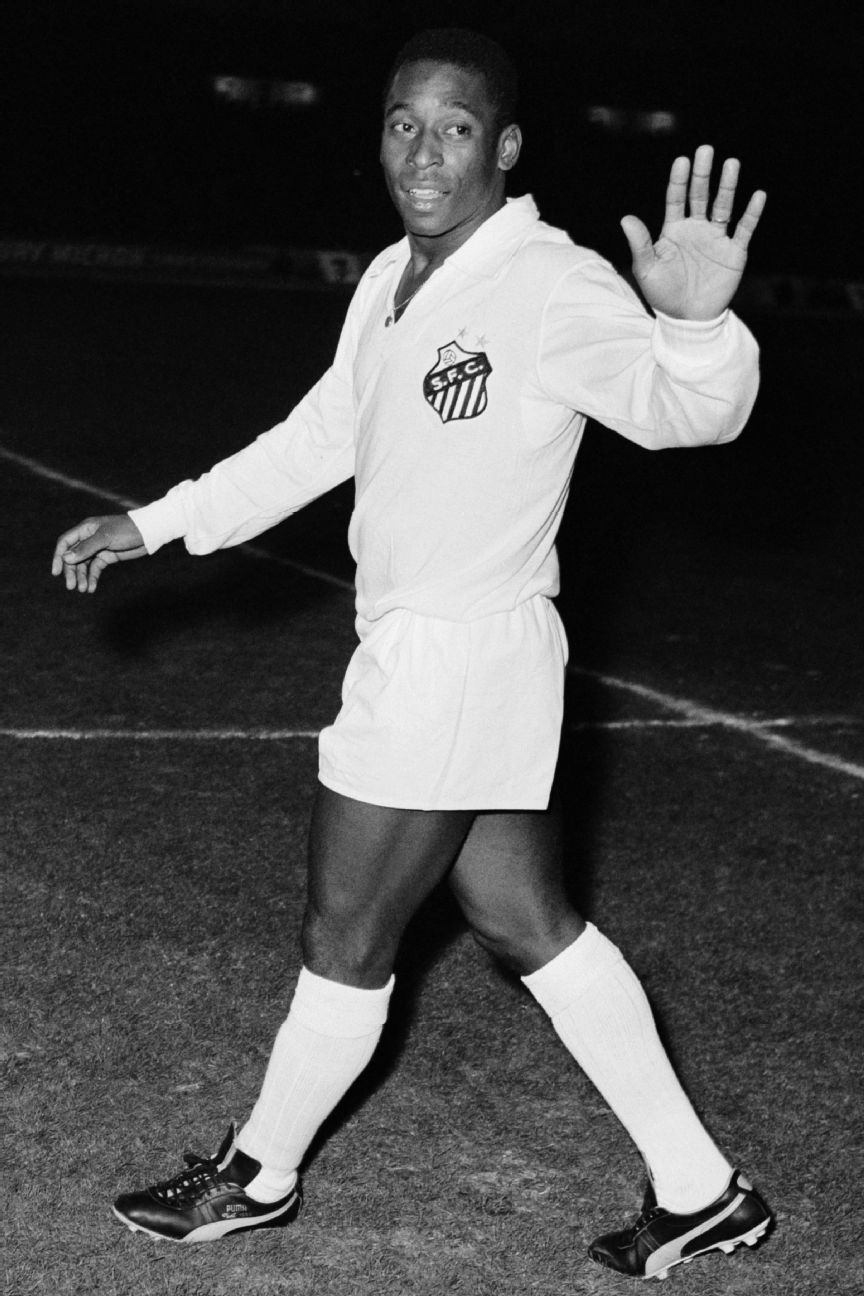
20. SANTOS (home)
Seasons worn: 1963-66
Notable players in this kit: Pele (pictured)
Shortly after Santos were founded in 1912 their owners decided to change the club’s colours from white, azure blue and golden lemon to a simpler white with black trim. Thank goodness they did. This mid-’60s kit, with its plunging V-neck and eye-catching black badge, was worn with distinction by a young lad called Pele.
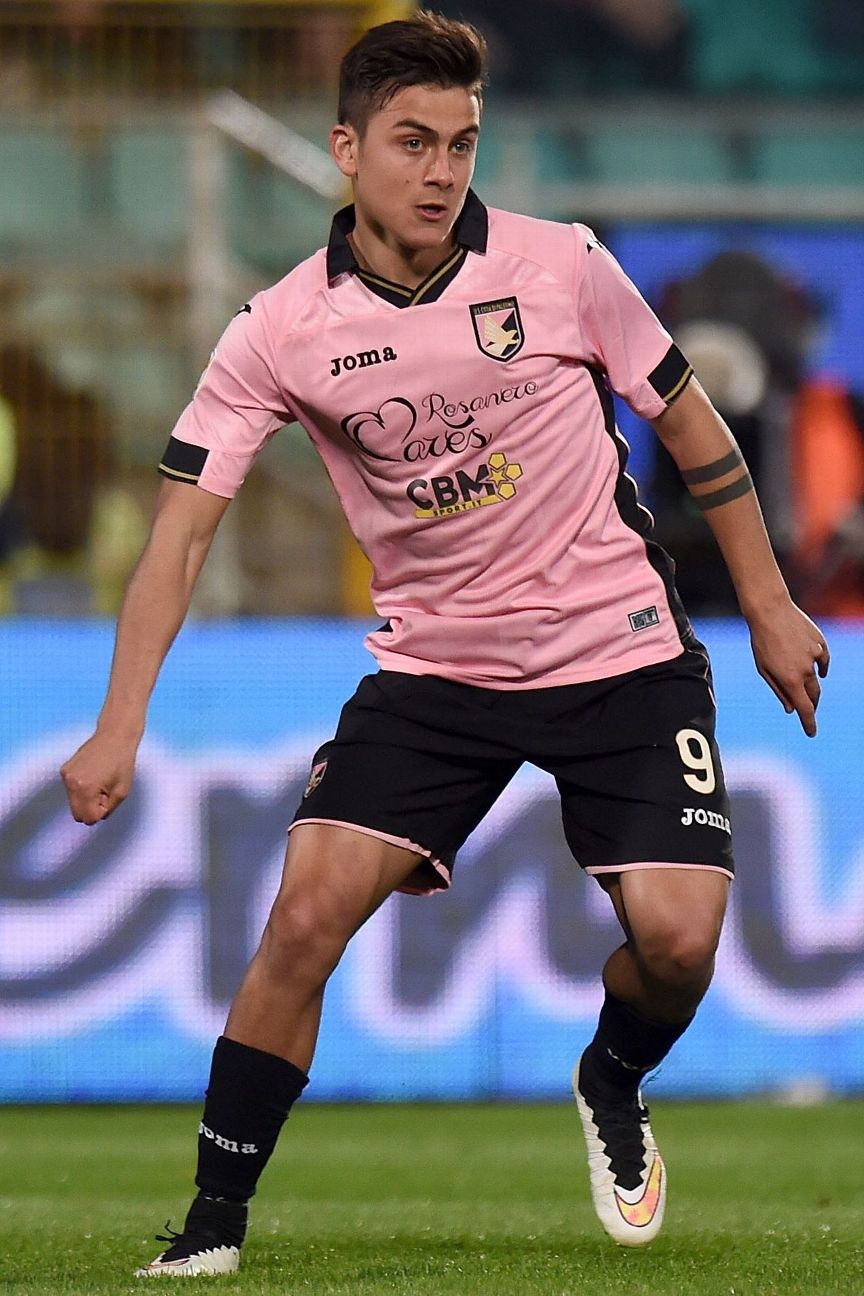
19. PALERMO (home)
Seasons worn: 2014-15
Notable players in this kit: Paulo Dybala (pictured)
Get ready for the most poetic colour choice of any team ever. Palermo had previously worn red-and-blue shirts, but Count Giuseppe Airoldi, a prominent founding member of the club, suggested pink and black as they are «colours of the sad and the sweet» and would suit a football team with «results as up and down as a Swiss clock.» You could pick any Palermo kit really, but this one from 2014-15 wins it for us.
18. BARCELONA (home)
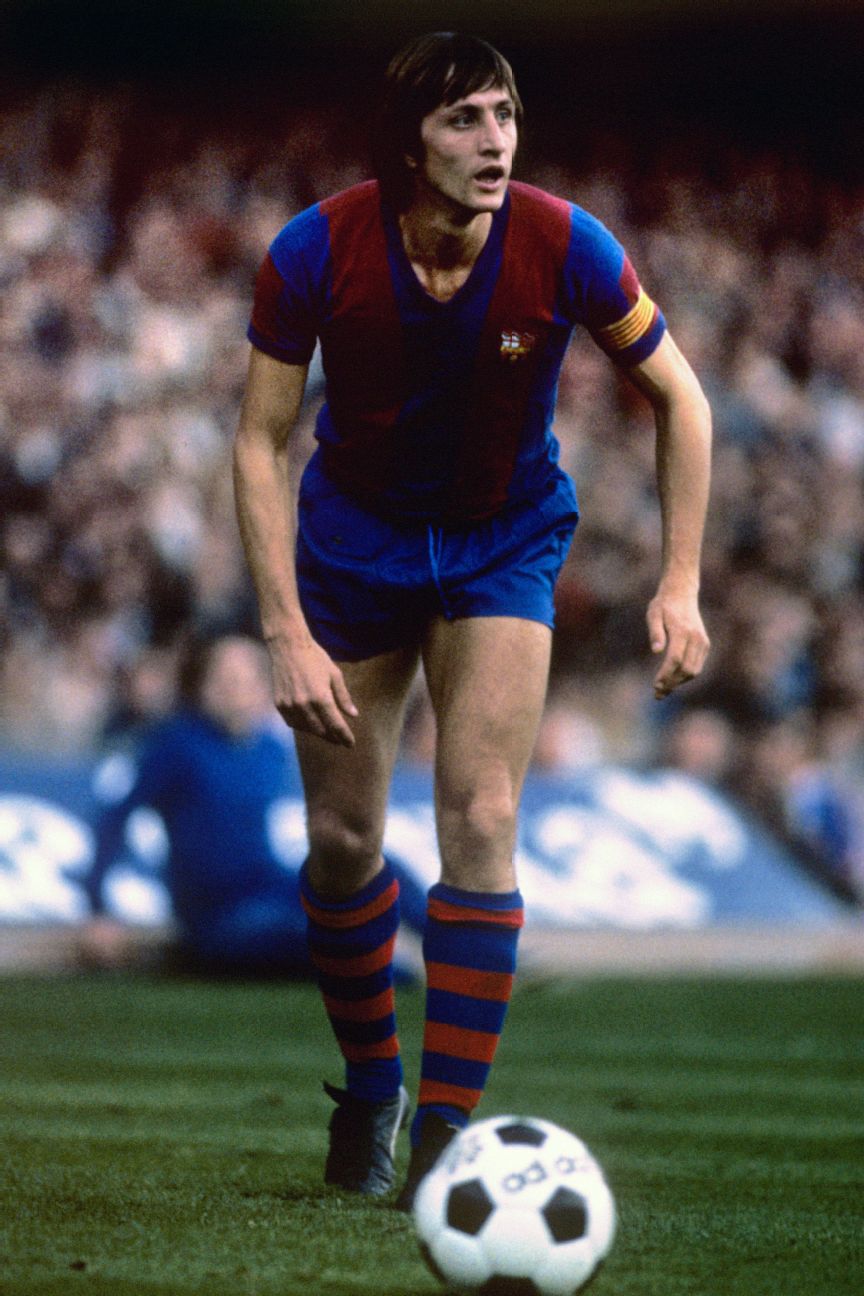
Seasons worn: 1976-78
Notable players in this kit: Johan Cruyff (pictured), Johan Neeskens
Barcelona do red-and-blue better than any other. At the time of this kit there were no sponsors (which Barca resisted all the way into the 21st century) or even kit manufacturer logos. The only thing that seemed to change was the collar, which went from V-neck to rounded and back again. Barca didn’t win much during this period, despite having the likes of Cruyff and Neeskens in their ranks, but they looked great nonetheless.
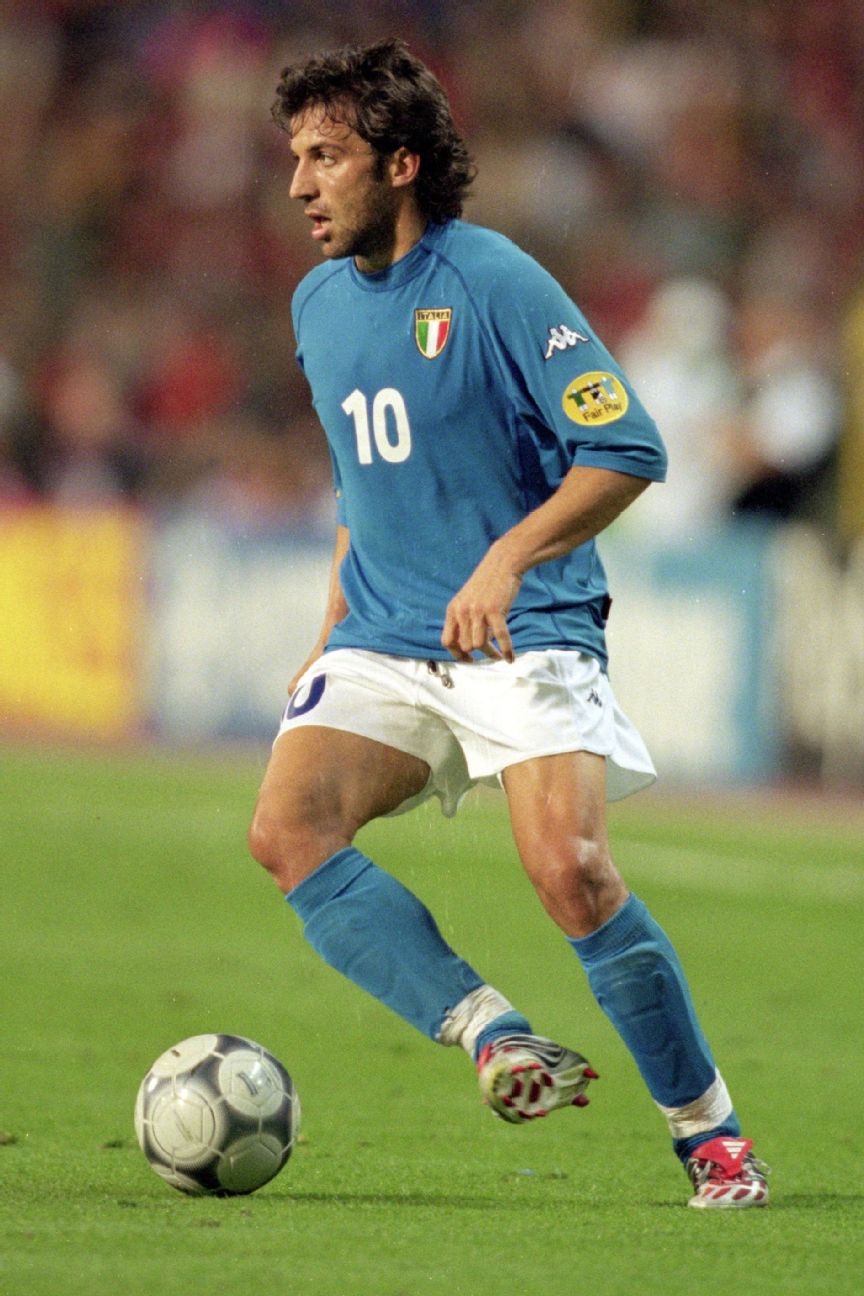
17. ITALY (home)
Seasons worn: Euro 2000
Notable players in this kit: Alessandro Del Piero (pictured), Francesco Totti, Alessandro Nesta, Fabio Cannavaro, Paolo Maldini
The ’90s was a decade of near-misses and disappointments for Italy on the pitch, but it gave them some incredible kits, and that continued into the new millennium with their much-hyped Euro 2000 shirts. los Azzurri went from Nike back to Italian brand Kappa, who started the trend for slimmer-fitting shirts with these skin-tight «Kombat» kits. The players all wore one size up to get a comfy fit and it nearly paid off as they reached the Euro 2000 final, but lost in extra time to world champions France.
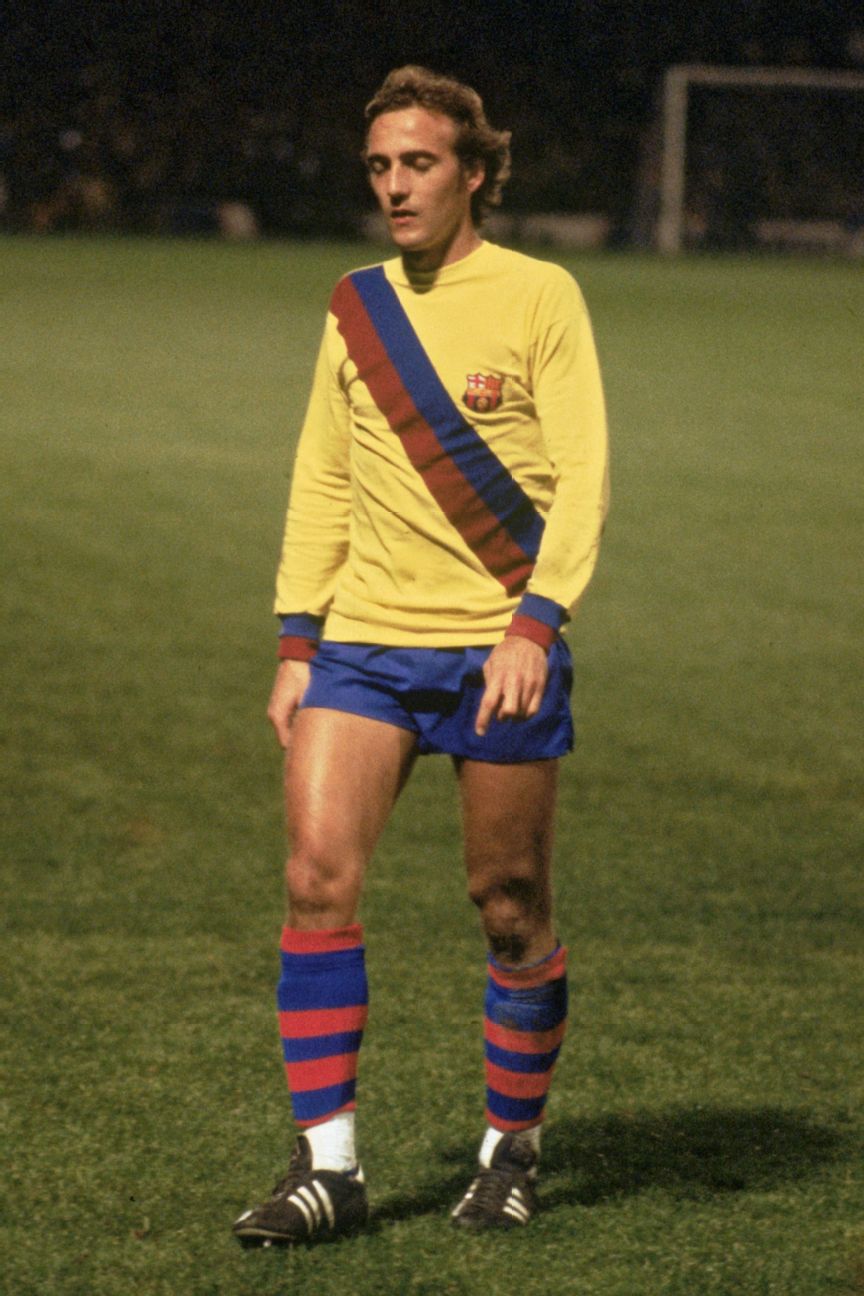
16. BARCELONA (away)
Seasons worn: 1975-76
Notable players in this kit: Johan Neeskens (pictured), Johan Cruyff
Back to Barcelona for this iconic away strip, which proudly displays the club’s heritage with the colours of Catalonia’s Senyera flag — yellow, red and blue — into a classic sash. This colour combination has been used a fair few times since, including another sash design this season, but the stripped-back ’70s version with red-and-blue cuffs and no collar can’t be beat.

15. BOCA JUNIORS (Home/Away)
Seasons worn: 1981-82
Notable players in this kit: Diego Maradona (pictured)
Maradona only spent one season at Boca Juniors at the start of his career (he would return toward the end), but what a season. He helped them to the Argentina title and a 3-0 win over archrivals River Plate in his first Superclasico. He did it all in this Adidas kit, with its thick yellow band, no sponsor and four stars bearing the initials «CABJ» (Club Atletico Boca Juniors). The club originally played in sky blue, but settled on blue and yellow in the early 20th century after taking inspiration from the Swedish flag flying on a ship docked in the Buenos Aires port of La Boca.

14. PARMA (home)
Seasons worn: 1998-99
Notable players in this kit: Fabio Cannavaro (pictured), Juan Veron, Lilian Thuram, Hernan Crespo
Parma were historically a relatively small and unsuccessful Italian club, but they burst on to the scene in 1990 by landing promotion to the top flight for the first time. Over the next decade they won seven trophies including both the UEFA Cup and Coppa Italia in 1998-99, though this marked the first time they had ever worn yellow-and-blue hoops. Their traditional home kit of white shirts with blue-and-yellow trim or a navy cross was originally influenced by Juventus. But as the Turin giants had become their Serie A rivals in the ’90s, Parma made the change, as they wanted to forge their own identity.
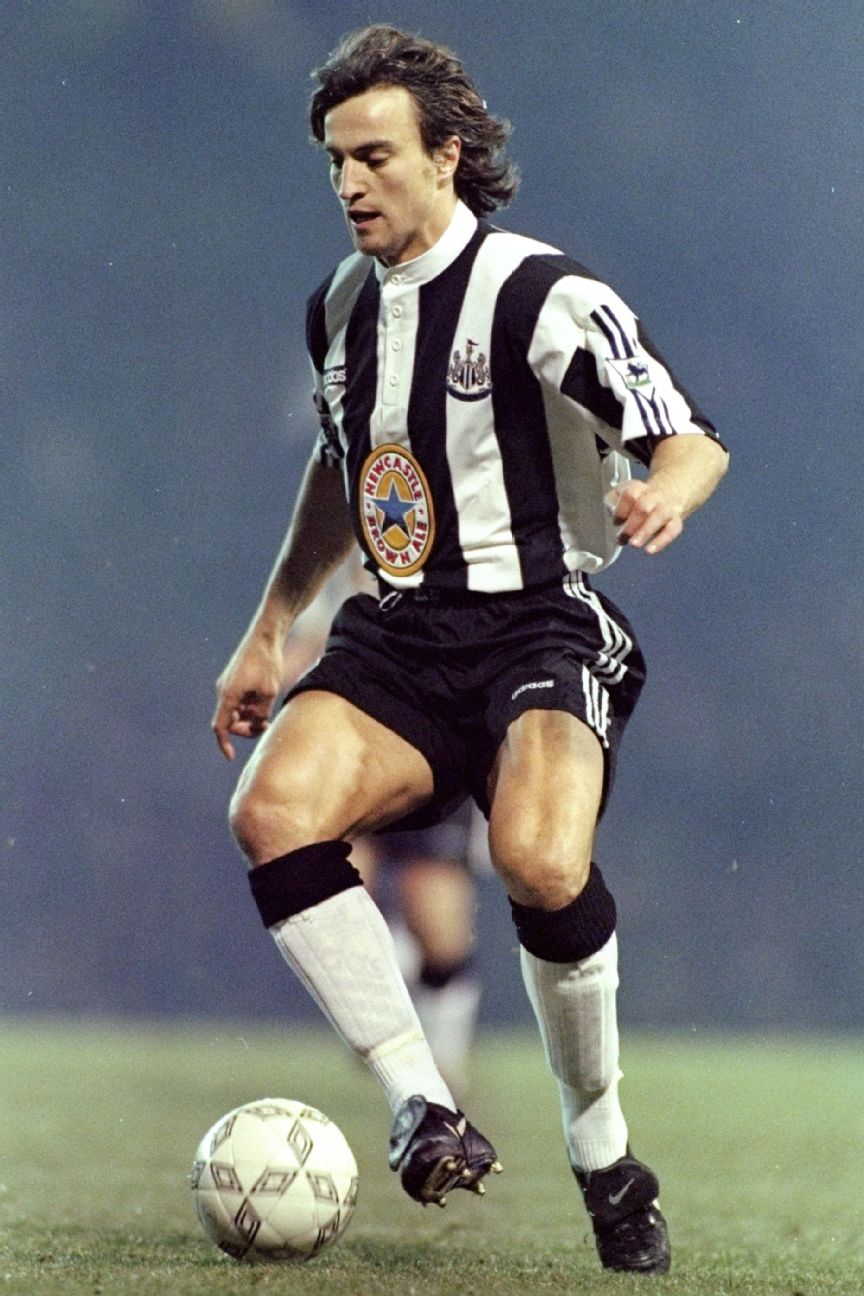
13. NEWCASTLE UNITED (home)
Seasons worn: 1995-97
Notable players in this kit: David Ginola (pictured), Alan Shearer, David Batty, Les Ferdinand, Faustino Asprilla
There is so much to love about this shirt; the black-and-white «bar code» stripes, that button-up collar that went halfway down the shirt, the sponsorship by Newcastle Brown Ale. Newcastle twice came close to winning the Premier League in this kit, and it was also their home kit at the time when Kevin Keegan had *that* outburst live on TV. He, and Newcastle, were never quite the same after that, and neither were the Magpies’ kits.
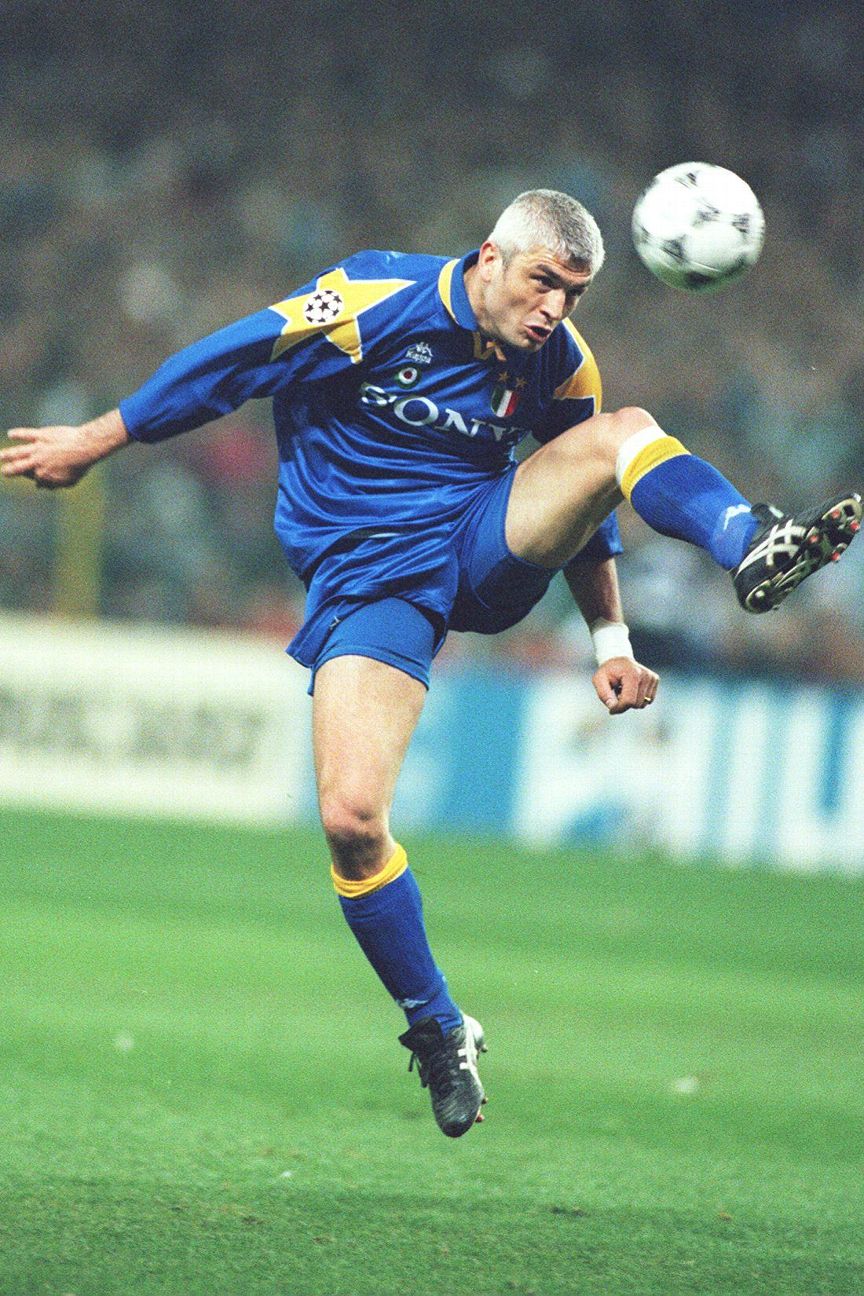
12. JUVENTUS (away)
Seasons worn: 1995-96
Notable players in this kit: Fabrizio Ravanelli (pictured), Alessandro Del Piero, Gianluca Vialli, Antonio Conte
It’s a tradition in Italian football that when you’ve won your 10th Serie A title you get to have a golden star on your jersey. Most teams put them modestly above their badge, but when you’re as confident as Juventus, why not slap giant stars on your shoulders? That’s exactly what shirt makers Kappa did for two seasons from 1994 to 1996, a spell where they won four trophies, including the Champions League in 1996. That shirt, with Sony replacing Danone as shirt sponsor, and the Scudetto badge under two more little gold stars rather than the Juventus logo, was sheer perfection.

11. ARGENTINA (home)
Seasons worn: World Cup 1982
Notable players in this kit: Ossie Ardiles (pictured), Diego Maradona, Mario Kempes, Daniel Passarella
Not a vintage World Cup for defending champions Argentina, as they were knocked out in the second group stage, but the kit they wore doing so was their best. los Albiceleste (white and sky blue) stripes had a new Argentina crest for that tournament and, unusually, squad numbers assigned in alphabetical order. Attacking midfielder Ossie Ardiles was No. 1 and goalkeeper Ubaldo Fillol took No. 7. A 21-year-old Maradona should have been No. 12 but was given his preferred No. 10, with Patricio Hernandez having to give that up.
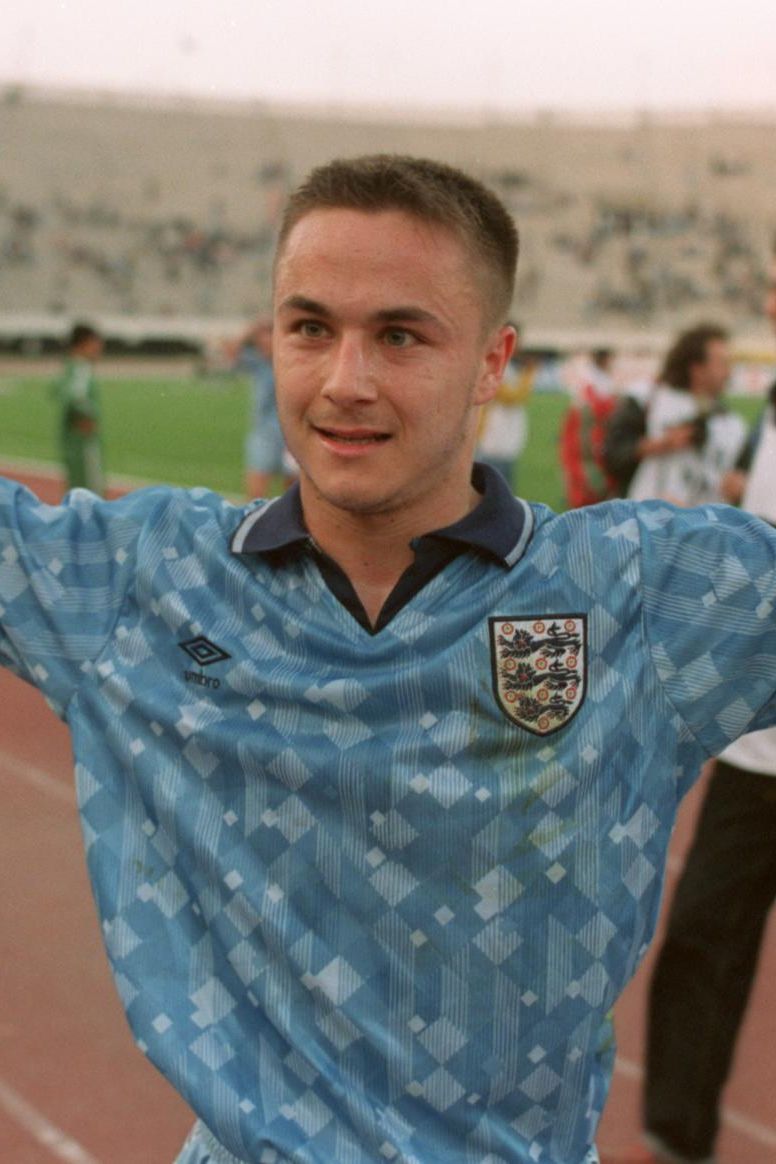
10. ENGLAND (third)
Seasons worn: 1991
Notable players in this kit: Dennis Wise (pictured), John Barnes, Gary Lineker
The only kit in the ranking that is more famous for being in a music video than worn on the pitch. New Order’s Bernard Sumner has actually worn this shirt as many times as the England players after he donned it in the video to «World In Motion,» England’s official 1990 World Cup song that included Barnes rapping. The blue jersey, with its multi-layered rhombus pattern, was officially the third kit for the tournament and was never worn in Italy. It was only ever worn once, for a Euro ’92 qualifier in Turkey a year later. England won 1-0, making Wise the only player to ever score a goal in this shirt.
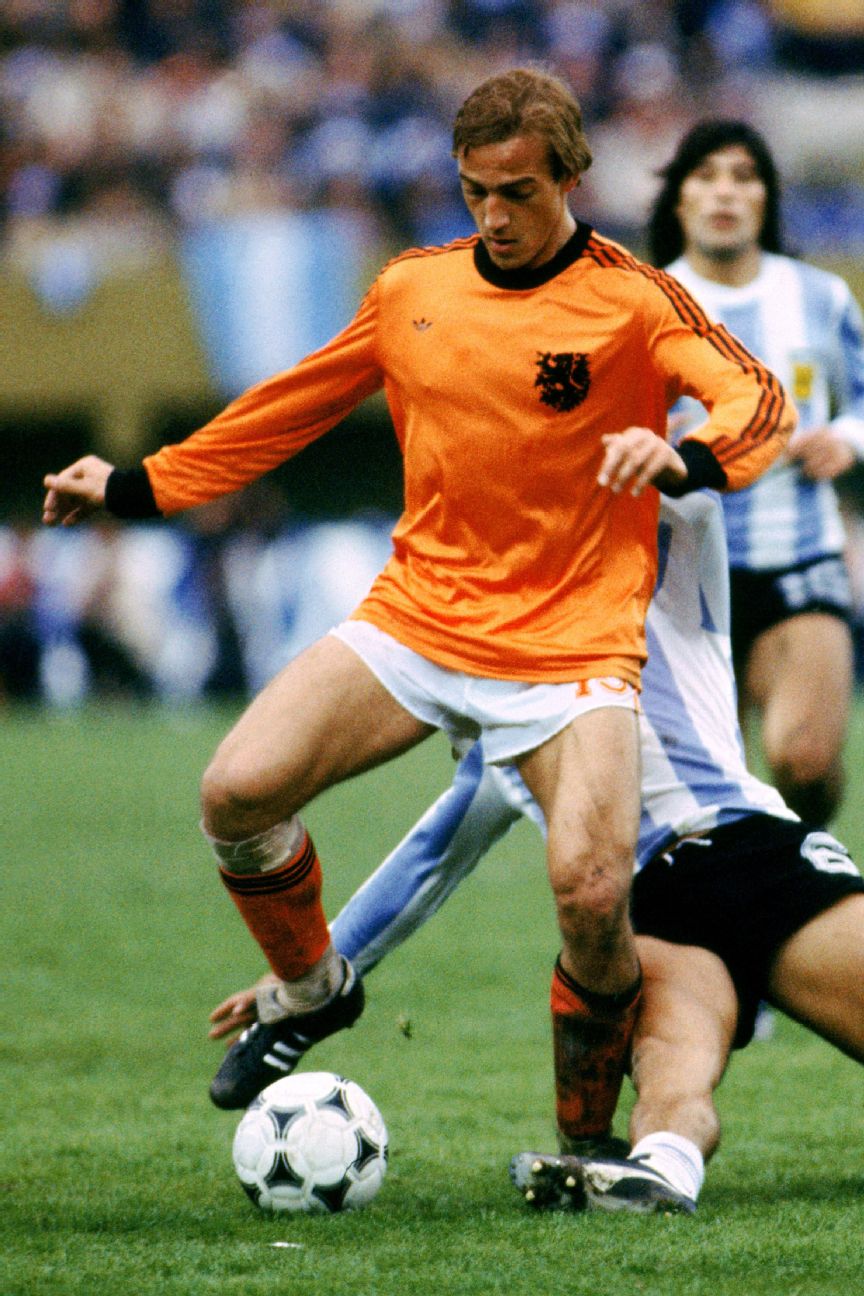
9. NETHERLANDS (home)
Seasons worn: World Cup 1978
Notable players in this kit: Johan Neeskens (pictured), Johnny Rep, Wim Jansen
Netherlands were one of the first teams to adopt Adidas in the early ’70s. Their striking orange kit with black trim has become iconic. While the team wore these tops with the classic three stripes down the arms, Cruyff’s only ever had two stripes because of a clash with his personal Puma deal. That was not an issue at the 1978 World Cup, as Cruyff didn’t go to Argentina. Despite guiding the Dutch to the finals, he quit international football after a terrifying kidnap attempt at the family home when he was held at gunpoint. Netherlands made the final but lost to the hosts.
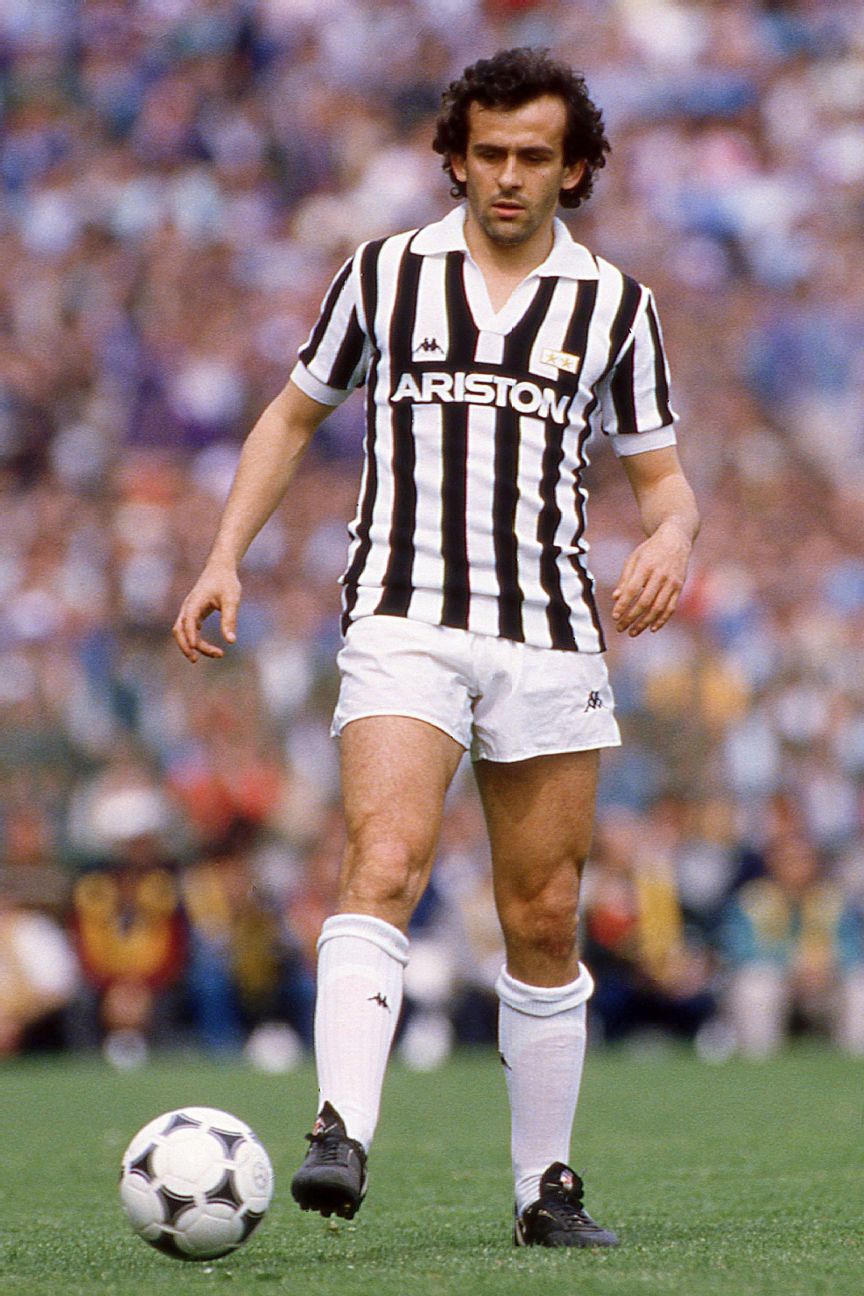
8. JUVENTUS (home)
Seasons worn: 1985-86
Notable players in this kit: Michel Platini (pictured), Gaetano Scirea, Michael Laudrup
No one is better known for black-and-white stripes than Juventus, even though they got the design from English club Notts County back in 1903, having previously worn pink kits that kept fading in the wash. The best has to be this one from the mid-’80s. And in Platini, a star to do the Bianconeri kit justice, two stars to represent more than 20 league titles, giant collar, bold sponsor logo of Italian heating systems supplier Ariston, and the Kappa icon. They won Serie A for the 22nd time wearing this, and Platini retired a year later.
7. ARSENAL (away)
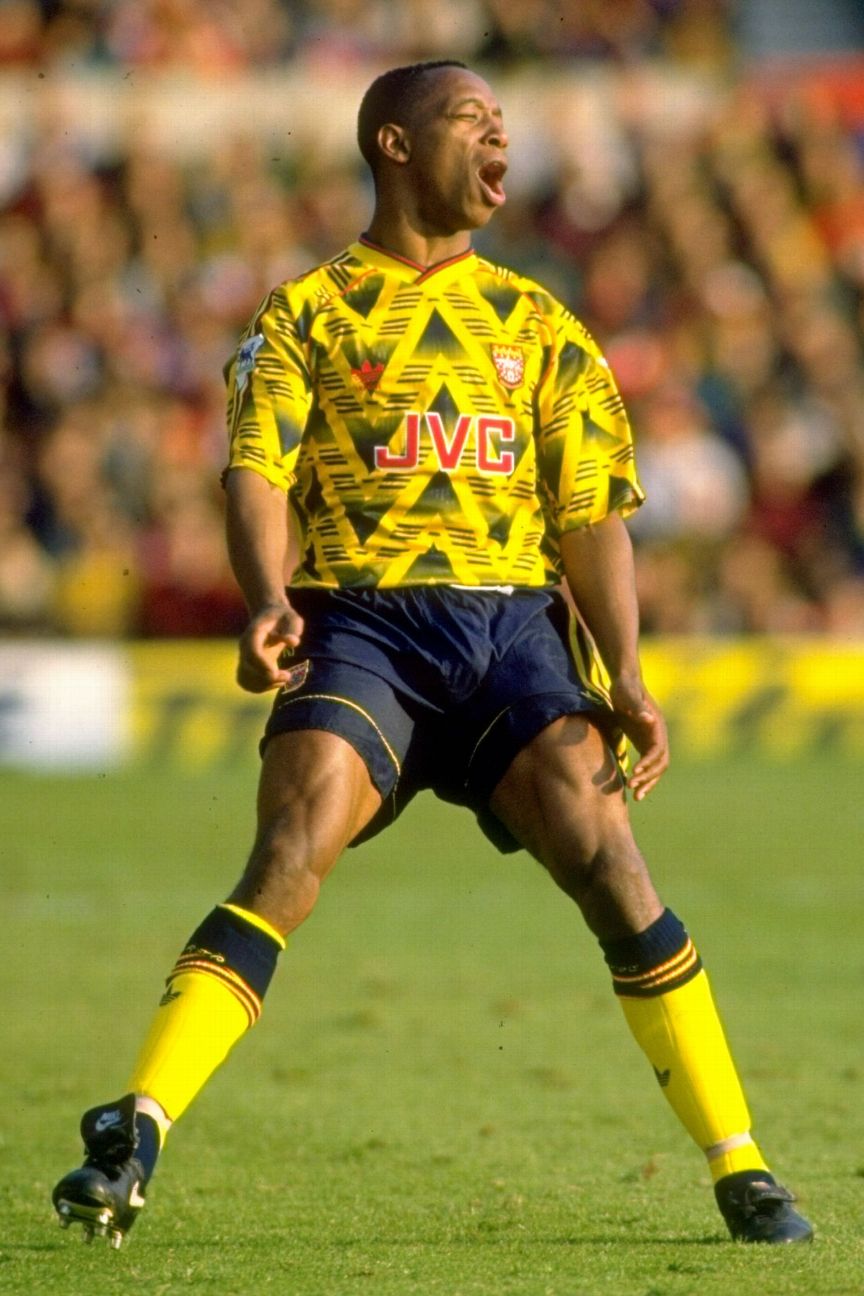
Seasons worn: 1991-93
Notable players in this kit: Ian Wright (pictured), Tony Adams, Paul Merson
Arguably the most memorable English kit of the ’90s was another that made the journey from figure of fun to cult classic. Known as the «Bruised Banana,» which sounds more like a wrestling move than a football shirt, the jersey took its nickname from its strong black-and-yellow horizontal zigzag. Arsenal won the FA Cup and League Cup with stars like Wright wearing it, and it is linked inextricably with that success. Arsenal released a new version last summer. Such was the appetite among supporters that the club’s website crashed within minutes of it going on sale.

6. CRYSTAL PALACE (away)
Seasons worn: 1975-77
Notable players in this kit: Dave Swindlehurst (pictured), Peter Taylor
We’ve had a lot of sashes on this list, but the team most associated with it in England is probably Crystal Palace. They are the only team in this ranking to feature while playing in the third tier, as they were in 1976 when they first wore this classic red-and-blue sash on white. It was designed by flamboyant manager Malcolm Allison, who had also changed the club’s colours from claret and light blue to scarlet and royal blue three years earlier. They played in the FA Cup semifinals, the last team from that far down the league to do so, wearing this away kit. It was so popular they made it their home kit for the following season, and within two years were in the top flight. The club badge and kit-maker logo swapping sides just adds to the magic.
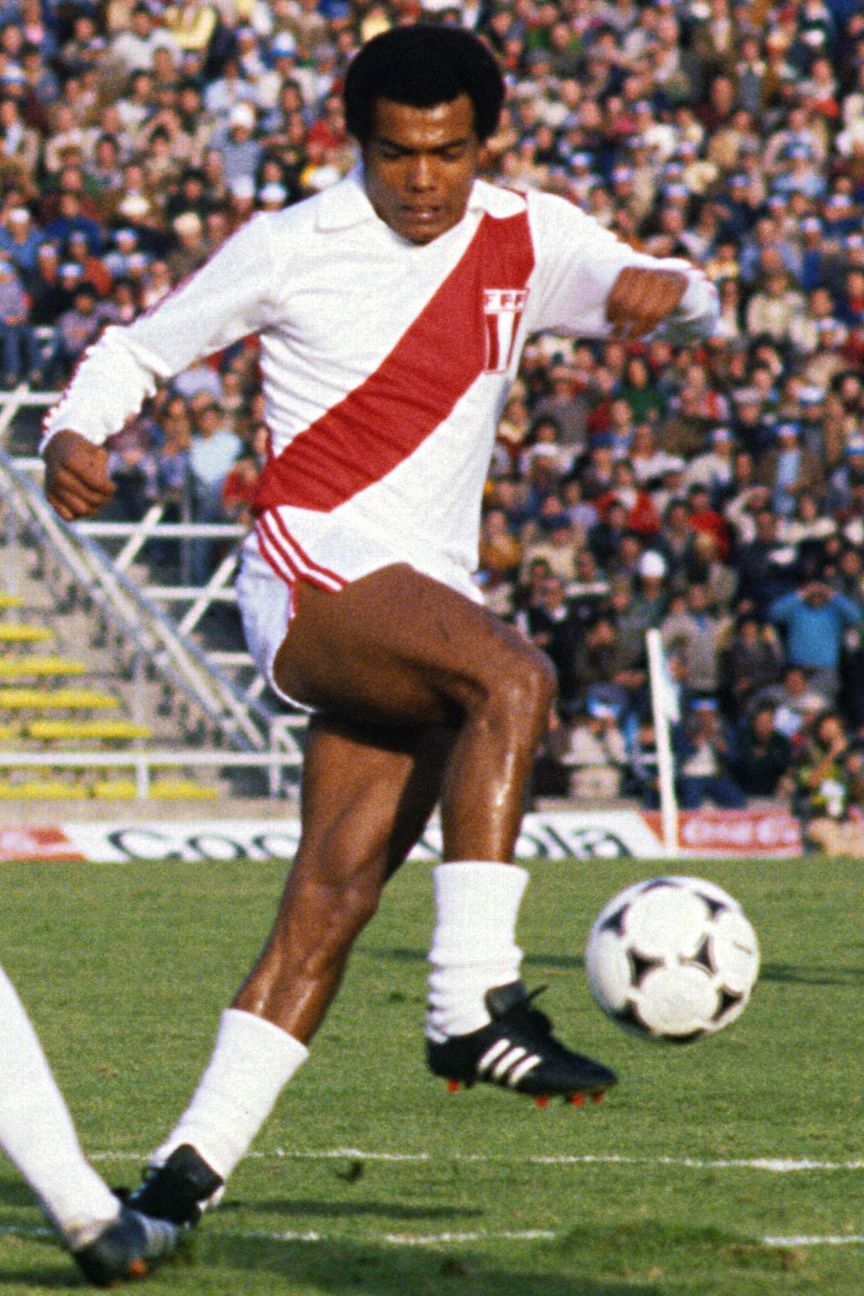
5. PERU (home)
Seasons worn: World Cup 1978
Notable players in this kit: Teofilo Cubillas (pictured)
The global pioneers of the sash were Peru, with a look so iconic it is now woven into the country’s fabric. According to Peruvian historian Jaime Pulgar-Vidal Otalora: «The national team’s jersey has been part of Peru’s identity, so much so that many think it’s a national symbol.» Peru have been wearing a red sash on white since the 1936 Olympics in Berlin, but it was the 1970 World Cup — the first on colour TV — that brought it to the masses. However, it was the 1978 tournament in Argentina where they had their first official kit-maker in Adidas, and they really nailed it.
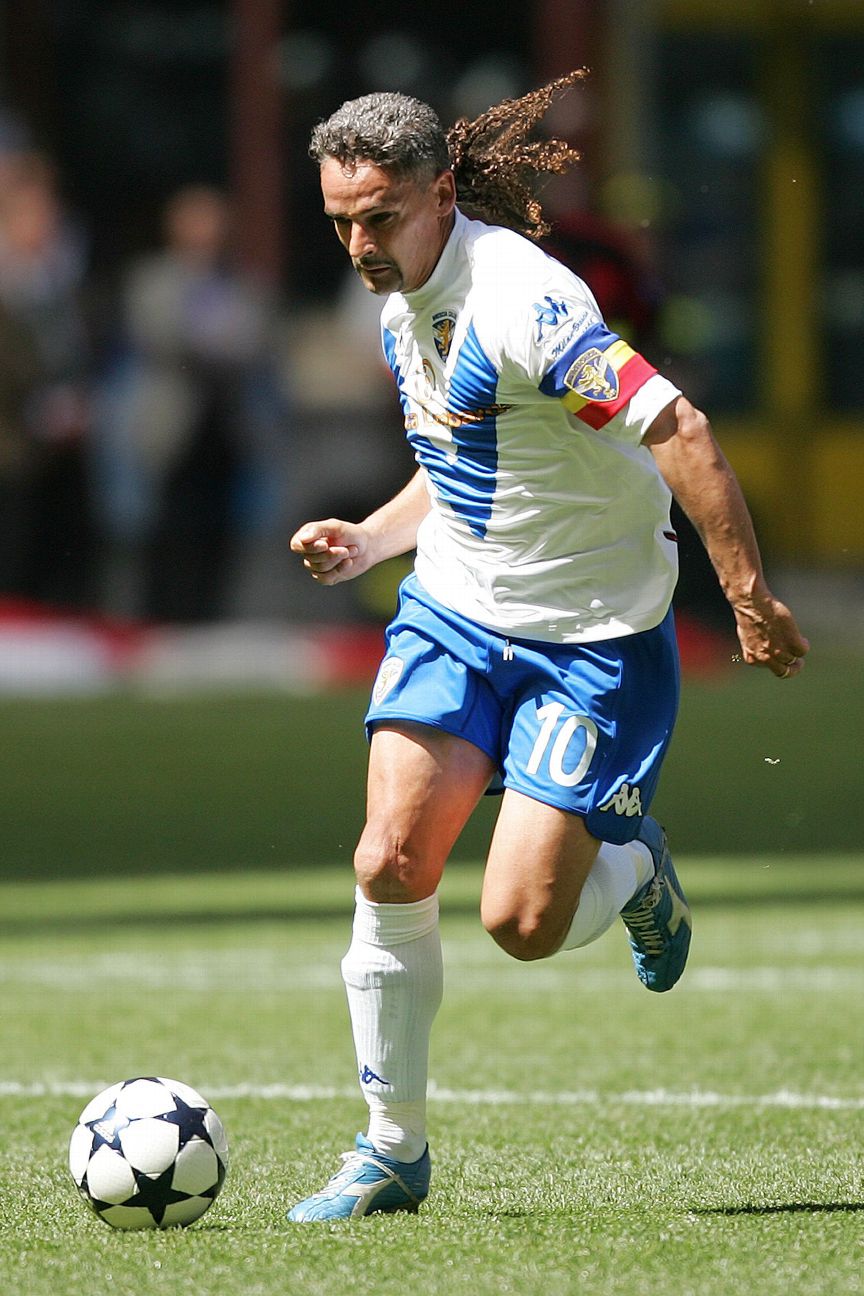
4. BRESCIA (away)
Seasons worn: 2003-04
Notable players in this kit: Roberto Baggio (pictured), Luigi Di Biagio
This kit is iconic for two main reasons; the «V» on the front and man who wore No. 10 on the back. This was Baggio’s last season as a footballer after a 22-year career and the 36-year-old led Brescia to 11th in Serie A, scoring 12 goals in 26 games. Their kits that year were made by Kappa and, while it was the classic white chevron on blue for the home kit, it was the away kit that caught the eye. Combined with Baggio’s multi-coloured captain’s armband and that ponytail, the kit was a classic. The designs stems back to 1927 when they added «V» so that the team could use a new stadium that was built for another team called Virtus. Brescia retired his No.10 shirt after this season, and quite right too.
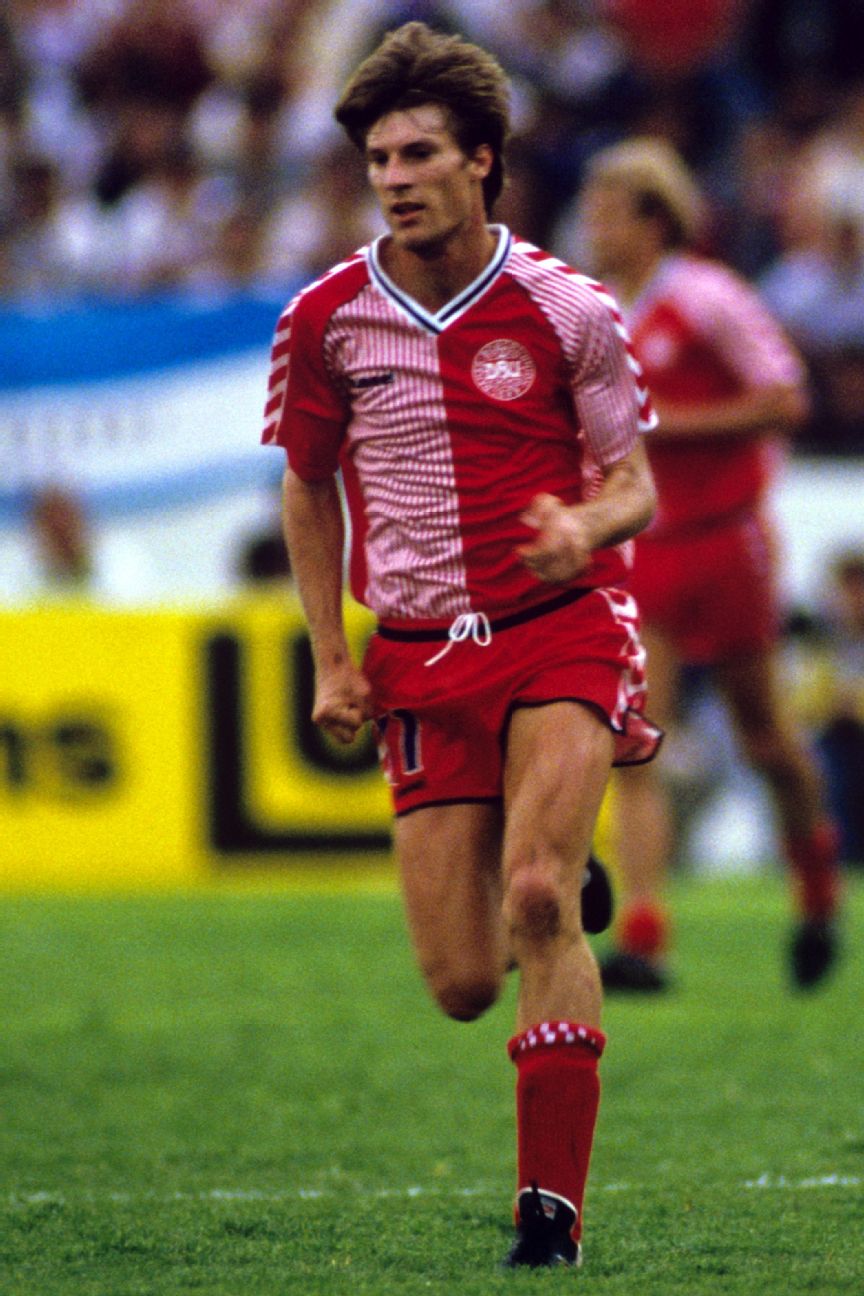
3. DENMARK (home)
Seasons worn: World Cup 1986
Notable players in this kit: Michael Laudrup (pictured), Morten Olsen
Hummel’s bold design for Denmark’s 1986 World Cup campaign was initially met with anger but is now beloved. It quickly became known as the «Carnival Suit» among indignant journalists, with one, Per Hoyer Hansen, saying: «Others would use such rags for kitchen drapes.» The players were less damning, with captain Morten Olsen calling it «a breath of fresh air.» It didn’t matter what they thought, as the Danish fans in Mexico absolutely loved the white-and-dark red pinstripe blocks with chevrons down the arms, decking themselves out in homemade pinstripes. The template was later adapted for Aston Villa, Southampton, Coventry City, Feyenoord and Sporting Lisbon but the Danes wore it best.
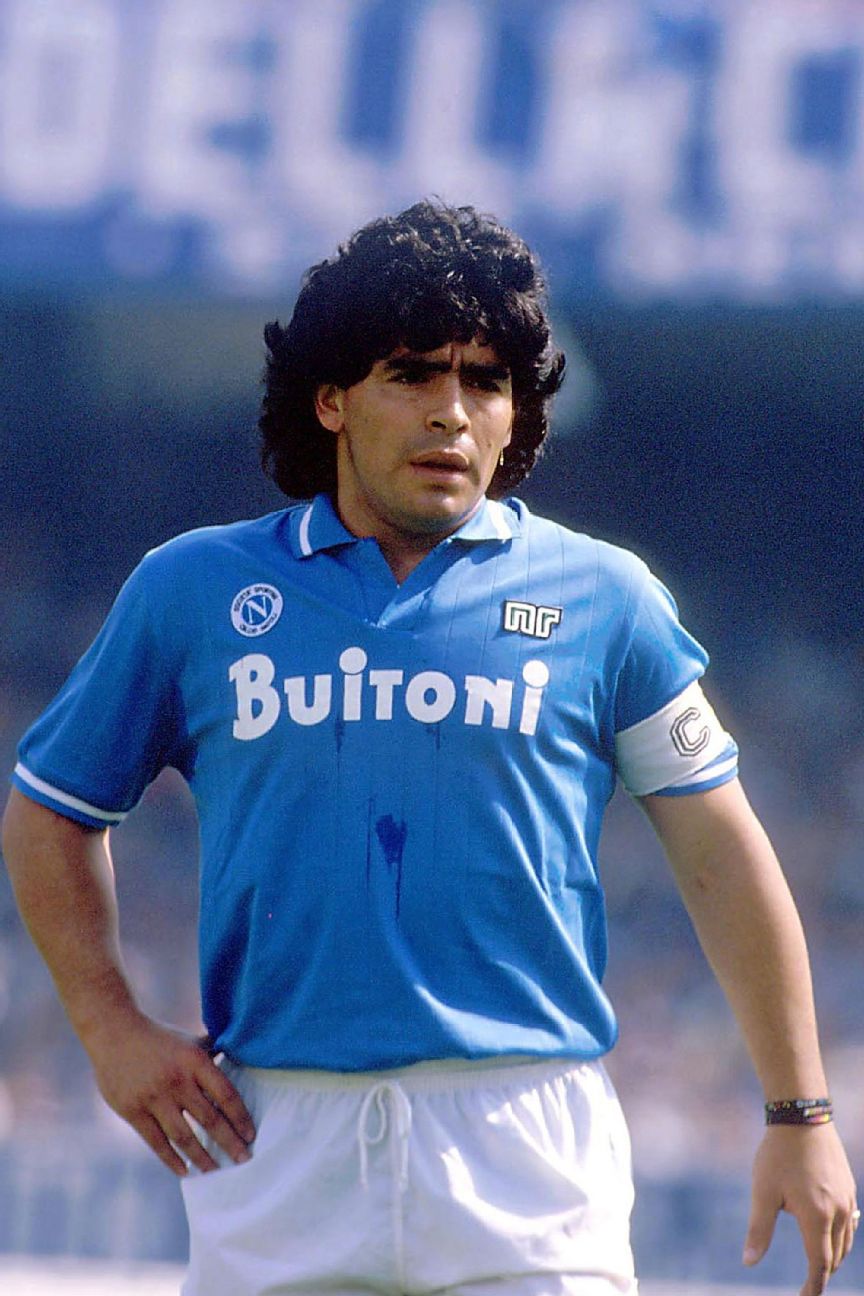
2. NAPOLI (home)
Seasons worn: 1985-86
Notable players in this kit: Diego Maradona (pictured)
Some kits are synonymous with a single player, and with any mid-’80s Napoli shirt, it can only be one man you think of: Maradona. He arrived in Naples in 1984 after a tumultuous two seasons at Barcelona, and within three years had led the Azzurri to their first ever championship. The light blue, short-sleeved, polo-style home shirt sponsored by chocolate bar Mars may be the one everyone remembers, it was actually the kit bearing the name of pasta sauce-makers Buitoni that they were wearing when they lifted their first title in 1987.
Note the lovely switch of the Napoli badge and kit-maker Ennerre. They were the company of former footballer Nicola Raccuglia, who pioneered designs that were more like casual clothes. He made most top Italian clubs’ kits during this period and used his initials on the kits instead of a logo (Ennerre literally translating as «NR» in Italian).
1. SAMPDORIA (home)
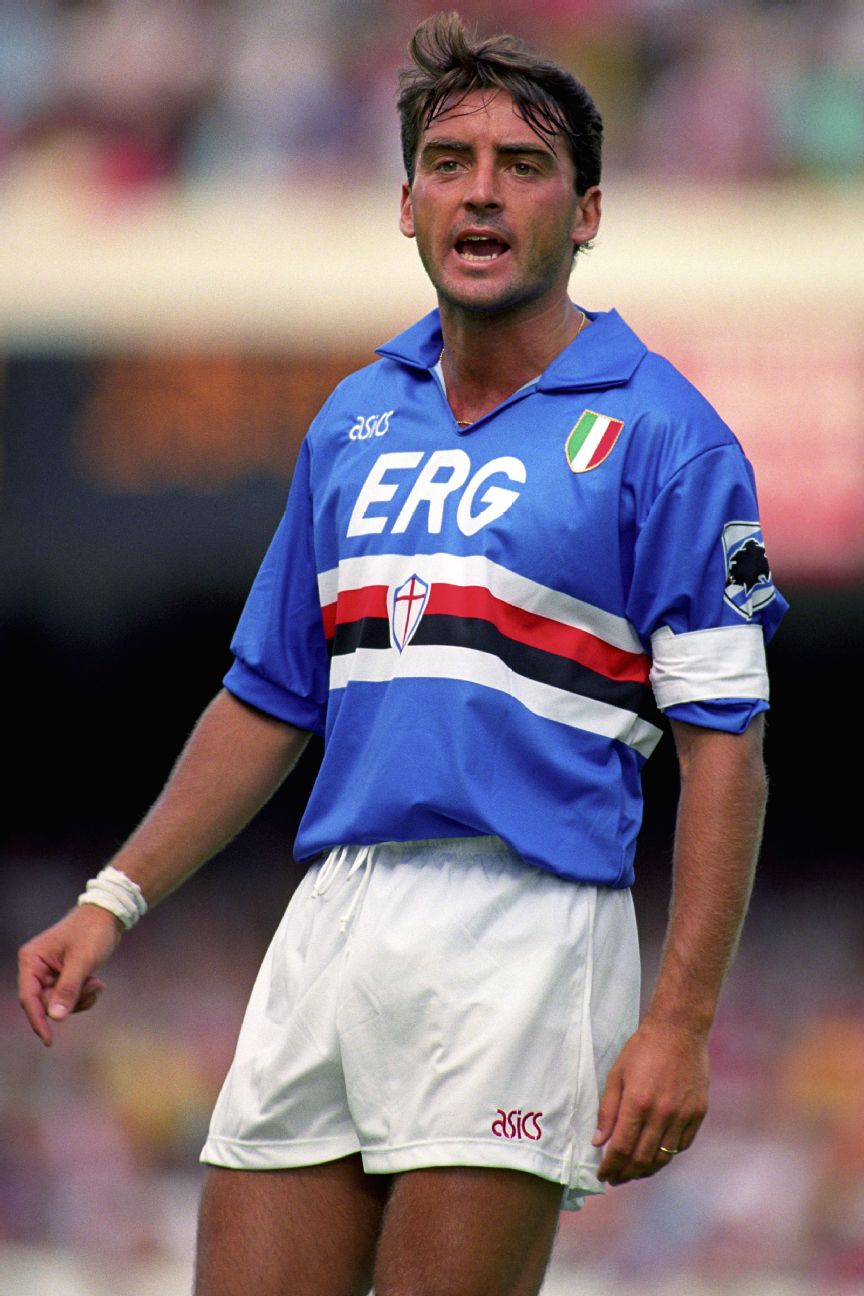
Seasons worn: 1990-92
Notable players in this kit: Roberto Mancini (pictured), Gianluca Vialli, Pietro Vierchowod, Attilio Lombardo
A fourth Italian kit in the top 10 and an instantly recognisable one to top our ranking. Sampdoria might not have the trophy haul of Juventus or Milan, but they have this incredible shirt to make up for that. The white, black and red band across the torso on a blue shirt is a nod to the club’s origins with a merger between two teams; Sampierdarenese (red and black) and Andrea Doria (white and blue with a shield bearing a St. George cross).
This particular Asics kit was also worn during Samp’s most successful period, during which they won their first and only Scudetto. That silhouette on the shoulder is of Baciccia, whose name is derived from the Italian name for John the Baptist, the patron saint of both sailors and the city of Genoa. He was unveiled in 1980 and referenced, bizarrely, by Donald Duck in the pages of Topolino, a licensed Disney comic sold by Panini. Baciccia was placed on the sleeves by Errenne (him again) in 1980, leaving space for the Italian shield that teams who have won the Scudetto get to wear the following season on the chest, as Mancini is modelling here.
[ad_2]









